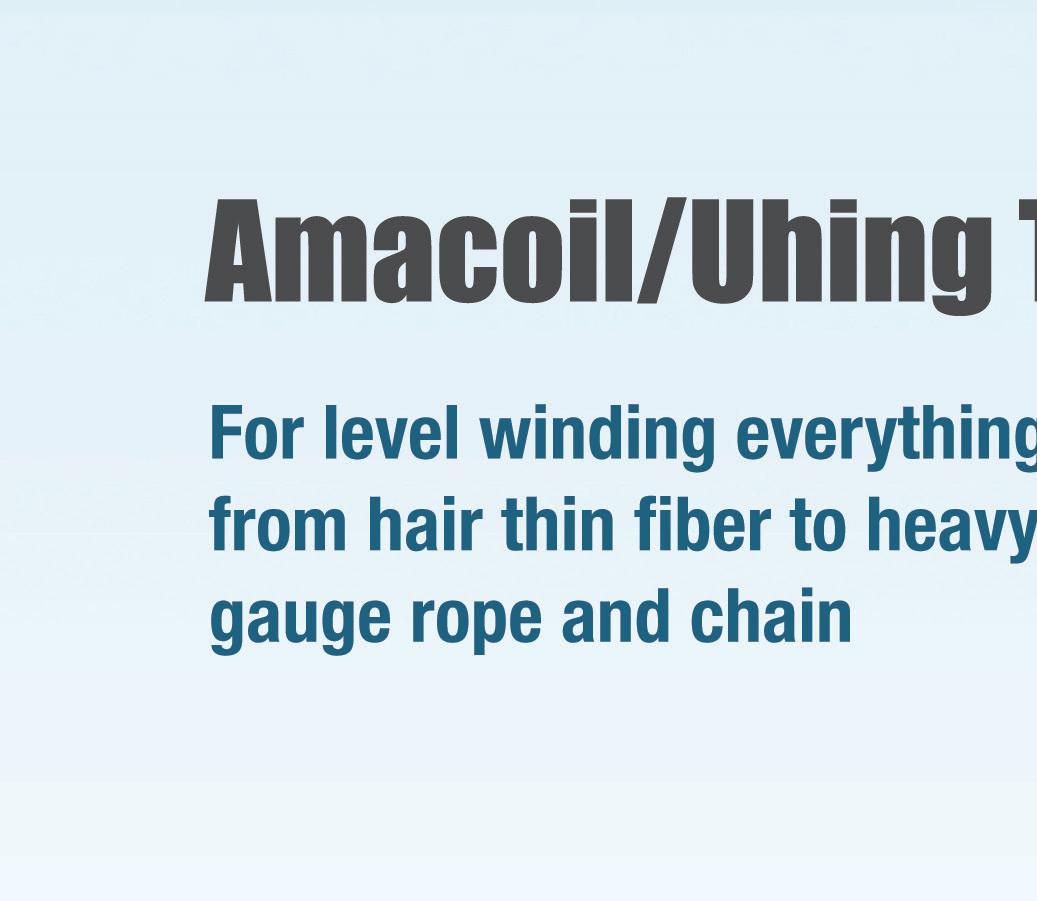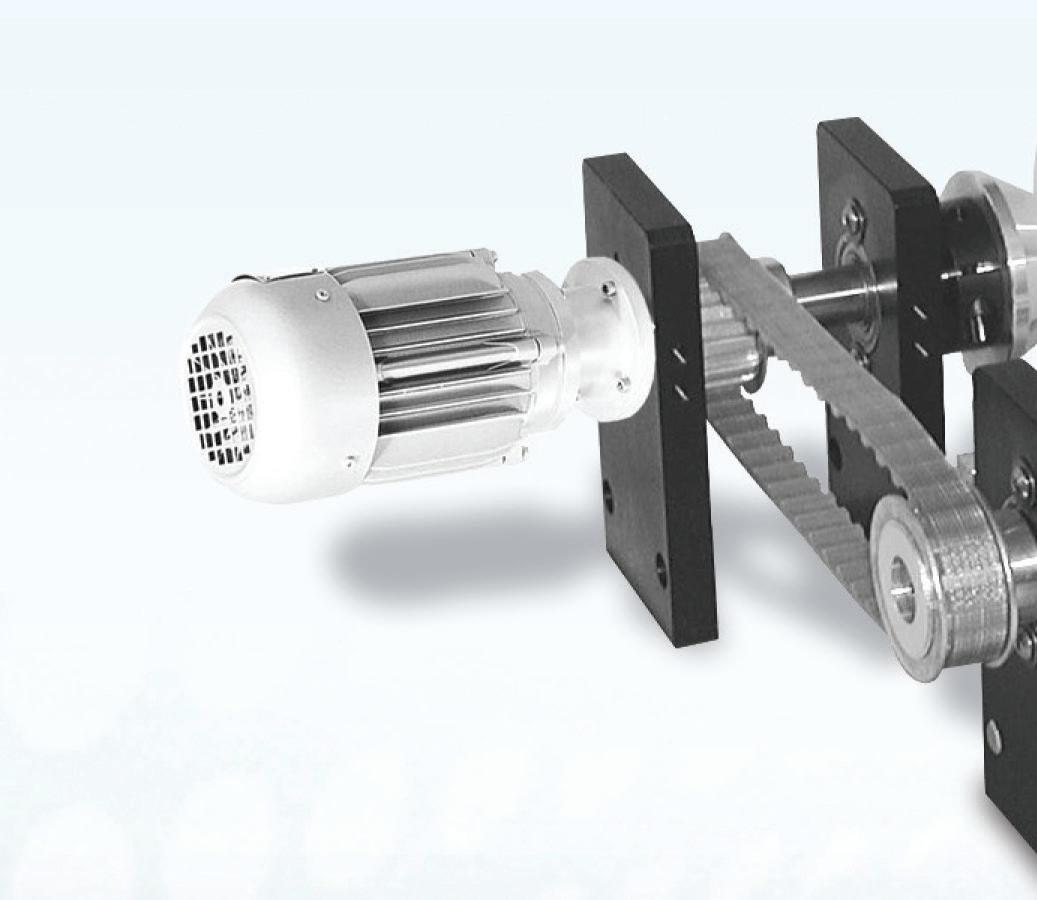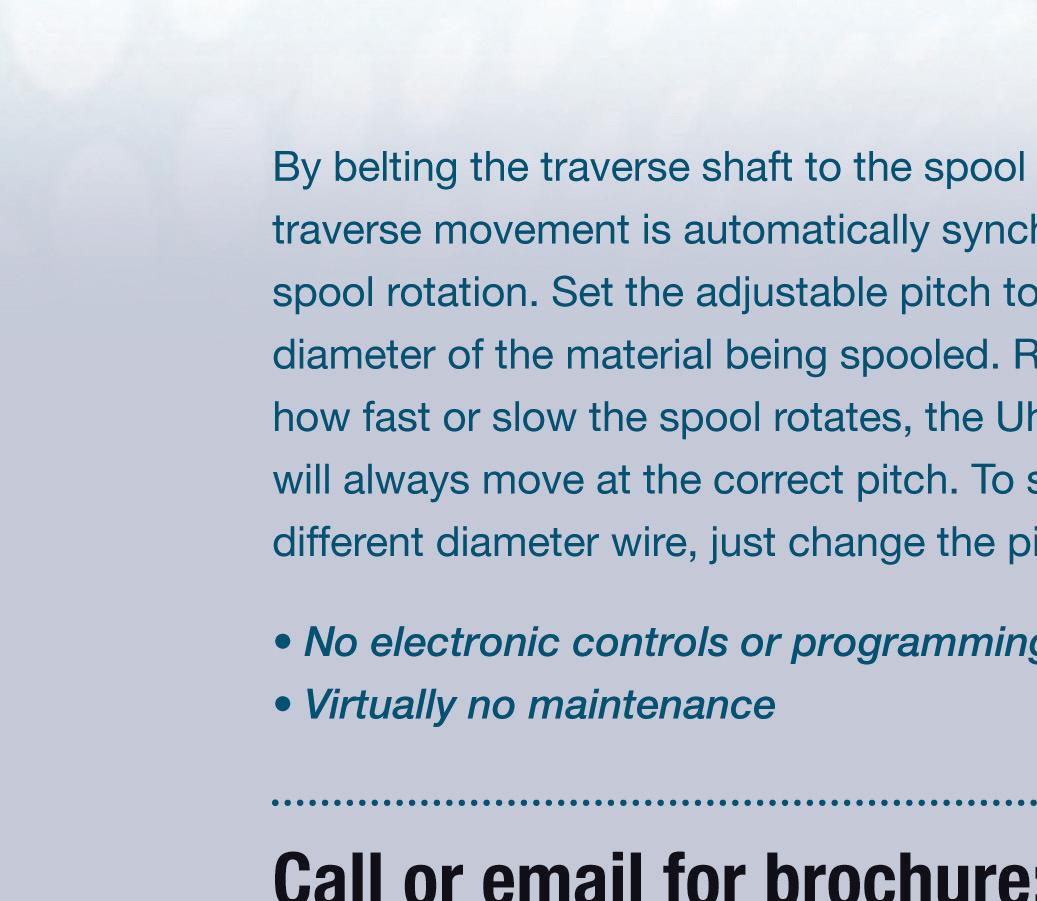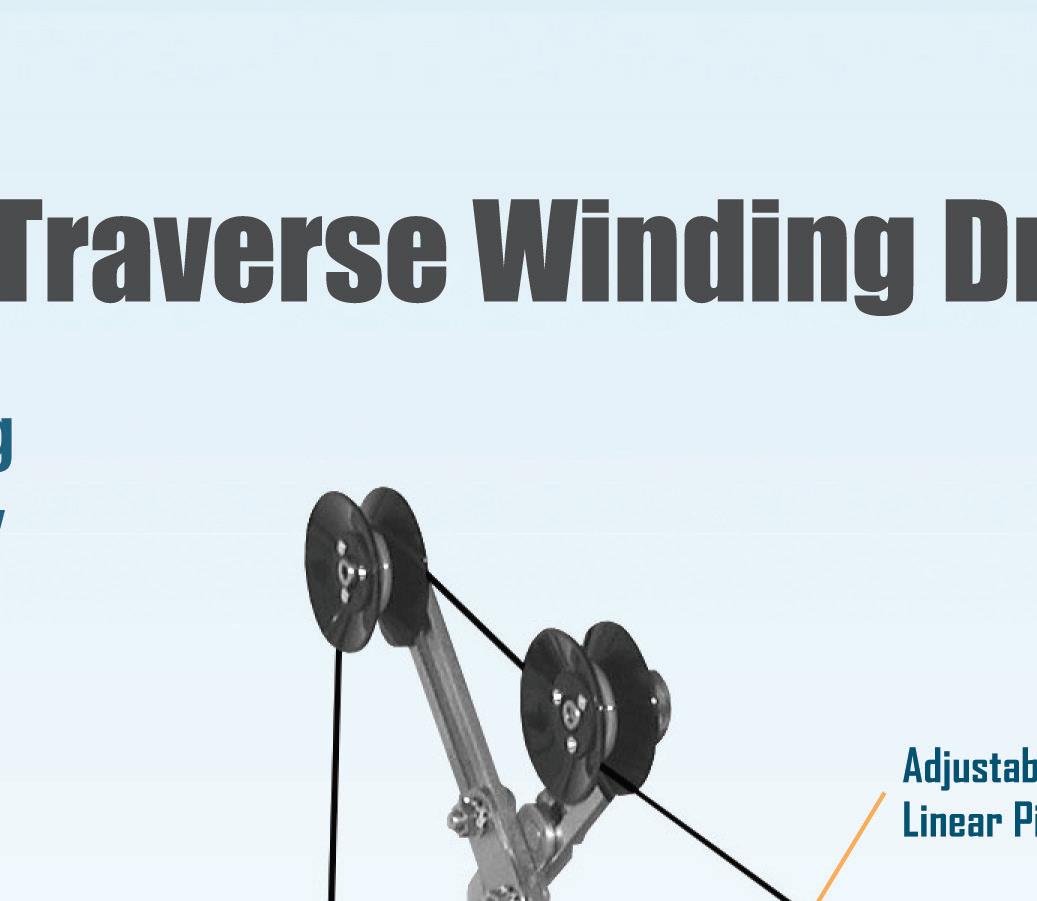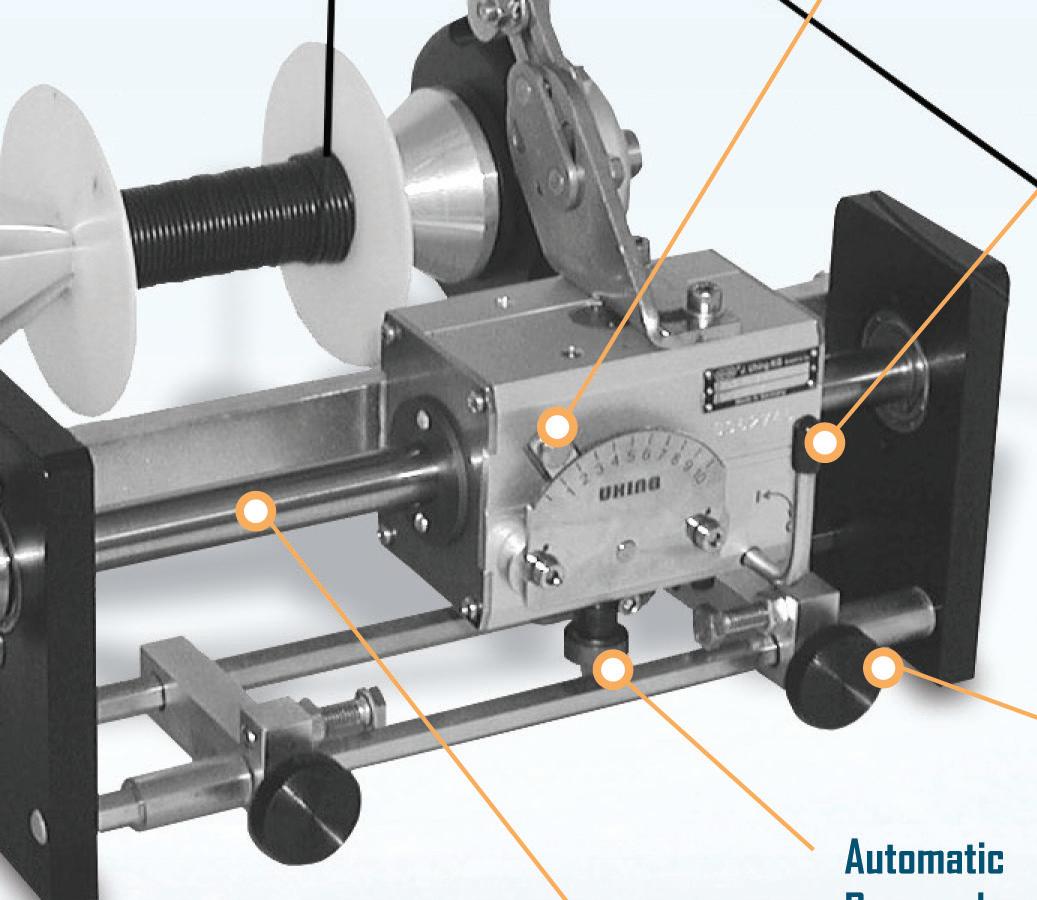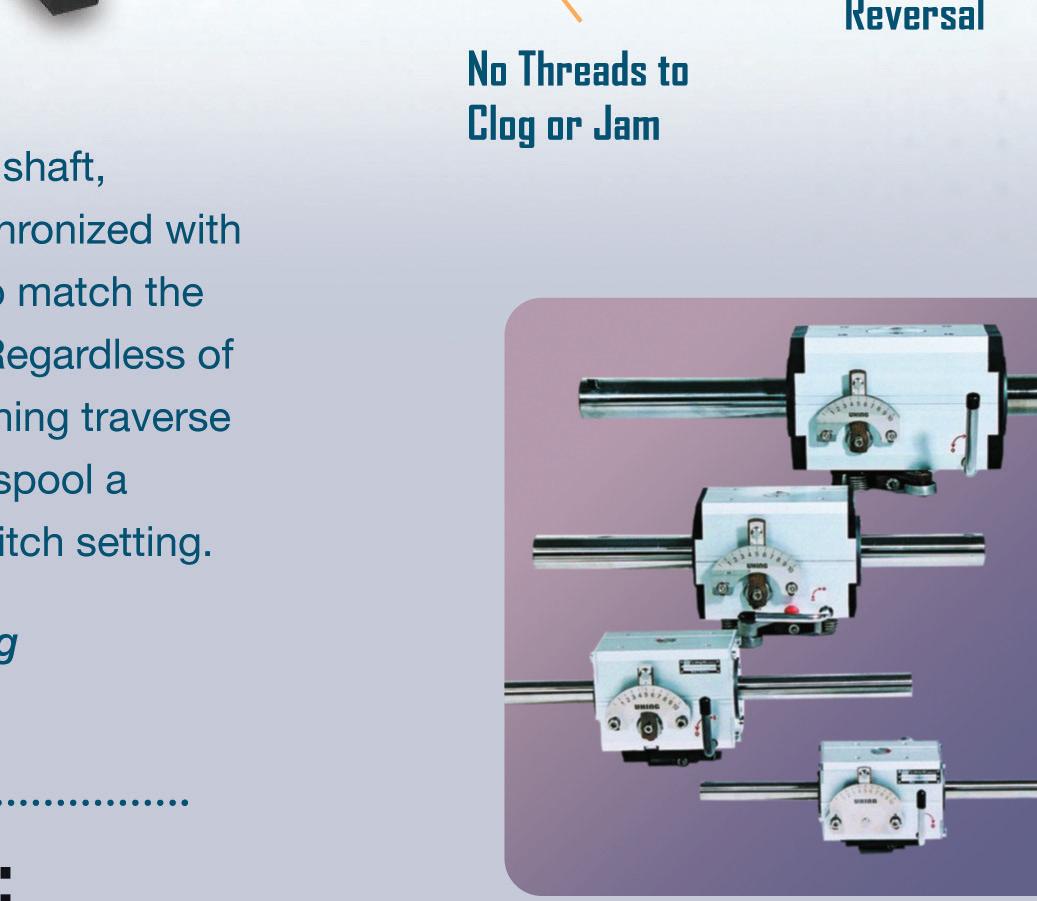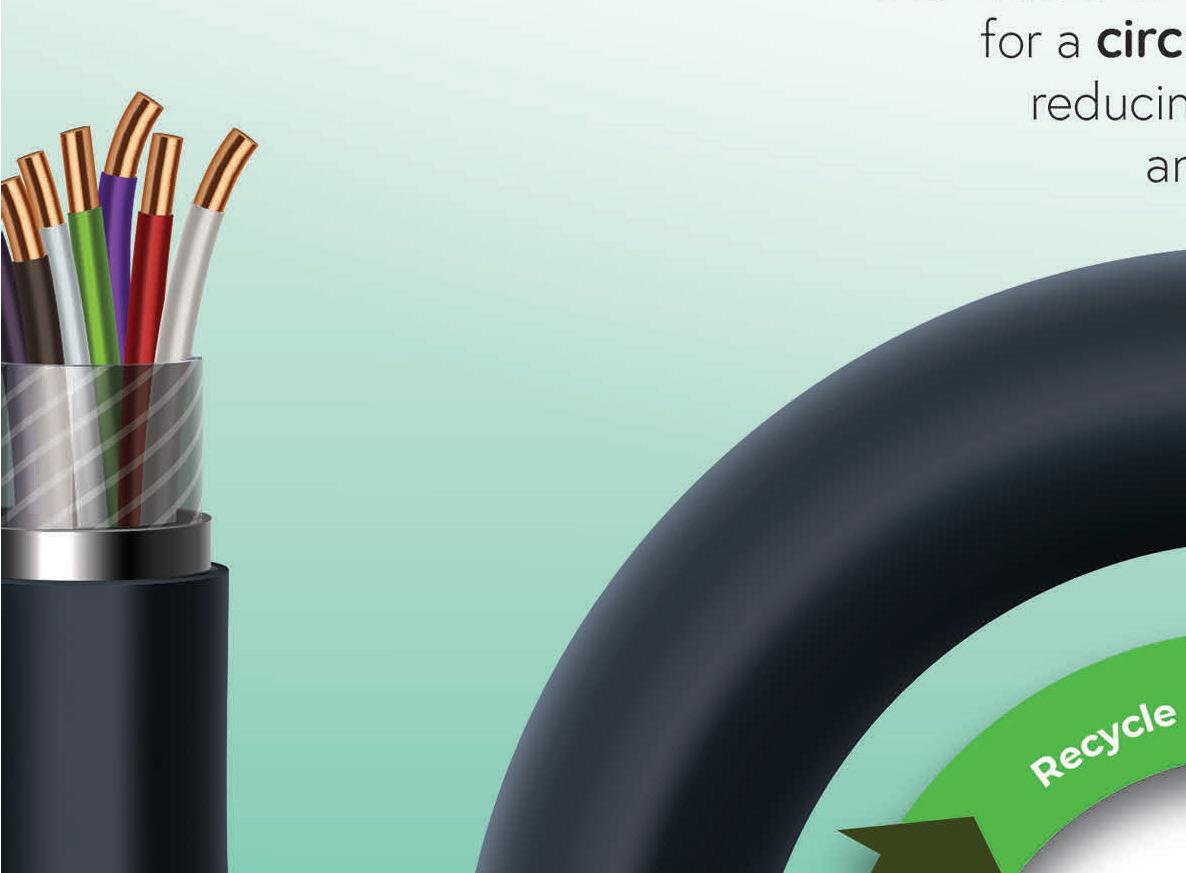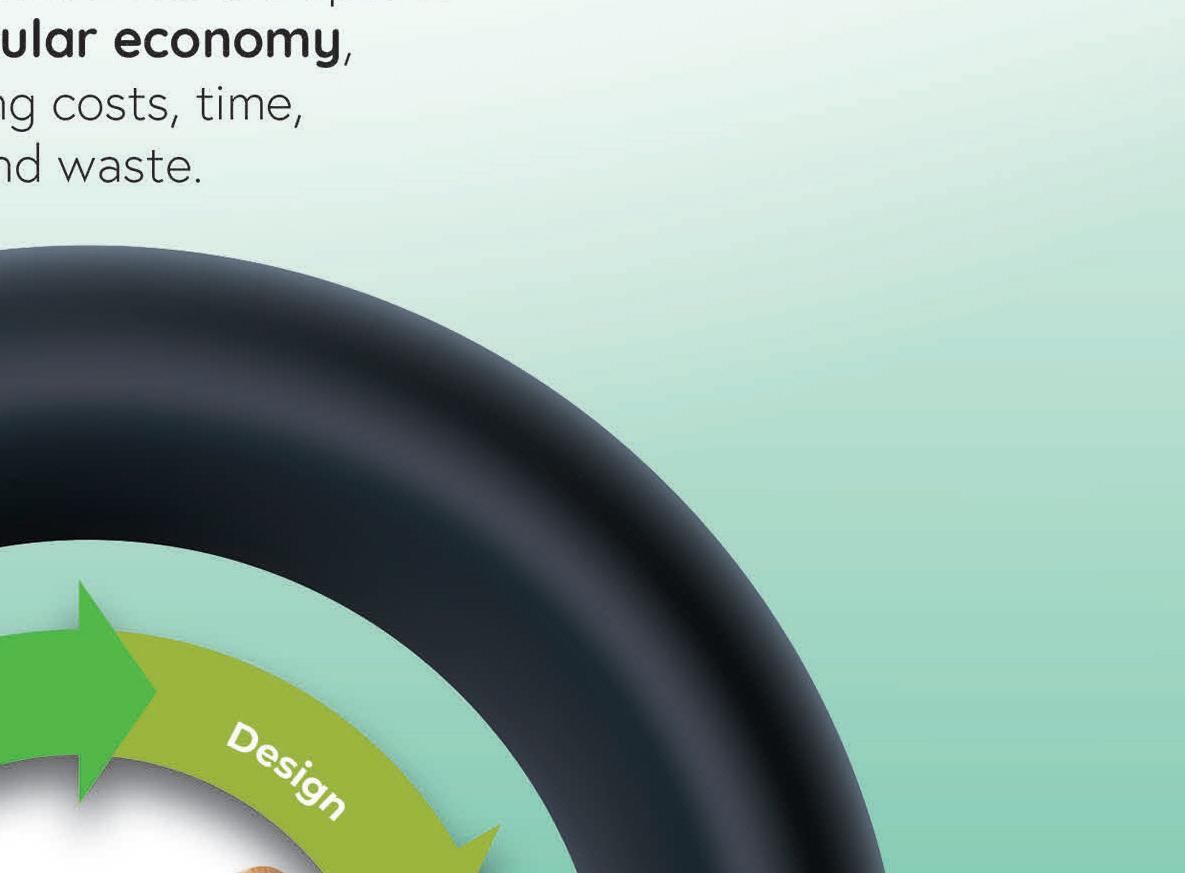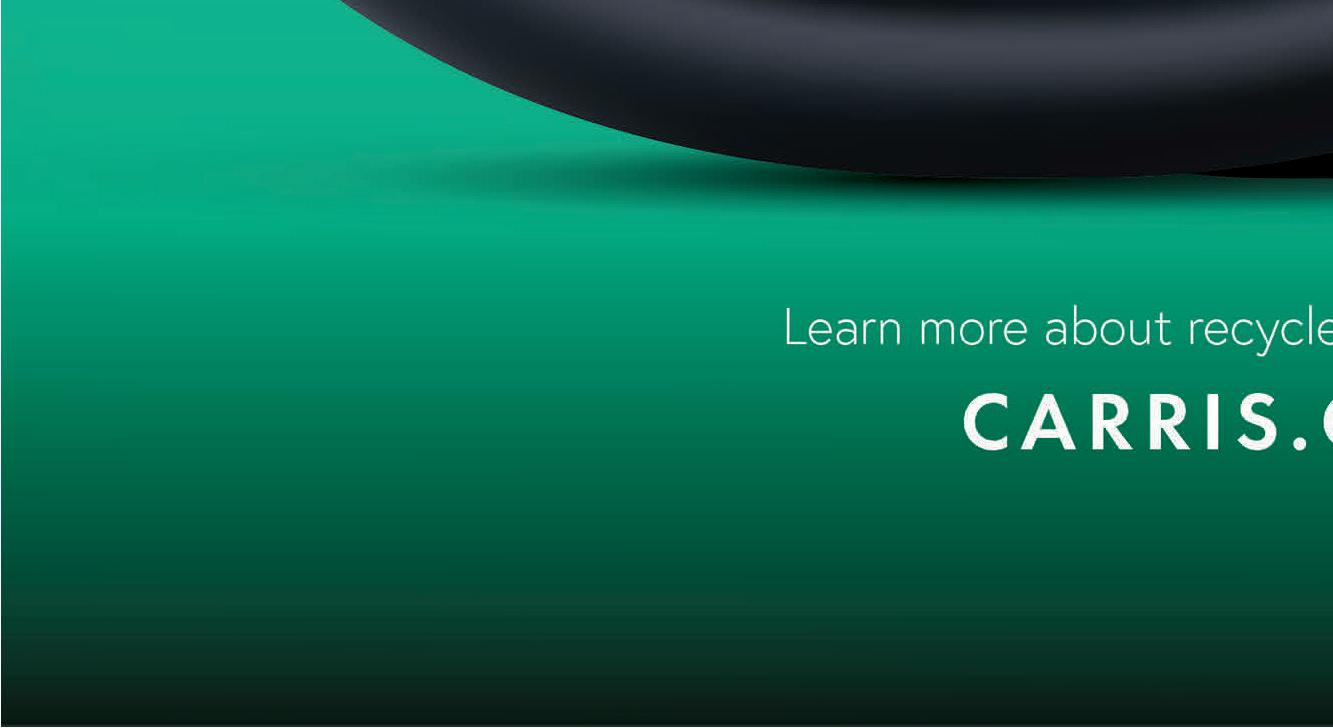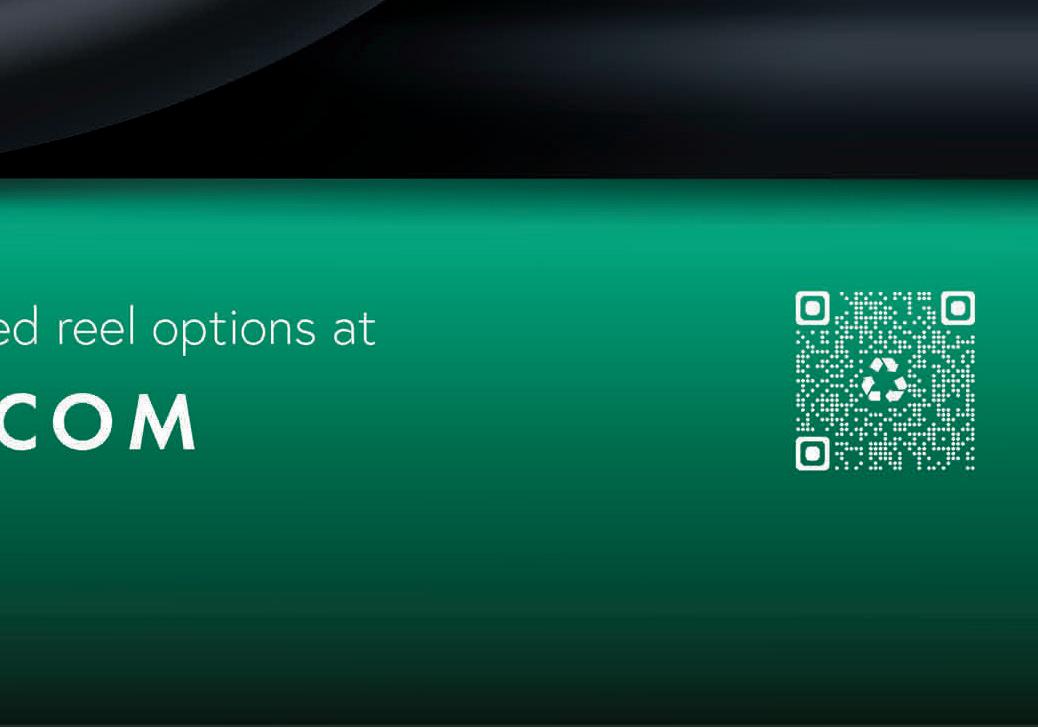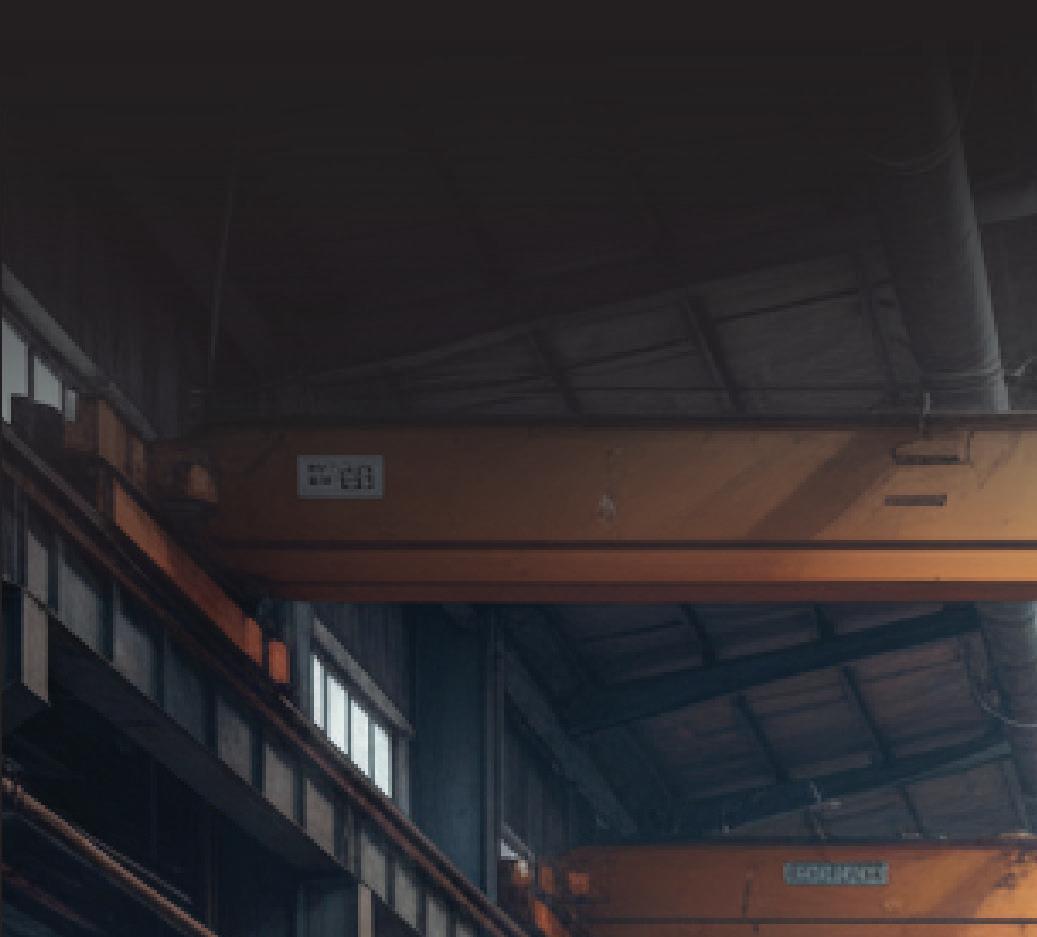





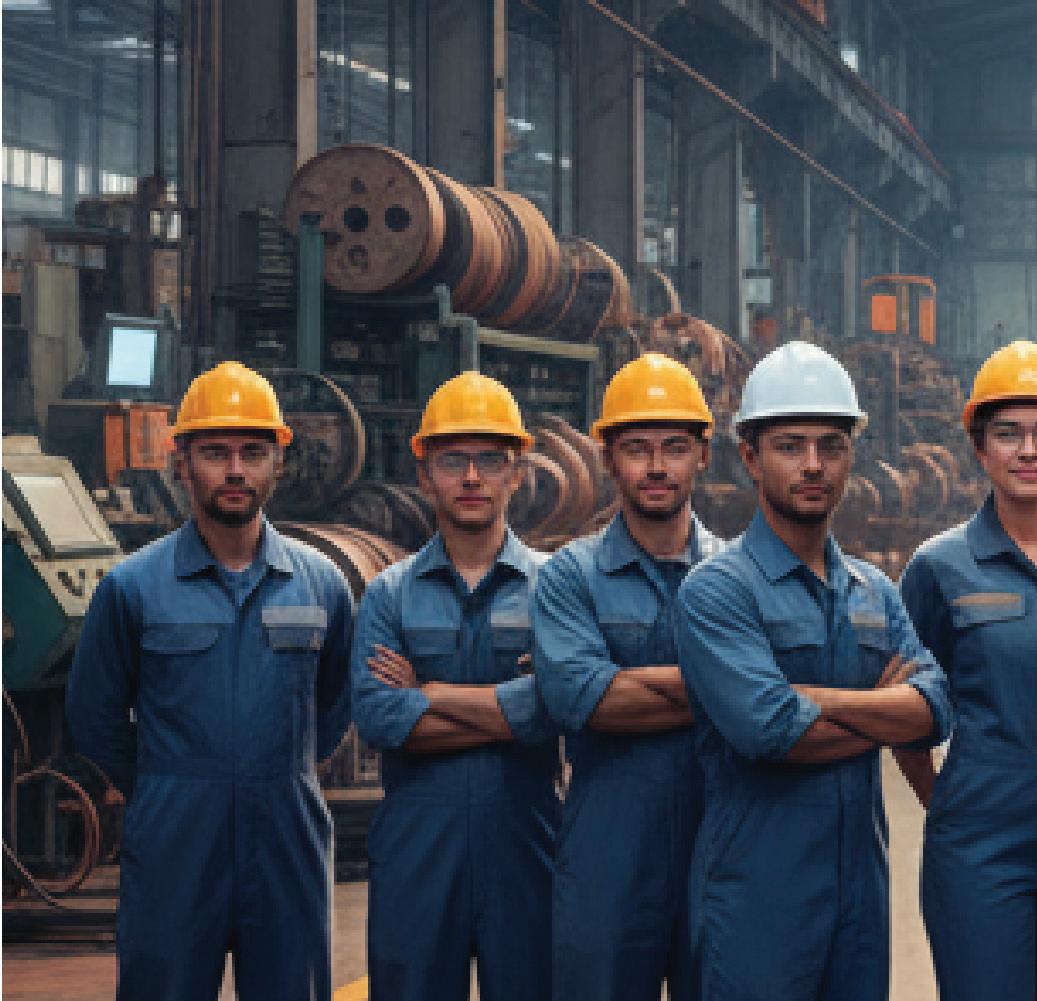

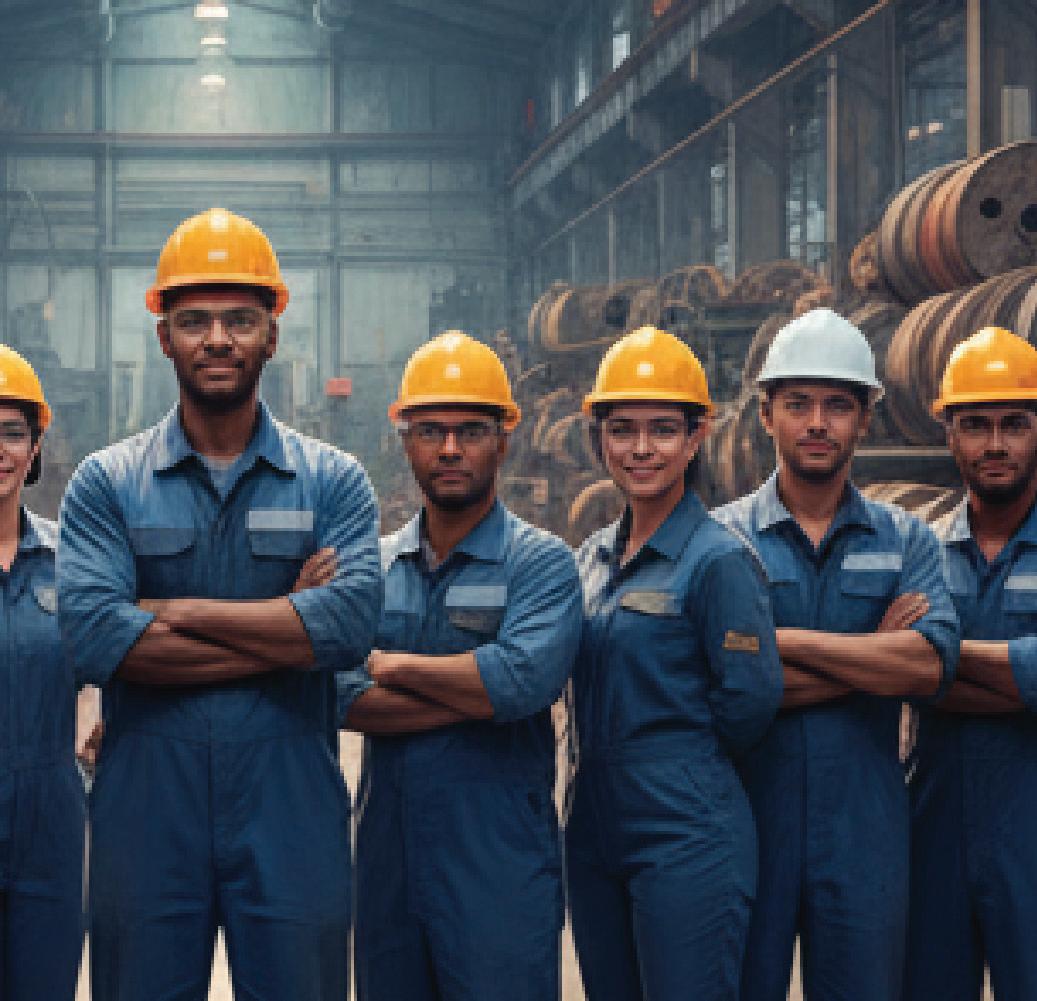



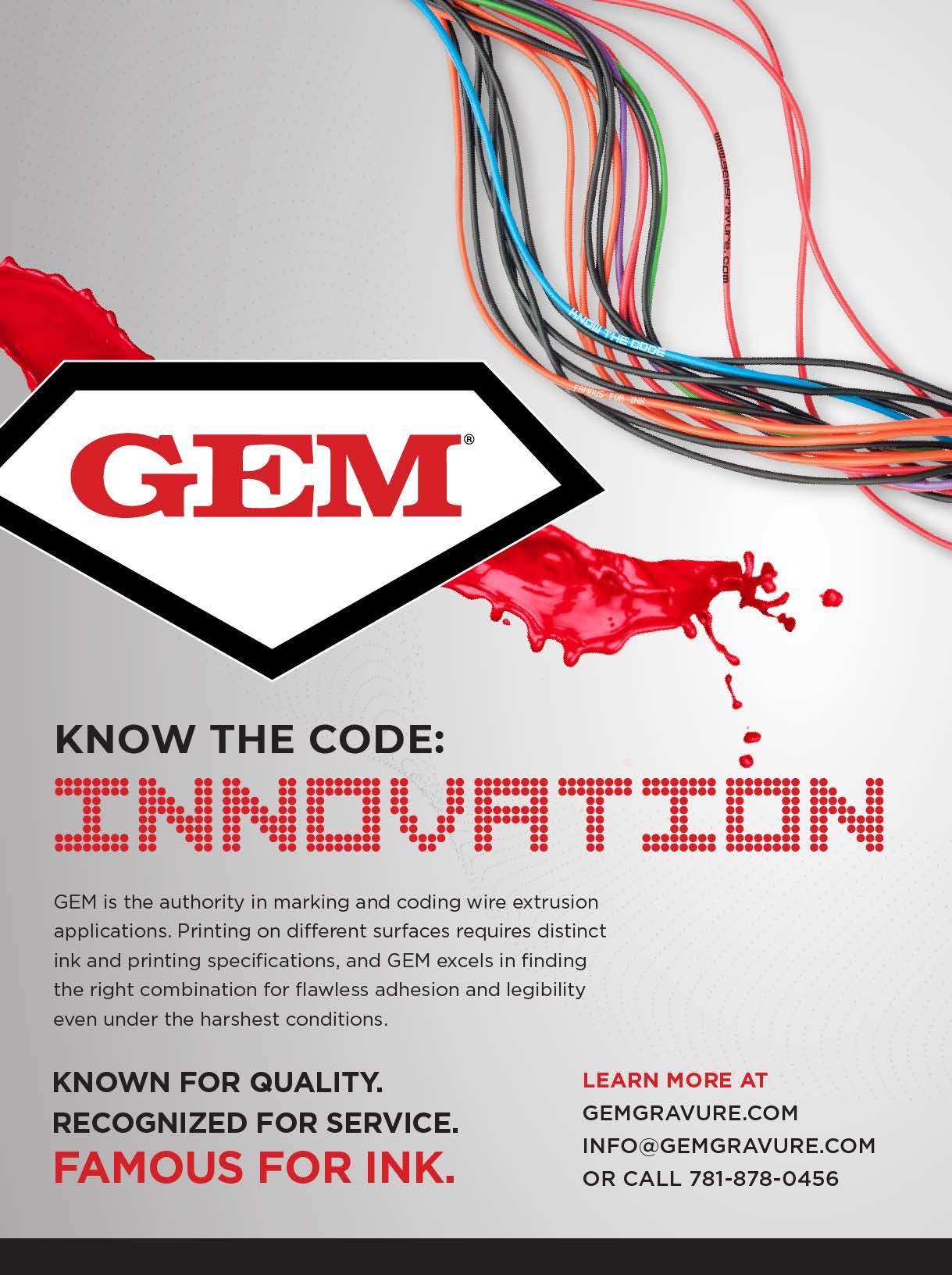


























































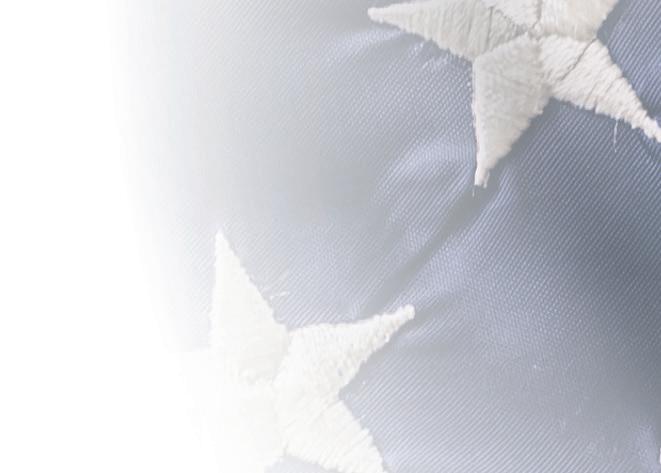



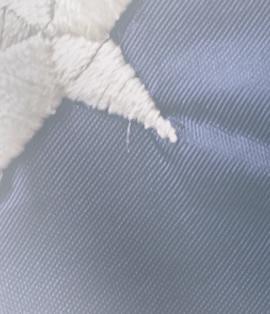



















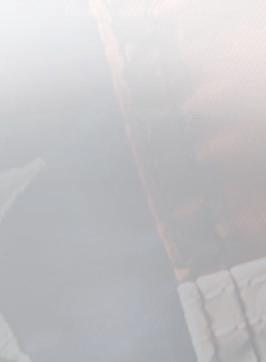


























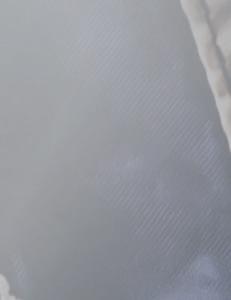
























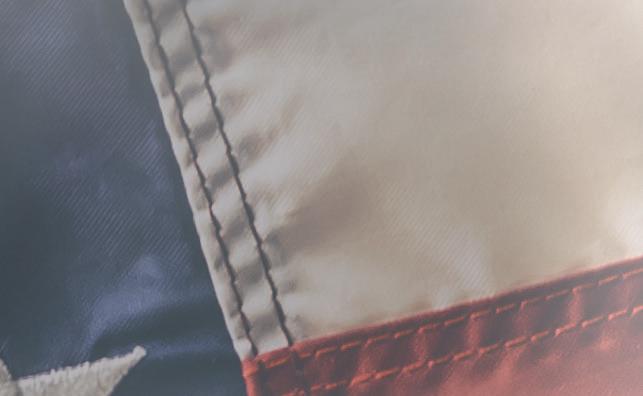














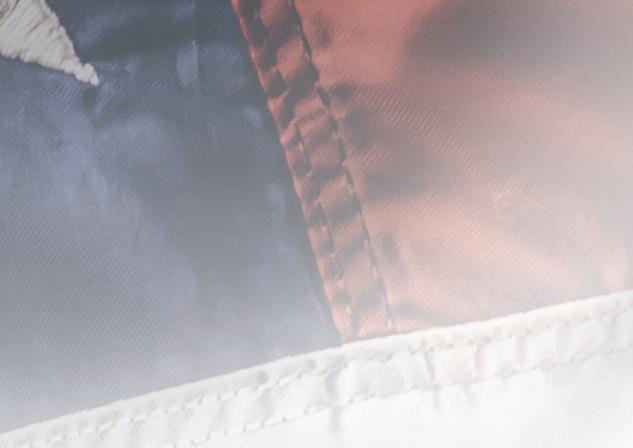



















































At COPPERWORKS™, we’re proud to provide copper rod and wire that’s sustainably manufactured right here in America. No matter what happens in the international market, our innovative refining process lets us pull from the domestic “modern mine,” utilizing a steady, reliable supply of 100% recycled copper. Our ability to utilize a variety of virgin, pre- and post-consumer copper inputs makes us a dependable partner for high-performance copper that’s made in the heartland and used in all 50 states—and beyond.
















An economical way to remove copper dust, excessive oil lubricant, dirt, and dust from primary wire or strand
• Stranding & Cabling Lines
• Take-Ups / Pay-Offs / Coilers
• Fully Automatic Re-Wind Lines
• Complete Extrusion Lines

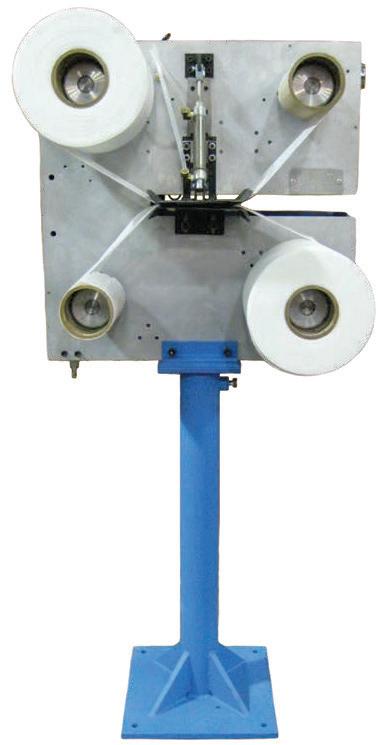

WIRE RANGE: Up to 0.098 in. (2.5 mm.) diameter
MAX. F/M: Approx. 8000 ft./m.
MATERIALS: Ferrous or nonferrous material / tinned, bare, or plated
FLOOR SPACE: 18” x 27”
• Reduce Spark Faults
• Improve Insulation Bond
• Easy to Install
• Improve Insulation Concentricity
• Increase Pre-Heater Sheave Life
• Environmentally Friendly
Single and multi-wire induction coil furnaces
Induction heating process of one wire or multiple wires in parallel, granting processing capability at various speeds, in line and offline. Maximum flexibility and efficiency thanks to Inductions M-SYS technology through the independent power regulation of each heating coil.
• Ultrasonic, Wet Blast, and Various Mechanical Cleaning Systems
• Drum Packers, Air Wipes, and Taping Lines

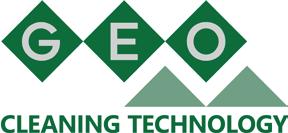
• Forming / Welding / Sizing Lines
• Wire Drawing and Shaving
• Semi and Auto Re-Spooling

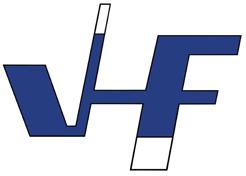


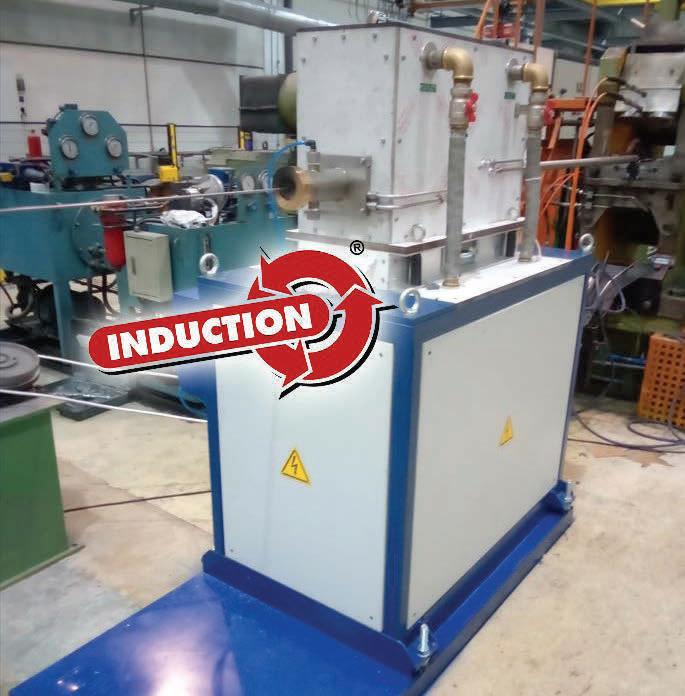


















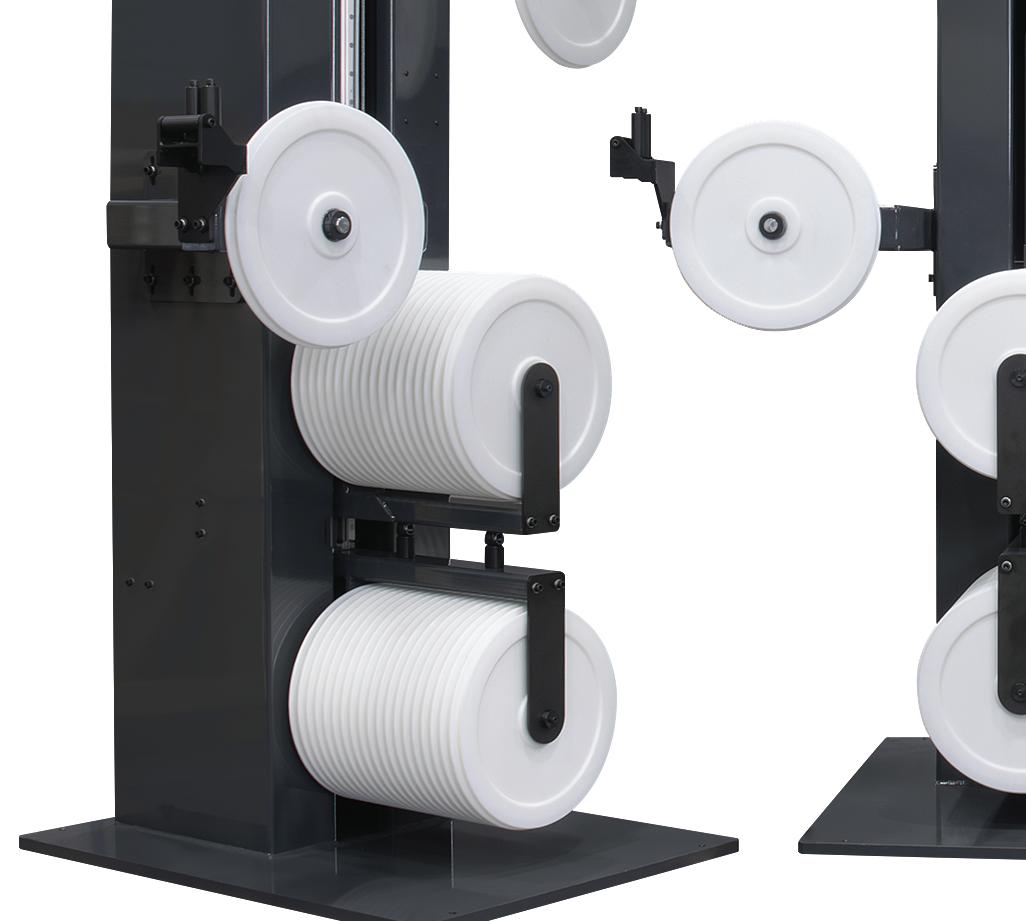

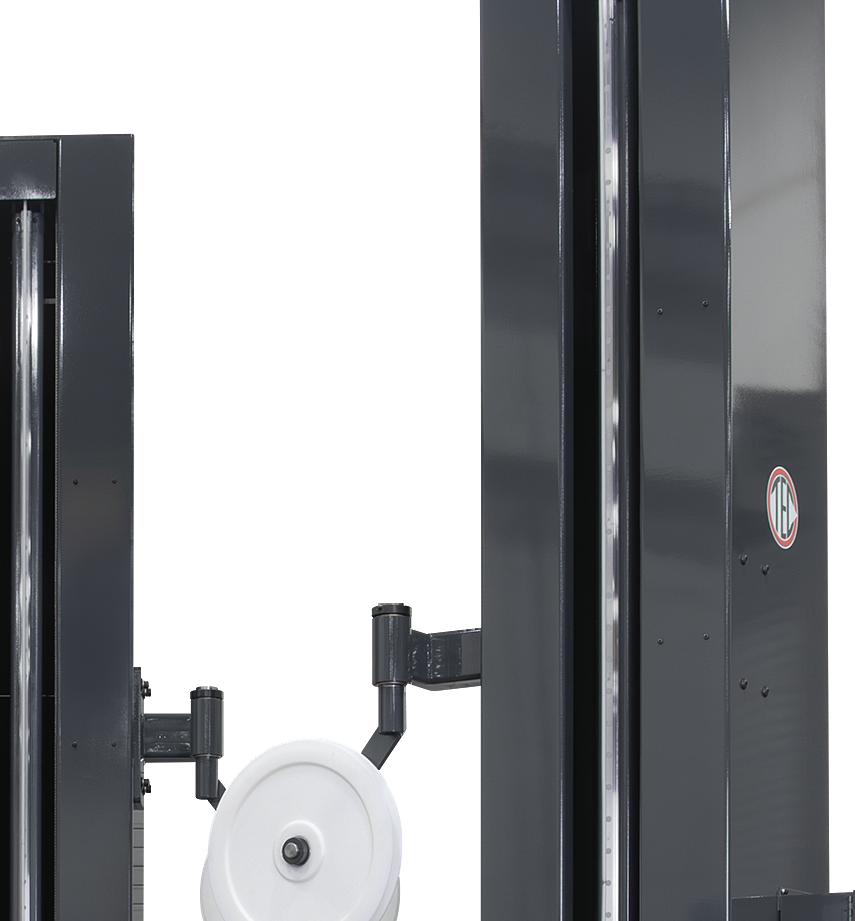


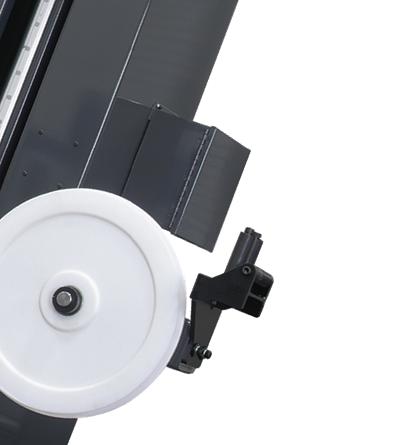



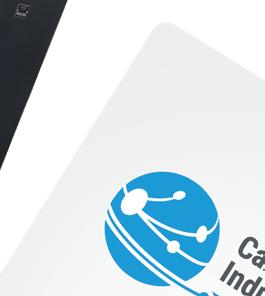
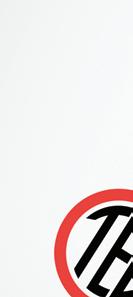












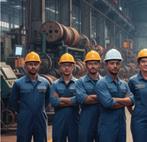







feature returns with a range of observations and perspectives on this most vital of all industry essentials.
Masataka Tabuse, Hirotaka Koriki, Tomoaki Gonohe, Masuru Nakajima, Masamichi
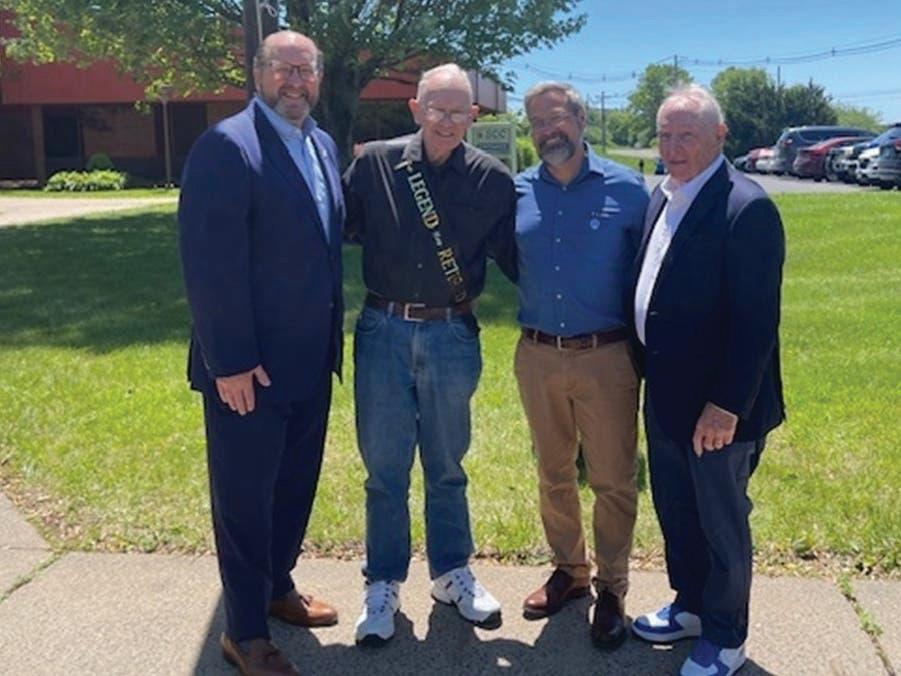
Jerry Swantek, 87, who worked a remarkable 65 years at Specialty Cable Corporation, was honored by the Connecticut aerospace wire and cable manufacturer, which recently celebrated its 100th year. “Working with and mentoring great people over the years helped keep me going. ... I consider SCC my second home,” he said. From l-r are CT CMO Paul Lavoi, Swantek, SCC owner Carl Shanahan and SCC CEO Kim Bowen.

It wasn’t just the backdrop of a stunningly perfect day that made the WAI New England Chapter’s return to the Tunxis Country Club in Farmington, Connecticut, so memorable for the 143 golfers. The Lloyd & Bouvier team of Michael Tucker, Darren Tucker, Joe Yabba, and Gibson Yabba prevailed, but they weren’t the only winners: the raffle at the awards dinner raised nearly $4,000 for the scholarship fund.




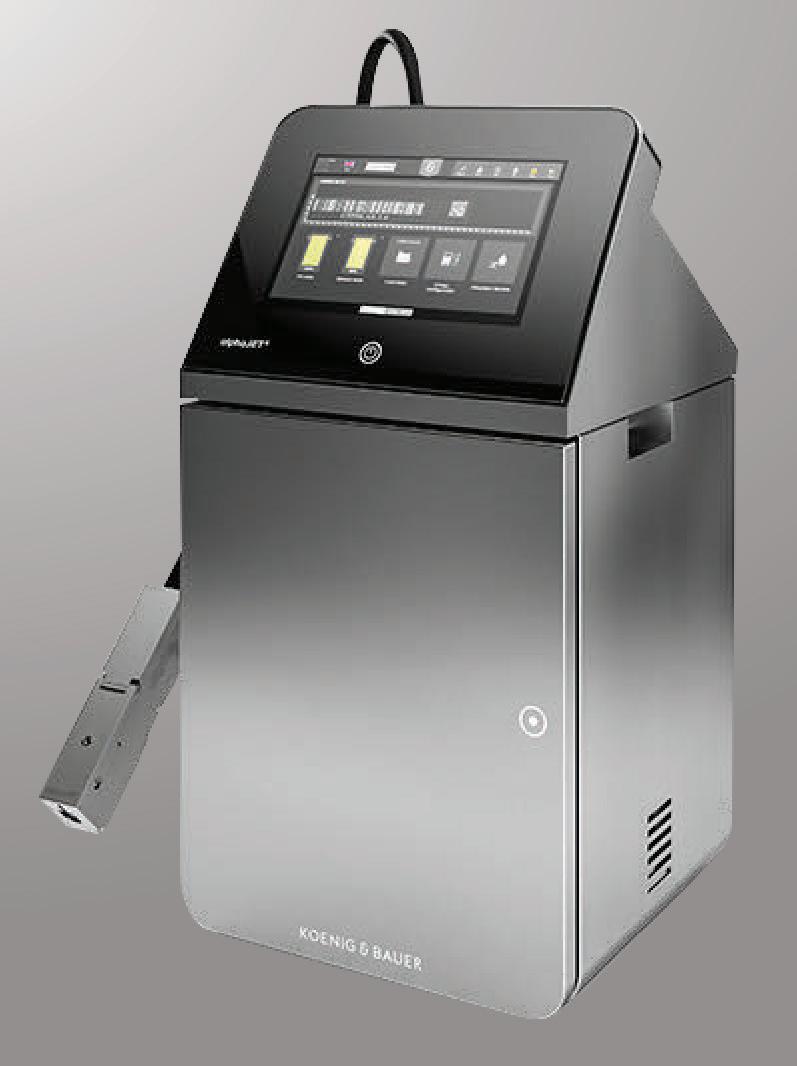




EXP1538
6”, 24:1 D-S Thermatic II Extruder
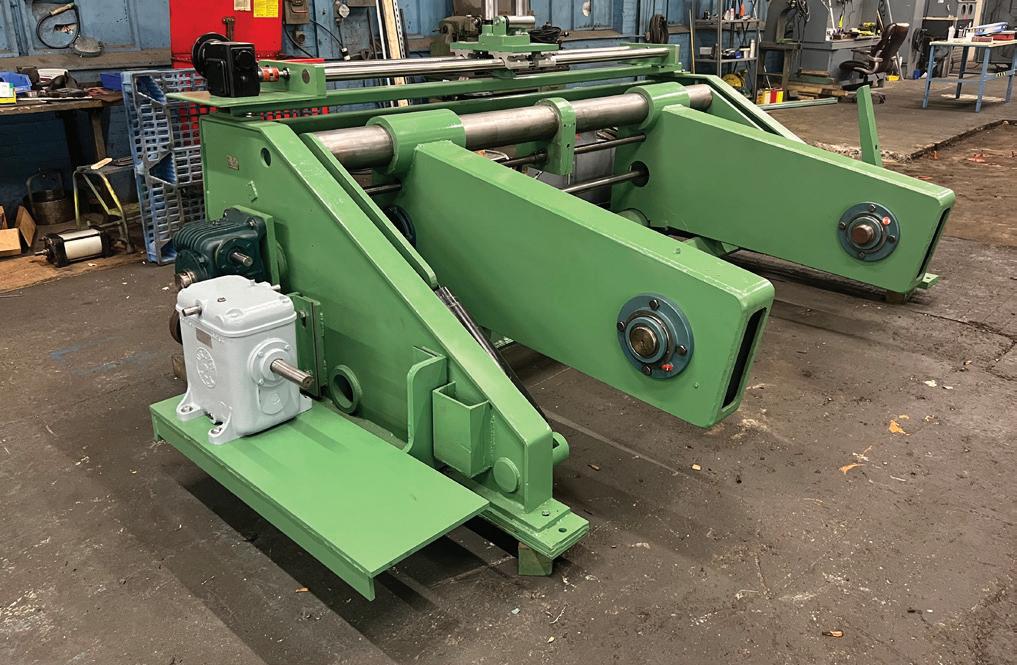
TKU1796
84” Bartell Rebuilt S/L Takeup
CBR1481 – 42” WMCA Cord Twister Line, Conc Taper, AB PLC
CBR1473 – 630mm Ceeco 24W (12/12) Planetary Cabling Line
CBR1470 – 560mm Watson/Kinrei DT Buncher, Model TM-560 (11)
CBR1457.5 – Northampton 600/630 Triple Twist Twinner (6)
CBR1452 – 48” Ceeco Drum Twister, Swing Out Traverse
CBR1448 – Tensor SZ Oscillator, OSC-1500-15, 3000RPM
CBR1431 – 760 mm Watson/Kinrei DT Buncher, Model NB-760 (7)
CBR1353 – 30” Ceeco Planetary Line, 12+18, Dual Ecc Taper, 84” TU
CBR1269 – 630mm Mali 1+3 Bow Cabler Line
CBR1157 – 31” Ceeco 37W Rigid/Tubular Stranding Line
TBR230.2 – 10” Bartell Tubular Strander, 6W, Outside Model 6B64 (7)
TPR484 – Edmands 4 Head Concentric Taping Line
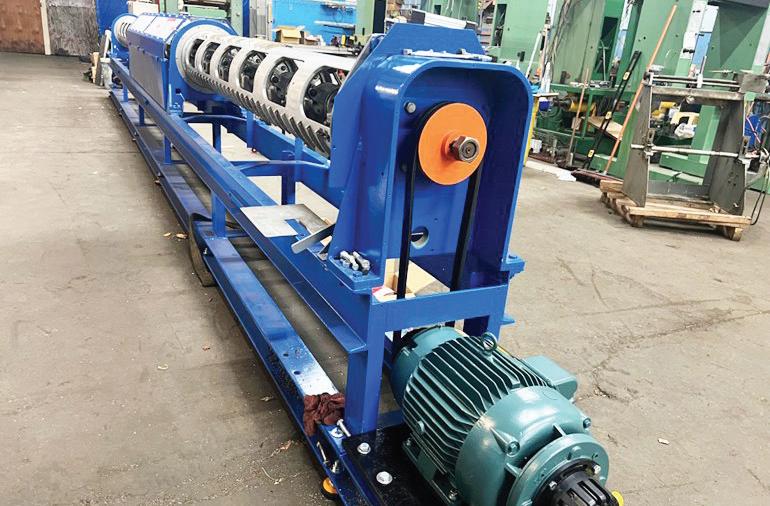
TBR220
6.5” Bartell 18W Tubular Strander
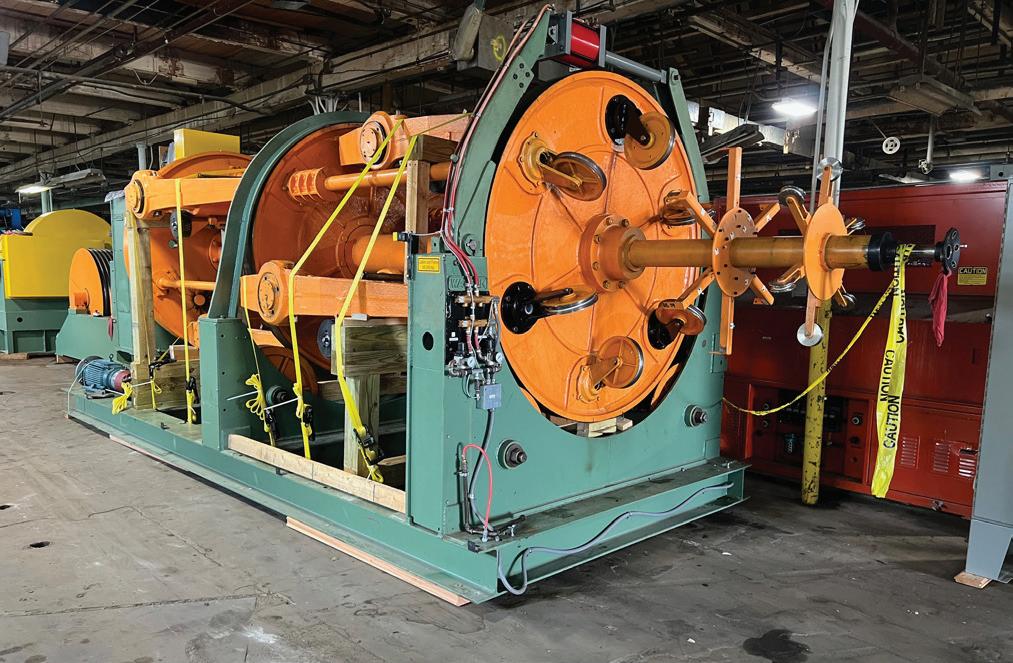
CBR1468
40” Watson 6W Planetary Line
EXPL504 – 1½” Davis Std.Hi Temp Extrusion Line
EXPL503 – 2½” Davis Std.Hi Temp Extrusion Line
EXPL502 – 2” Sterling Primary Line, 24” PO, 18” Auto Dual TU
EXPL501 – 6”/4.5” Battenfeld Glouster Dual Wire Primary Foam Line
EXPL499 – 2½” TEC Optical Fiber Sheathing Line, 84” PO/TU
EXPL498 – 3½” Davis Std Optical Fiber Sheathing Line, 84” TEC PO/TU
EXPL370 – 75mm Meltech/Boston Matthews Silicone Extrusion Line
EXP1488 – 4½” Davis Std, 24:1 Extruder, Therm III, 150 HP DC
EXR212 – 3½”Davis Std 15:1 Rubber Extruder, Therm III (3)
EXR205 – 4½” Davis Std 20:1 Rubber Extruder, Thermatic II, Rebuilt
WRD1169 – SAMP MS/400 Rod Breakdown Line
WRD1123 – Henrich 13 Die Rod Line, w/Annealer, Bongard Coiler
The Aug. 22 abrupt federal stop-work order on Revolution Wind—a $6 billion offshore wind project that was 80% finished—roiled the U.S. offshore wind supply chain and its companies. Nearly completed, the 704 MW Ørsted project for the New England grid had moved through years of permitting, investment and infrastructure buildout.
State and industry officials described the halt, issued for vague “national security interests,” as having the flimsiest of justifications, with no cited law violation or imminent risk. Revolution Wind had secured all required state and federal permits, passed exhaustive reviews and was months from completion. Legal challenges by Connecticut and Rhode Island described the explanation as “baseless.” Observers in The New York Times described stopping a fully permitted project at this stage as “virtually unheard of” in U.S. infrastructure history.
On Sept. 21 a federal judge lifted the order, rebuking its “arbitrary and capricious” reasoning and restoring project momentum. The episode is a gut-check, not just for Ørsted—which saw its stock price fall 16%—but for the cable industry as a whole. The drive for renewables made the subsea power cable market more desirable, spurring projects like LS GreenLink USA’s $700 million cable plant in Virginia, Nexans’ expansion in Rhode Island and investments by Hellenic Cables. Prysmian, which had selected Massachusetts for a new subsea cable plant, backed out of that plan in January, citing market uncertainty, a blow to the sector. Now, there’s uncertainty for already-placed orders for submarine cable, specialty ships and installation agreements.
Analysts at Jefferies called the move “another setback for Ørsted and the U.S. offshore wind industry.” S&P and other agencies have already downgraded credit outlooks for major project owners, with financial impacts rippling down the chain. The suspension also coincides with federal pauses on new wind leases and re-reviewing previous approvals—forcing companies to plan in an environment best described as “uncertain.”
Recent articles in Factor This and Oceantic Network warned this reversal could lead to inefficiencies, supply chain relocations and lost opportunities for standardized turbine and cable manufacturing. Even if the situation stabilizes, S&P Global observes the industry should expect “further small impairments” and more cautious capital deployment in coming years.
It looks and feels like a lose-lose situation, hard to fit into any company’s long-term plan.
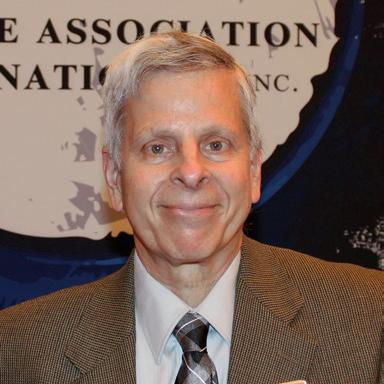
Mark Marselli Editor-in-Chief, editor@wirenet.org
PUBLISHER Steven J. Fetteroll
EDITOR-IN-CHIEF Mark Marselli
GRAPHIC DESIGNER Charlotte Ashley
DIRECTOR OF SALES Shannon Timme
DIRECTOR OF INTERNATIONAL SALES & BUSINESS DEVELOPMENT
Anna Bzowski
DIRECTOR OF MARKETING & CORPORATE COMMUNICATIONS
Janice E. Swindells
WAI PUBLICATIONS COMMITTEE
Dane Armendariz, consultant
Ferruccio Bellina, TKT Group/President ACIMAF
Michael Crowle, QED Wire Lines Inc.
Tom Moran, consultant
Giulio Properzi, Continuus Properzi
Willem Sundblad, Oden Technologies Inc.
John N. Tomaz, Stolberger
Robert Wild, Niehoff Endex North America
W.T. Bigbee, Encore Wire Corp.
TECHNICAL ADVISORS
John Drummond, Scotia Group
R. M. Shemenski, RMS Consulting, Inc.
Images: Adobe Stock.
Wire Journal International (ISSN-0277-4275) published monthly by The Wire Journal, Inc., is a wholly owned subsidiary of The Wire Association International, Inc., which is located at 71 Bradley Road, Suite 9, Madison, CT 06443-2662, USA, and can be contacted at tel. 203-453-2777; fax 203-453-8384; Internet wirenet.org; e-mail editor@wirenet.org. Address all correspondence concerning advertising production, editorial and circulation to the above address. WJI is printed in the USA.
Subscription rates: $110 per year, USA; $120 per year, Canada and Mexico; other countries, $140 per year (includes air mail). Back copies: $10 WAI members, $15 non-members. Periodicals postage paid at Madison, CT 06443, USA, and at additional offices.
Wire Journal International grants photocopy permission to libraries and others registered with Copyright Clearance Center (CCC), 21 Congress St., Salem, MA 01970, USA, for a fee of $0.50 per article. Payments should be sent directly to the CCC. Requests for bulk orders or reprints should be sent to the Wire Journal International, 71 Bradley Road, Suite 9, Madison, CT 06443-2662, USA.
© 2025 by Wire Journal, Inc. All rights reserved. The Publisher of WJI assumes no responsibility for the validity of manufacturers’ claims made herein. Back issues of WJI are on microfilm and available from University Microfilm, 300 North Zeeb Road, Ann Arbor, MI 48106, USA. Phone: 313-761-4700.
POSTMASTER: Send address changes to Wire Journal International, 71 Bradley Rd., Suite 9, Madison, CT 06443, USA.


ROEX extruders are high-performance machines for cable insulation and jacketing. They are equipped with an innovative motor drive concept and can be customized to suit your specific requirements.
Choose the latest extruder technology for your next project and benefit from:
• High flexibility for different materials
• Consistent linear and high output
• Minimized energy consumption



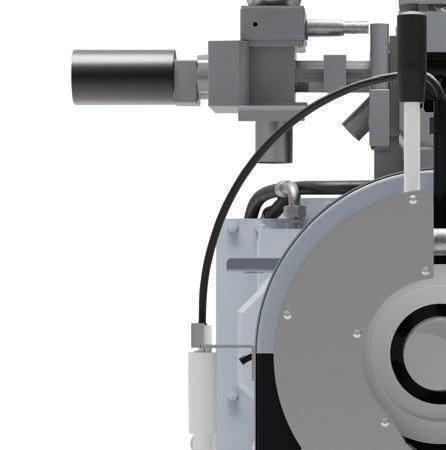


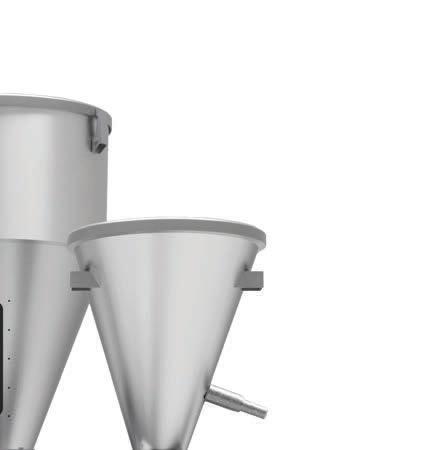
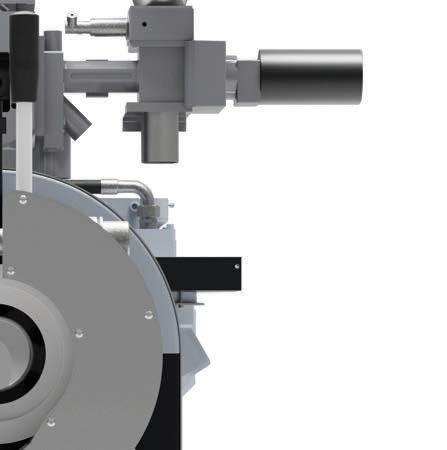
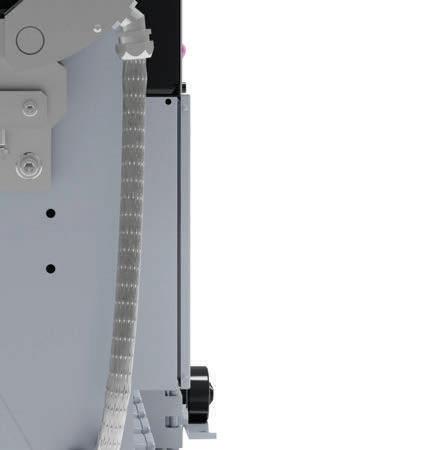
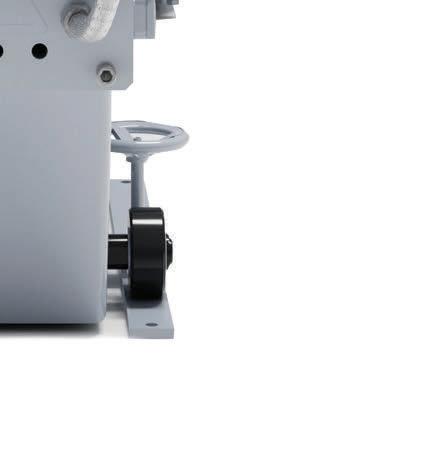
OCT. 14, 2025: Wire & Cable Kraków 2025 Kraków, Poland. This event is organized by ACIMAF, the AGH University of Kraków, IWMA and WAI. The event website is www.wirecable25.com. See p. 38.
OCT. 27-30, 2025: 74th IWCS Cable & Connectivity Industry Forum
Pittsburgh, Pennsylvania, USA. Contact: IWCS, tel. 571-265-3657, www.iwcs.org. WAI will be exhibiting at this event, so look for us there. See p. 40.
NOV. 4-6, 2025: Cable & Wire Fair 2025
New Delhi, India. This event is to be held at the Pragati Maidan. Contact: Tulip 3P Media Pvt. Ltd.: tel. +91-01244250148, info@wirecable.in, www.cablewirefair.com. See p. 41.
APRIL 7-9, 2026: World Copper Summit Santiago, Chile. This event is organized by the CRU Group. More information and registration will be available at a later time at www.events.crugroup.com/copper/homes, and conferences@crugroup.com.
APRIL 13-17, 2026: wire Düsseldorf
Düsseldorf, Germany. To be held at the Messe Fairgrounds. Contact: Messe Düsseldorf North America, tel. 312-781-5180, info@mdna.com, www.mdna.com.
MAY 6-7, 2026: Wire Expo & 96th Annual Convention
Milwaukee, Wisconsin, USA. To be held at the Baird Center— colocated with the Electrical Wire Processing Technology Expo (EWPTE)—this WAI event includes the Fundamentals of Wire Manufacturing Course on May 5, 2026.
SEPT. 21-24, 2024: wire China Shanghai, China. This event will be held at the Shanghai New International Expo Centre (SNIEC). Contact: Messe Düsseldorf/Messe Düsseldorf (Shanghai) Co., Ltd., www.wirechina.net, www.mdna.com.
OCT. 7-9, 2026: SpringWorld Expo and Symposium Rosemont, Illinois, USA. This event, presented by the Chicago Association of Spring Manufacturers, Inc. (CASMI), and the Symposium, presented by the Spring Manufacturers Institute (SMI), will be held at Donald E. Stephens Convention Center. Contact: CASMI, tel. 414-908-4963, info@casmi-springworld.org, www.springworld.org.
OCT. 14-17, 2026: 75th IWCS Cable & Connectivity Industry Forum
Providence, Rhode Island, USA. To be held at the Rhode Island Convention Center. Contact: IWCS, tel. 717-9939500, www.iwcs.org. WAI will be exhibiting at this event, so look for us there.
NOV. 30-DEC. 2, 2026: Wire India
Mumbai, India. This event, organized by Messe Düsseldorf India Pvt. Ltd, will again be held at the Bombay Exhibition Center (BEC), also known as the Bombay Convention & Exhibition Center (NESCO). Contact: Messe Düsseldorf North America, tel. 312-781-5180, info@mdna.com, www.mdna.com.
MAY 4-6, 2027: Interwire & WAI’s 97th Annual Convention
Atlanta, Georgia, USA. To be held at the Georgia World Congress Center, this event includes the trade show, technical programs and WAI’s 97th Annual Convention.
OCT. 16, 2025: Southeast Chapter Annual Golf Outing Conover, North Carolina, USA. The Southeast Chapter’s annual tournament will return to the Rock Barn Country Club & Spa.
MAY 6-7, 2026: Wire Expo & 96th Annual Convention
Milwaukee, Wisconsin, USA To be held at the Baird Center— colocated with the Electrical Wire Processing Technology Expo (EWPTE)—this WAI event includes the Fundamentals of Wire Manufacturing Course on May 5, 2026.
MAY 4-6, 2027: Interwire & WAI’s 97th Annual Convention
Atlanta, Georgia, USA. To be held at the Georgia World Congress Center, this event includes the trade show, technical programs and WAI’s 97th Annual Convention.
For more details, go to “events” at www.wirenet.org, then choose “chapter events.”

Denmark’s NKT has signed a contract with Energinet to deliver an HVDC power cable system for the offshore interconnector linking the Bornholm Energy Island to the power grid on Zealand.
A press release said that Energinet, a Danish transmission system operator (TSO), selected NKT to provide the 525 kV high-voltage direct current (HVDC) on- and off-shore power cable systems for the Danish connection to the Bornholm Energy Island. The contract, valued at approximately $757 million, includes the design, manufacture and installation of a power cable system that includes a 200 km offshore route and a 16.8 km onshore route.

NKT will produce the power cables at its high-voltage factory in Karlskrona, Sweden, and is located close to the installation site. Bornholm Energy Island is a landmark renewable energy project located in the Baltic Sea, designed to receive up to 3.8 GW of offshore wind power from planned offshore wind farms. The energy will be transmitted to Germany and Denmark via two HVDC offshore interconnector systems.
With this award from Energinet, NKT will connect the energy island to both the Danish and German power grids. This follows the turnkey contract awarded to NKT in 2023 as part of a large framework agreement with German TSO 50Hertz to connect the island to the German grid.
“Bornholm Energy Island is a key project for Europe to enhance energy security and the exchange of renewable energy,” said NKT President and CEO Claes Westerlind “With this award, we reaffirm our strong commitment to building the sustainable and secure energy infrastructure Europe needs, and demonstrate our proven high-voltage power cable capabilities.”
Offshore installation is planned to be carried out by the new vessel, NKT Eleonora, which is currently under construction. Once operational in 2027, the vessel will be one of the most advanced and fuel-efficient cable layers in the industry.
The Rhône Group, a U.S.-based global private equity firm, has acquired Copperweld Bimetallics (Copperweld) from Kinderhook Industries for an undisclosed price.
A Sept. 9 press release from Kinderhook—which acquired Copperweld in 2019 from THL Credit Advisors— reported the sale. Copperweld, founded in 1915, was described as the sole U.S. manufacturer dedicated to copper-clad (CCS) and aluminum-clad (CCA) wire. Its products are used in building wire, utilities, infrastructure, renewable energy and mobile technology markets.
Based in Fayetteville, Tennessee, Copperweld’s business includes additional plants in Texas and the U.K., and a distribution center in Belgium, with total employment near 400. Copperweld will continue to operate under its current management.
Kinderhook noted that during its ownership, Copperweld grew into a $65 million business by scaling operations and acquisitions, which included the 2020 purchase of Seminole Wire & Cable Co. Kinderhook continues to hold two distributors of wire, Kingwire and Cameron Wire & Cable, the latter of which also provides value-added services.
The Rhône Group is a global private equity firm with about $11 billion in assets under management, specializes in middle-market and larger investments across industrials, consumer, energy, materials, and healthcare sectors. This marks its lone activity for wire and cable.
Hellenic Cables, the cables segment of Cenergy Holdings, has been awarded a turnkey contract from a Greek state-regulated entity for a new 150 kV cable interconnection between Igoumenitsa and Corfu.
A press release said that the strategic project includes the design, manufacturing, installation and commissioning of 18 km of submarine and 13 km of underground
cables to further reinforce the reliability and capacity of the national power grid. The order is from the Independent Power Transmission Operator (IPTO), which is responsible for operating, maintaining, and developing the Hellenic Electricity Transmission System. It oversees some 11,000 km of transmission lines across mainland Greece and the islands.
Igoumenitsa is a major port city in northwestern Greece, while Corfu is a Greek island just offshore in the Ionian Sea, near the Albanian border. The cable will be made at the company’s facilities in Corinth and Thiva. “We are proud to support IPTO in enhancing Greece’s energy infrastructure,” said Hellenic Cables General Manager Kostas Savvakis. “This project is another milestone in our journey of engineering excellence and innovation.”
Last November, IPTO awarded Hellenic Cables a turnkey contract for 38 km of 150 kV XLPE underground and submarine cables to enhance the electrical interconnections between Kefalonia-Zakynthos and Lefkada-Kefalonia, the Ionian islands in Greece. In

Hellenic Cables has won a repeat order from IPTO for the Greek national power grid.
2023, the company announced an €80 million investment program focused on expanding its submarine cable production capacity at the Corinth plant and upgrading land cable output at Thiva.
A Sept. 5 essay in Grist (www.grist.com) by Matt Simon told how an ordinary fiber optic cable became a vital research tool, one able to reveal the hidden forces driving Greenland’s rapidly retreating glaciers. Passing on satellites or dangerous fieldwork near collapsing ice, the simple cable, paired with distributed acoustic sensing technology, captured the glacier’s secret, as outlined below.
Researchers set out to understand why Greenland’s glaciers are retreating so rapidly by stringing six miles of fiber optic cable, equipped with distributed acoustic sensing (DAS), along a glacial calving front—the dramatic boundary where enormous ice slabs break away and tumble into the fjord below.
Unlike its traditional use in telecommunications, this cable’s role was to capture the subtle and violent vibrations of glacial activity, constantly translating both routine internal fractures and colossal ice falls into a continuous stream of data. Every movement along the cable yielded a unique signature, enabling scientists to tell apart small, everyday cracking from catastrophic collapses as well as the underwater waves that these events generated.

The truly revelatory insights came from below the waterline. As the days passed, the cable detected that each time a massive iceberg detached and plunged into the fjord, it stirred up immense underwater waves capable of mixing cold fresh meltwater that usually floats atop warmer, saltier water. Ordinarily, this stratification acts as a protective barrier, keep-
ing the glacier insulated from the ocean’s heat. But these underwater waves, set off by calving, disrupted that separation, heaving up deeper, warmer water and pressing it against the glacier’s front—resulting in faster and more extensive melting.
This feedback loop startled scientists: the act of calving itself—once thought to be mostly a symptom of melting—also accelerates the process, as each dramatic ice fall further churns the fjord and speeds the glacier’s retreat. By using the DAS-enabled fiber optic cable, researchers gained a safe, efficient and unbroken means of monitoring these invisible and hazardous phenomena, providing a vital new window into the hidden forces driving ice loss in Greenland’s vulnerable coastal glaciers.
LS Cable & System has won a contract valued at approximately $115 million to supply submarine cables for the Formosa 4 offshore wind project in Taiwan.
A press release said that the order from project developer Synera Renewable Energy, calls for the delivery of submarine cables by 2028, when installation will begin. The specific types of cable and how many km were not disclosed, but such projects usually call for inter-array cables to connect the wind turbines and the offshore substation, and from there export cables to connect that to onshore grid connection points, typically at a much higher voltage. Previous similar LS Cable orders for Taiwan offshore wind have included both 66 kV inter-array and 220 kV export cable packages.

The Formosa 4 wind farm will be located about 18 km off the coast of Miaoli County, in western Taiwan, and is expected to have a capacity of 495 MW once operational. The wind farm will use 35 turbines and will require both offshore and onshore substations.
The deal represents LS Cable’s 10th consecutive offshore wind cable order in Taiwan since first entering the market in 2019, continuing its involvement as a major cable supplier in the region’s energy transition initiatives. The company previously supplied cables for eight projects in Taiwan’s first phase of offshore wind development, and with this latest contract has now secured early orders in the second phase for both the Fengmiao and Formosa 4 projects.
Company representatives attribute their successful run in Taiwan to continued collaboration with leading global renewable energy developers and a strengthening track record for project execution.
To celebrate its grand opening, Southwire recently held a ribbon-cutting ceremony at the company’s new industrial plant in Bremen, Indiana, that was attended by company team members, executives and representatives from the Bremen community.

A press release said that Southwire began operating in Bremen in 2014, and that its campus now consists of four manufacturing facilities that cover a combined 1.4 million sq ft. The location primarily serves Southwire’s utility and industrial businesses, supporting some of the company’s largest customers. With the addition of the new Bremen industrial building to the campus—spanning approximately 428,000 sq ft—Southwire continues to grow and further support its markets and customers.
The state-of-the-art facility gives Southwire the opportunity to support a wide variety of growing vertical markets. These include industrial, telecom, data center, and factory automation sectors. “It’s been amazing to see the Bremen Industrial plant come to life thanks to the hard work of the Southwire team and the support of our community partners,” said Niles Voelkel, Bremen plant manager. “We’re incredibly grateful to everyone who helped make this happen.”
Southwire expects to hire around 55 team members this year to work at the facility, with plans for continued employment growth in the coming years. “Thanks to the talent, the community and the unwavering support in this area, we’re confident that Bremen will continue on a very positive trajectory,” said Clint Thompson, vice president of process technology and data optimization. “This campus is more than just a facility. It’s a testament to our commitment to innovation, modernization and, most importantly, our people. Bremen is a great place to be, and we’re excited about the continued success we’ll achieve together.”
NKT reports that the company was named the preferred bidder to provide the 525 kV high-voltage direct current (HVDC) power cable system for the interconnector Eastern Green Link 3 (EGL3).
A press release said that the joint venture project announced by SSEN Transmission and National Grid Electricity Transmission will link the power grids in Scotland and England, with a route length estimated to be about 680 km. The EGL3 project will connect Scotland and
England, and benefit Wales by reinforcing the resilience and flexibility of the wider Great Britain grid that operates across all three nations.
The long-distance subsea link will also help move clean power from areas of rich renewable generation, furthering the U.K.’s transition to a lower-carbon future. “Appointing NKT as preferred bidder ... marks a significant milestone for EGL3,” said EGL3 Deputy Project Director James Johnson. “The project will be vital in unlocking Scotland’s vast renewable energy resources, ensuring they can reach homes and businesses across Great Britain, while strengthening the resilience of the transmission network. This announcement is another important step as we work to deliver a network for net zero.”
Kris-Tech Wire has completed a multi-year upgrade of its Houston, Texas facility. The U.S.-based copper wire manufacturer began operations at the Houston site in January 2022. Since then, the company has expanded the facility by 60,000 square feet and increased its presence in the Gulf Coast and Midwest regions.
A press release said that, as part of the upgrade, KrisTech expanded its sales and customer service teams based at the Houston location, increased storm stock and
high-volume inventory and upgraded shipping capabilities. These improvements enable faster shipments, including critical materials for emergencies, with some deliveries occurring in as little as one to two days.
The warehouse carries Kris-Tech’s line of electrical utility and tracer wire products, as well as PV wire and cathodic protection cable. Custom orders continue to be produced at the company’s Rome, New York headquarters, but the Houston site can now ship key materials directly to sites within a day for certain requests.
Per the company, the Houston site’s location near Beltway 8 and I-45 allows for convenient customer pickups and rapid distribution to key regional markets. Founded in 1984, Kris-Tech manufactures wire products for the building, commercial, and utility sectors in the U.S.
JDR Cable Systems (JDR), part of the TFKable Group, has won a contract from Liverpool Bay CCS Limited to provide subsea power cables for the Liverpool Bay CO2 Transportation and Storage project.
A press release said that JDR will deliver approximately 100 km of 33 kV subsea cables to power repurposed offshore platforms in Liverpool Bay. The contract has four
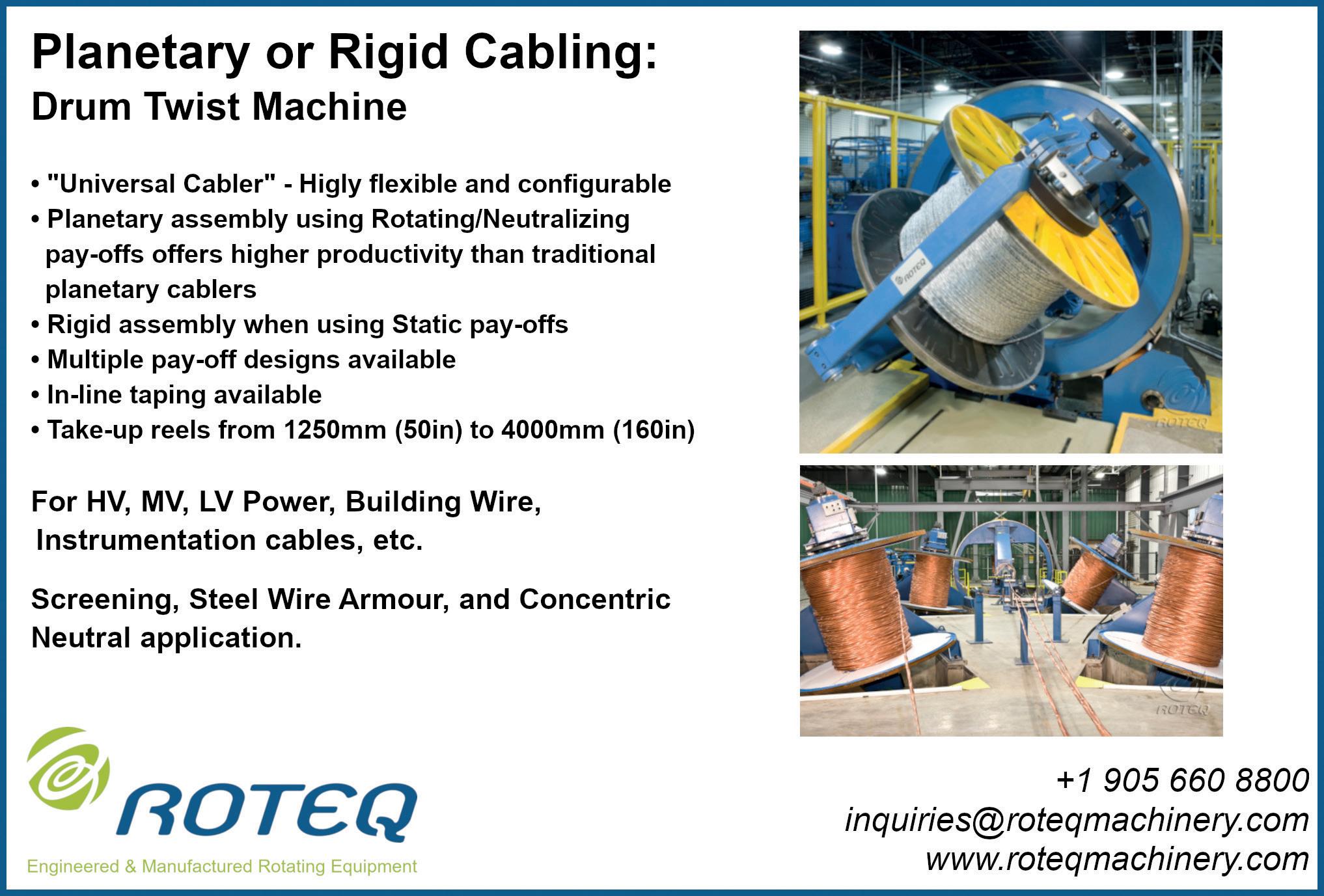
cables: a primary one linking the shore to the first offshore platform, and three infield cables connecting multiple additional platforms. These platforms will be essential for the injection of CO2 into depleted offshore reservoirs, forming the backbone of the HyNet North West industrial decarbonization cluster.
The Liverpool Bay area, part of the Irish Sea between northeast Wales, Cheshire, Lancashire and Merseyside in northwest England, is a key location for offshore energy projects.
Hitachi Energy has announced a landmark investment of over $1 billion to expand its power transformer manufacturing capacity for critical electrical grid infrastructure in the U.S.
A press release said that a centerpiece of this investment plan is the construction of a new facility in South Boston, Virginia. It will be strategically located by an existing Hitachi Energy plant that makes transformers, allowing seamless integration between transformer manufacturing and cable production, both central components in the push to modernize and expand America’s electric grid.
Hitachi—through its subsidiary Proterial Cable America (formerly Hitachi Cable America)—owns and operates a cable manufacturing plant in Manchester, New Hampshire. This facility produces copper and fiber optic communication cables for the U.S. market, and it is the only large-scale communications cable manufacturing plant that Hitachi owns in the United States.
Governor JB Pritzker joined Manner Polymers, state officials and local leaders on August 28 to cut the ribbon on the company’s new $54 million, 108,000-sq-ft solar-powered manufacturing facility in Mount Vernon, Illinois.
A press release said that the new plant will expand the company’s annual production capacity by 80 million pounds. Its flexible PVC compounds are used for wire and

cable, hose and tube, profile extrusion, and sheet products. The plant has a 15-acre solar field, along with additional roof-mounted solar panels, designed to generate nearly all of the electricity the facility requires for its operations. It will provide some 60 jobs.
Manner Polymers CEO Raj Bhargava said that the company’s vision was clear when the expansion project was announced in 2023. That was to “build the lowest cost, highest quality, most environmentally sustainable flexible PVC compounding plant in the world. Not only will we incorporate the most advanced manufacturing control systems available, but we will also produce substantially all the electricity that we use.”
As part of the incentive package, the state of Illinois provided $2.5 million in infrastructure for a new rail spur, which provides direct access to Southern Illinois’ network of rail.
Bechem, Germany’s oldest specialty lubricant manufacturer with over 190 years of expertise, announced the acquisition of CLC Lubricants, a U.S.-based producer of industrial oils, metalworking fluids, and cleaners, effective Aug. 8, 2025.
A press release said that the strategic move establishes Bechem’s first wholly owned production facility in the U.S., located in Geneva, Illinois. It said that CLC Lubricants is a small, privately held company with approximately 23-35 employees and estimated annual revenue between $4.6 million and $5.7 million. The company, which operates from a 27,000-sq-ft facility in Geneva, Illinois, has been in business since 1976.
CLC Lubricants was described as having nearly 50 years of experience and a strong market position, holding ISO 9001:2015 certification, and deep technological expertise. The acquisition enhances Bechem’s global presence and furthers expansion of its footprint in North America following the establishment of Bechem Lubrication Technology in 2014 and Bechem Mexico in 2017.
The CLC Lubricants brand and product portfolio will be retained and complemented by Bechem’s offerings, ensuring continuity for customers. “We are excited to welcome CLC Lubricants into the Bechem family,” said a Bechem spokesperson. “This acquisition strengthens our ability to serve our loyal and future customers with an expanded portfolio, including cleaners and additional domestically produced oils, backed by our shared values of service and innovation.
Tele-Fonika Kable has secured a contract to supply the onshore export cable system for Poland’s BC-Wind offshore wind farm.

A press release said that the order from Ocean Winds calls for the delivery of approximately 23 km of 275 kV high-voltage cable, fiber optic cable and dedicated accessories. Based in Spain, Ocean Winds is a 50-50 joint venture owned by EDP Renewables and ENGIE that develops offshore wind farms worldwide.
Tele-Fonika Kable Board Member Piotr Mirek said that manufacturing is planned for the fourth quarter of 2026 at the company’s Bydgoszcz facility. Its responsibilities will also include comprehensive post-installation testing of the entire cable line.
The onshore section, approximately 8 km in length, will connect the landfall point in the Choczewo municipality to the new onshore substation, with construction scheduled to begin in 2026. The BC-Wind offshore wind farm will be located north of the Krokowa and Choczewo municipalities in the Pomeranian Voivodeship. Its capacity is planned to be up to 390 MW.
The project has obtained environmental permits for its onshore and offshore components as well as a Contract for Difference (CfD). The contract, while signed, is pending final approval via an obligatory final investment decision (FID).
Leggett & Platt (L&P) recently closed the sale of its Aerospace Products Group (APG), an entity outside of its wire production that makes highly engineered tube and duct assemblies for commercial and military aircraft, as part of the company’s ongoing restructuring that started in 2024.
A press release said that the sale of APG, which has seven manufacturing facilities in the U.S., U.K. and France, is expected to net $250 million. The company plans to use

most of those funds to pay down debt and strengthen the company’s balance sheet.
The sale was the latest news in a story that traces back to late 2023 when demand for both traditional innerspring bedding and wire grid components faltered. In January 2024, the company announced a sweeping plan in its annual report that called for at least 10 wire-focused plants—integral to the production of springs and mattress foundations—to be either closed or merged. A total of 20 overall plants were targeted.
Per financial media and company reports, the net result is that all wire production is now in four U.S. locations.
The latest L&P plant to be closed was the one in Plant City, Florida, where more than 80 employees were let go as operations wound down by the end of the midpoint of 2025. The L&P specialty springs plant in High Point, North Carolina, was closed in September 2024, affecting 158 workers.
Other closures include the Saltillo, Mississippi plant (130 jobs lost in 2024) and the Commerce, California facility (impacting 55 staff). In addition to those plants, four smaller spring and wire operations were consolidated into remaining regional hubs. The actions were deemed needed to improve efficiency, reduce costs and align production capacity with new realities of market demand.
L&P indicated that the final wave of restructuring will be completed by the end of 2025, with ongoing efforts to make its wire business leaner and better positioned for future growth.
Charter Steel has significantly expanded its steel wire production capacity in 2025 with a $22.8 million investment focused on its Fostoria, Ohio and Saukville, Wisconsin facilities.
A press release said that the expansion includes the installation of four new wire draw machines at Fostoria and one new draw machine at Saukville. The Fostoria facility was also expanded by about 42,000 sq ft. Three machines are already installed and in the validation phase, while two more are expected to be operational by early 2026.
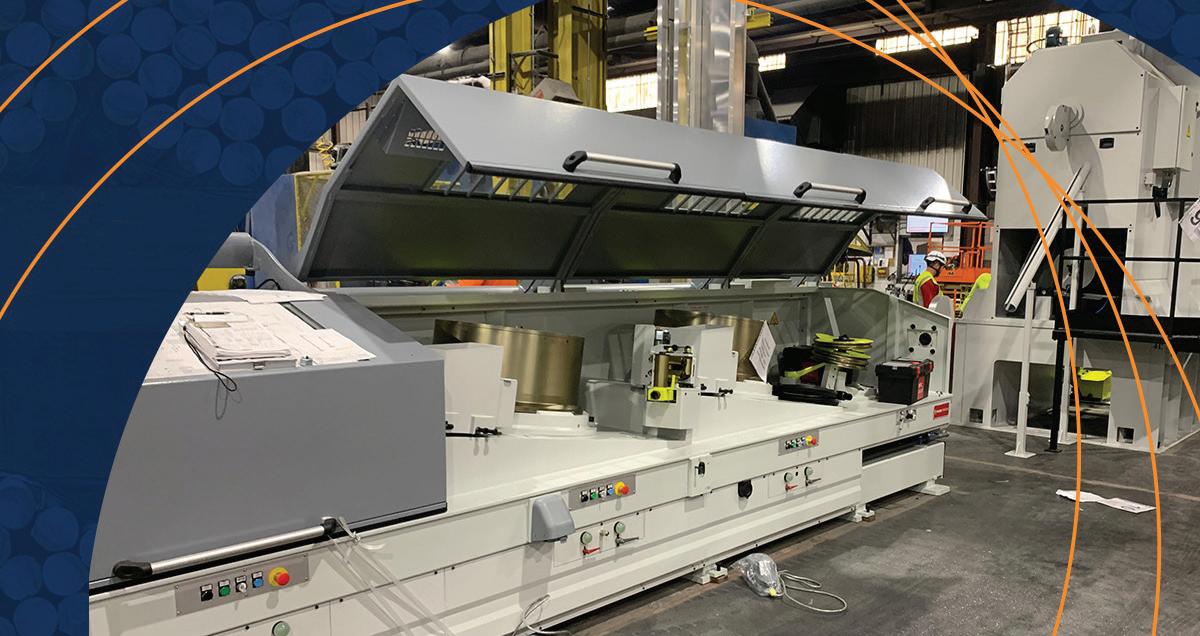
The move was expected to triple Charter Steel’s wire draw output, supporting customer demand for comprehensive and reliable steel solutions. The upgrades are designed to allow customers to interact with a single, consistent team for the entire steelmaking process—from melting and rolling to processing and finishing—streamlining purchasing with “one-stop shopping” for finished products. The expansion will create about 15 new jobs at Fostoria to staff the additional wire draw machines.

Marlin Steel President Drew Greenblatt was presented the 2025 Metalworking Reshoring Award during an industry ceremony held September 11 in recognition of leadership in reshoring and domestic manufacturing. A press release said that the award, which recognizes companies that have successfully brought metalworking operations back to the U.S., was presented by the Reshoring Initiative in partnership with the Precision Metalforming Association (PMA), the Association for Manufacturing Technology (AMT), SME, the Fabricators and Manufacturers Association (FMA), and the National Tooling and Machining Association (NTMA).
Marlin Steel reshored multiple production lines from overseas, spanning industries including medical devices, food processing and aerospace. Even high-volume commodity items such as pail handles were reshored by applying advanced automation, consistent quality control, and dependable turnaround.
One cited example was that of a U.S.-based buyer who previously sourced from Mexico that moved production of 1,500 custom wire racks to Marlin’s operations in Indiana, with final powder coat painting completed in Michigan. These racks had historically been manufactured in Mexico, but were brought back to the United States to improve turnaround time, simplify logistics, and increase product consistency.
Insights from the 2025 Reshoring Initiative Reshoring Survey further underscore why Marlin’s model works. The survey found that key factors enabling reshoring include skilled workforce training, close collaboration between supply chain and customer engineering, and fast delivery. Marlin’s embodiment of all three has been
central to its reshoring success and played a direct role in winning the award.
Marlin Steel expects its reshored revenue to double or even triple in 2026, depending on the volume of upcoming projects, reflecting growing momentum behind reshoring growth fueled by favorable tariff and trade policies.
Blachford Chemical Group announced that it has acquired Baum’s Castorine (Baum’s), combining two companies with over 250 years of innovation in specialty chemical manufacturing.
A press release said that Baum’s, based in Rome, New York, provides specialty lubricants, greases, and chemical products for the wire drawing, tube and metal-working industries, as well as transportation and industrial markets. Per both companies, Baum’s Castorine will be integrated into Blachford’s global chemical group, leveraging shared resources and expertise to expand product offerings.
Baum’s specific product lines include the Dura Draw series of nonferrous wire drawing lubricants—such as Dura Draw 891 and Dura Draw 895—for copper, brass, and tin-plated copper wire applications; the Tena-Film line of industrial oils, anti-wear and extreme pressure greases (such as TenaFilm No. 300-LTH and No. 150-TH oils); specialty maintenance products for bearings and equipment operating in demanding environments; metalworking fluids; cutting oils; coolant conditioners; and stranding lubricants. It also supplies specialty fire suppression agents under the Novacool® brand, as well as industrial cleaners and surfactants for equipment maintenance.
According to Blachford, the acquisition is expected to build on longstanding reputations for technical excellence and service, with Baum’s product lines of lubricants, process oils and additives complementing Blachford’s existing portfolio of metalworking fluids, anti-tack agents, rolling oils and additives. The combination will strengthen distribution channels in North America and globally, giving customers more options and technical support.
Details of the transaction—including financial terms and transition plans—were not disclosed, but officials said that Baum’s Castorine, founded in 1879, will retain its core team and continue serving under the Blachford umbrella.
Kanthal, a global resistance materials producer, announced that it has inaugurated a new wire manufacturing facility at its Hosur campus in India that features advanced automated processes, advanced die maintenance, fully automated spooling operations and state-of-the-art quality control and material handling systems.
A press release said that with the new 1,980-sq-m facility, Kanthal will more than triple its production capacity at the

Highest measuring rate for precise diameter and ovality
• 500,000 measuring points, 10,000 high-precision measured values per second
• Precise measured values despite cable vibrations
• Robust technology and highest availability
• Slim design with swivel concept
• FFT analysis for detecting irregularities during extrusion
• First choice for fast running lines











Hosur plant. The initiative was taken to optimize production capacity globally and to offer shorter lead times across Asia.
Kanthal established the Hosur plant in 1988. Since then, the company’s activities in the country have expanded and today, with India as one of Kanthal’s key geographical areas, the Hosur manufacturing facility has grown in importance. The expansion will enable the unit to cater to local markets in India as well as Southeast Asia, including Singapore, Korea, Japan, China, and selected parts of Europe. “This strategic investment enables us to meet the growing demand for fine dimension wire with fast lead times in Asia,” said Kanthal President Robert Stål.
Case Recruiting recently took over Wire Resources, Inc., a Connecticut-based specialized wire and cable recruiting firm, owned by Peter Carino, a well-known industry recruiter.
The new owner, Ryan Case, was led by a third party to Carino, who had recently retired. Wire Resources, Inc. was founded in 1967 and Carino bought it in 1982. The two men met, and the end result was Case transitioning Carino’s business into his: Case Recruiting (www.caserecruiting.com). “I wanted to leave my personal legacy in good hands and Ryan is filling that role,” Carino said. Carino had participated in multiple WJI features over the years. Fittingly, Case is in the October feature (see p. 52) where he shares his background and his thoughts on the current hiring market.
NKT A/S, via its Czech subsidiary, NKT s.r.o., is part of an ongoing probe by the Antimonopoly Office (AMO) of the Slovak Republic.
In a formal announcement on August 27, NKT confirmed it is part of the investigation into alleged collusion among cable industry players in Slovakia, which the company denies. The AMO’s “Request Before the Issuing of a Decision” alleges possible infringements of Slovak and EU competition law involving a local cable association and 11 cable makers, including NKT s.r.o. Proposed fines are outlined but not finalized, and NKT has contested both the findings and the suggested infringement, stating it will present a reasoned defense.
A final decision from the Slovak authorities is expected within six to 12 months. If upheld, NKT plans to consider all available legal remedies, including appeals in Slovak courts. Meanwhile, NKT s.r.o. is also under investigation by Czech competition authorities, along with five other cable manufacturers, with that review still pending.
NEC, a leading Asian undersea cable manufacturer and installer, may receive hundreds of millions of dollars in subsidies from the Japanese government to acquire specialized cable-laying vessels for digital infrastructure projects.
A government statement said that Japan is considering helping cover up to half the cost—potentially $500 million—for two ships, with each vessel estimated at $300 million. It said that the action was necessary because nearly all of Japan’s communications depend on subsea cables, yet domestic firms currently lack sovereign cable-laying capacity. NEC has relied on leasing a Norwegian vessel and other short-term charters, which officials say has exposed Japan to supply chain vulnerabilities and security risks. With foreign competitors in the U.S., France and China owning dedicated fleets, Japan’s government called its lack of owned ships “very serious.”
If approved, NEC’s first ship could be operational by 2027, strengthening the country’s ability to quickly deploy and repair digital networks. The news was posted by Tech Space 2.0 and reported by the Financial Times.

The final approval for Japan’s planned subsidies to NEC for cable-laying vessels would come from the Japanese Cabinet, specifically through the Ministry of Internal Affairs and Communications (MIC), which oversees telecommunications and digital infrastructure policy.
The initiative comes after years of deliberation. In 2023, Tokyo designated subsea cables as “vital infrastructure” and required operators to report suspicious activities but stopped short of deeper support. NEC’s CEO warned earlier this year that the company was “the only one fighting with no support” as rivals benefited from direct government backing. France’s Alcatel unit was nationalized, while China provides heavy subsidies to its telecom firms.
NEC’s cable manufacturing and installation businesses operate as a unified enterprise under the NEC Group umbrella, with the entire group engaged in the submarine cable system business and no separate brand names distinguishing manufacturing from installation.
Manufacturing is conducted primarily through OCC Corporation, a subsidiary of NEC, while installation and systems integration are supported by other NEC divisions such as NEC Networks & System Integration Corporation and NEC Platforms, but all activities are marketed collectively as NEC submarine cable solutions.
The current investigation marks one of the most extensive probes into cartel activity in Slovakia’s cable sector to date, signaling heightened competition enforcement in this critical infrastructure market. n
Specialty Cable Corporation (SCC) this year traces its lineage back 100 years, marking a century-long legacy built on steady hands that have kept production moving and customers supplied. From its foundation as Lewis Engineering Company in 1925, SCC and its predecessors have adapted alongside American industry—a journey defined by its people. Here is its story.
Specialty Cable Corporation (SCC) this year traces its lineage back 100 years, marking a century-long legacy built on steady hands that have kept production moving and customers supplied. From its foundation as Lewis Engineering Company in 1925, SCC and its predecessors have adapted alongside American industry—a journey defined by its people. Here is its story.
A hundred years in manufacturing is a testament to resilience, craftsmanship, and a workforce built to last. As Specialty Cable Corporation (SCC) marks a century of industry roots, it honors the people and principles that have kept it and its predecessors at the forefront of the wire and cable field.
A hundred years in manufacturing is a testament to resilience, craftsmanship, and a workforce built to last. As Specialty Cable Corporation (SCC) marks a century of industry roots, it honors the people and principles that have kept it and its predecessors at the forefront of the wire and cable field.
SCC’s lineage began in December 1925, when Lewis Engineering Company was established in Naugatuck, Connecticut. From those early days—working with materials like paper and cotton insulation—the business has grown to manufacture some of today’s most advanced, mission-critical cables for aerospace, defense, energy, and medical markets. This transformation has been powered by steady innovation and the dedication of employees— machine operators, engineers, lab technicians, and logistics experts—who shaped the journey at every step.
SCC’s lineage began in December 1925, when Lewis Engineering Company was established in Naugatuck, Connecticut. From those early days—working with materials like paper and cotton insulation—the business has grown to manufacture some of today’s most advanced, mission-critical cables for aerospace, defense, energy, and medical markets. This transformation has been powered by steady innovation and the dedication of employees— machine operators, engineers, lab technicians, and logistics experts—who shaped the journey at every step.
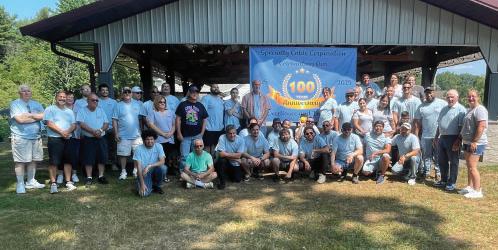
Formal entry into cable manufacturing came in 1942, as the company responded to rising demand, especially for aerospace. This strategic move laid the groundwork for future growth. In the decades that followed, the company’s identity and capabilities evolved through several ownership changes, each bringing new opportunities for specialization and expansion.
In 1968, Lewis Engineering was acquired by Revere Corporation, known for engineering excellence. A decade later, in 1978, Revere’s cable operations merged with Galileo Electro-Optics Corp to form Galite Corporation, which established SCC’s current Wallingford, Connecticut, base—a modern 65,000-sq-ft facility.
Formal entry into cable manufacturing came in 1942, as the company responded to rising demand, especially for aerospace. This strategic move laid the groundwork for future growth. In the decades that followed, the company’s identity and capabilities evolved through several ownership changes, each bringing new opportunities for specialization and expansion.
In 1968, Lewis Engineering was acquired by Revere Corporation, known for engineering excellence. A decade later, in 1978, Revere’s cable operations merged with Galileo Electro-Optics Corp to form Galite Corporation, which established SCC’s current Wallingford, Connecticut, base—a modern 65,000-sq-ft facility.
A major leap followed in 1981, when Pirelli Cable Corporation acquired Galite and merged it with Cimco Wire and Cable, boosting capabilities for aerospace and defense. In 1986, Specialty Cable Corporation became an
independent entity, focused on designing and manufacturing highly specialized cables.
Today, SCC operates as a closeknit team of about 65 employees, many of them long-tenured. One, Jerry Swantek, recently retired after 65 years with the company.
A major leap followed in 1981, when Pirelli Cable Corporation acquired Galite and merged it with Cimco Wire and Cable, boosting capabilities for aerospace and defense. In 1986, Specialty Cable Corporation became an independent entity, focused on designing and manufacturing highly specialized cables.
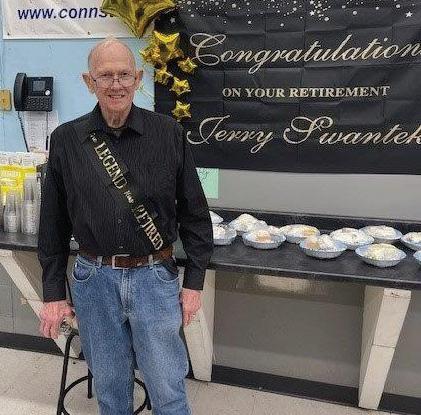
Today, SCC operates as a close-knit team of about 65 employees, many of them long-tenured. One, Jerry Swantek, recently retired after 65 years with the company. See p. 4.
“Our employees represent the best of the best in our industry,” longtime owner Carl Shanahan said. “We offer a safe, clean and respectful environment, and our people take immense pride in what we build.”
“Our employees represent the best of the best in our industry,” longtime owner Carl Shanahan said. “We offer a safe, clean and respectful environment, and our people take immense pride in what we build.”
That pride is visible in SCC’s product quality and its unwavering commitment to excellence. The company holds industry certifications like AS 9100D and ISO 9001:2015, ensuring every product meets rigorous standards.
That pride is visible in SCC’s product quality and its unwavering commitment to excellence. The company holds industry certifications like AS 9100D and ISO 9001:2015, ensuring every product meets rigorous standards.
Across its century-spanning journey, SCC has continually evolved to meet industry needs. From high-temperature thermocouple cables to pioneering fiber optic wire, SCC has never shied away from complexity. Today, it specializes in “Light and Tight” flight-critical cables, designed to be as lightweight and durable as possible.
Across its century-spanning journey, SCC has continually evolved to meet industry needs. From high-temperature thermocouple cables to pioneering fiber optic wire, SCC has never shied away from complexity. Today, it specializes in “Light and Tight” flight-critical cables, designed to be as lightweight and durable as possible.
“Our cables are built to function under the most extreme conditions,” Shanahan said. “We’ve developed a broad range of high-performance insulation materials, including advanced fluorocarbon compounds, to meet the toughest operating environments.”
“Our cables are built to function under the most extreme conditions,” Shanahan said. “We’ve developed a broad range of high-performance insulation materials, including advanced fluorocarbon compounds, to meet the toughest operating environments.”
SCC is also known for strategically leaving markets when necessary, always bringing forward the knowledge and experience gained. This flexibility has supported the company’s resilience through decades of technological and economic change.
SCC is also known for strategically leaving markets when necessary, always bringing forward the knowledge and experience gained. This flexibility has supported the company’s resilience through decades of technological and economic change.
While honoring its past, SCC is preparing for the future— exploring 3D printing for parts and integrating artificial intelligence into operations.
While honoring its past, SCC is preparing for the future—exploring 3D printing for parts and integrating artificial intelligence into operations.
“AI is now firmly part of our world and certainly will be part of SCC’s future,” Shanahan declared. “We believe in our people’s ability to learn and adapt, and I believe the environment we’ve created here makes that possible.”
“AI is now firmly part of our world and certainly will be part of SCC’s future,” Shanahan declared. “We believe in our people’s ability to learn and adapt, and I believe the environment we’ve created here makes that possible.”
That belief in people, matched by relentless pursuit of excellence, is what Shanahan said sets SCC apart as it enters its second century. With deep roots, a clear mission, and a workforce that believes in what it builds, SCC will meet whatever challenges arise as it always has: through hard work, innovation, and the strength of its people.
That belief in people, matched by relentless pursuit of excellence, is what Shanahan said sets SCC apart as it enters its second century. With deep roots, a clear mission, and a workforce that believes in what it builds, SCC will meet whatever challenges arise as it always has: through hard work, innovation, and the strength of its people. n
Editor’s note: This occasional section is a venue where the industry can discuss topics of interest, both direct and indirect. If you would like to share your thoughts, contact WJI at editor@wirenet.org.
Editor’s note: This occasional section is a venue where the industry can discuss topics of interest, both direct and indirect. If you would like to share your thoughts, contact WJI at editor@wirenet.org.
U.S. Patent No.: 12,359,750
Patent date: July 15, 2025 Filed: Jan. 2, 2024
Assignees: Joseph Heisler, III, Michael Heesler; Christopher Lanagan, USA
Inventors: same as above
Methods and apparatus for organizing wires, each wire having a terminal connector at an end of the wire. In some embodiments, the apparatus includes: an elongated body comprising a plurality of holes, wherein at least one hole of the plurality of holes is configured to pass through and retain a terminal connector disposed at the end of a wire; and a retainer attached to the elongated body, the retainer configured to removably attach the apparatus to a structure.
U.S. Patent No.: 12,359,288
Patent date: July 15, 2025 Filed: Dec. 4, 2020
Assignee: Panasonic Intellectual Property Management Co., Ltd. Japan
Inventors: Akitoshi Kasahara, et al.
A metal wire, which is one of a tungsten wire and a tungsten alloy wire, includes alkali metal on the surface thereof. The amount of alkali metal is at most 2.0 μg per 1 g of the metal wire.
U.S. Patent No.: 12,358,751
Patent date: July 15, 2025 Filed: Dec. 15, 2022
Assignee: None listed
Inventors: Matthew PaulSmith, USA
This invention provides a system for supporting and unwinding/paying out wire from multiple spools, including a framework for supporting the plurality of wire spools. A mount is constructed and arranged to attach to mobile equipment, such as a skid steer. The framework includes forward extended beams that support a plurality of removable axles. There are axles adapted to rotatably retain a plurality of spools of wire therealong. A plurality of removable sleeves are located along each of the axles that retain the spools, respectively, against motion therealong. A levelling assembly allows the axles to tilt relative to an angle at which the equipment is disposed. The spools can
be held laterally along each respective axle by clamping sleeves/spacers.
Device and method for feeding cross wires in a wire mesh welding machine
U.S. Patent No.: 12,358,386
Patent date: July 15, 2025 Filed: July 6, 2022
Assignee: TE Connectivity Solutions GmbH, China
Inventors: Eric Chatelus, Bruno Dupont, Oliver Pamart, Stephanie Gllerand
A sealed cable feedthrough of a plug connector includes a housing having an opening receiving a cable, a cover partially covering the opening, the cover having a through hole receiving the cable along an insertion direction, and a seal member sealing an interface between the housing and the cover. The seal member has a tubular member with a through hole receiving the cable along the insertion direction. The tubular member is arranged within the through hole of the cover and extends along a direction parallel to the insertion direction. The tubular member seals an interface between the cover and the cable.
Device and method for feeding cross wires in a wire mesh welding machine
U.S. Patent No.: 12,358,040
Patent date: July 15, 2025 Filed: April 28, 2021
Assignee: EVG Entwicklungs—U. VerwertungsGesellschaft Mbh, Austria
Inventors: Johann Stindl, Georg Droschl
A device for feeding transverse wires above and below a production line for mesh mats which consist of welded transverse and longitudinal wires, said device comprising an upper transverse wire feeder, which has a guide channel and which is arranged in a first position, in which transverse wires are fed along the guide channel of the production line, and comprising a lower transverse wire feeder, by means of which transverse wires can be conveyed from below to the production line, wherein a lower transverse wire store is provided, from which transverse wires can be removed by the lower transverse wire feeder, and wherein the upper transverse wire feeder is designed as a transverse wire switch, which can be pivoted at least into a second position, wherein the lower transverse wire store can be
Normally, when you drag your feet, the consequences aren’t good. As Benjamin Franklin advised, “Never leave till tomorrow that which you can do today.” Obviously good advice.
But, when it comes to patent protection, Mark Twain gives us better advice: “Never put off till tomorrow what may be done (the) day after tomorrow just as well.”
Delay can be a huge advantage in the patent world. I’m referring to the strategy of filing continuation applications to catch competitors who design around your patents. Basically, you get a patent allowed and then re-file the application with different claims before the patent issues. It’s been done for decades and is at the heart of the Google v Sonos case.
The case involves prosecution laches, a legal term that basically means, “You waited too long in the Patent Office, and that’s unfair.” The district court decided that Sonos’s patents on multi-room “zone scene” technology were unenforceable because they introduced key claims 13 years after their initial patent application was filed.
Sonos appealed to the CAFC, which reversed the lower court’s ruling. The CAFC decision offers valuable guidance for anyone seeking patents.
The story begins with a 2006 provisional patent application. Sonos kept the patent family alive through continuation applications but didn’t include the specific “overlapping zone” claims until 2019, just as Google was launching competing smart speakers. Sonos clearly drafted claims to cover the Google system.
Judge Alsup of the Northern District of California saw this as a classic ambush. He held that Sonos unreasonably and inexcusably delayed and that this delay prejudiced Google. To him, it looked like Sonos had waited in the weeds until the market developed, then whipped out claims designed to target a competitor’s existing products, which is what they did, all but the waiting in the weeds part. In his view, this triggered prosecution laches, and he wiped out Sonos’s $32 million jury verdict. One might think that a wrong had been righted.
Fast forward to August 28, 2025. The Federal Circuit stepped in and said: not so fast.
The appellate court agreed that prosecution laches are real, but reminded us that it requires more than just delay. The challenger must show material prejudice, meaning the delay caused actual harm, such as making investments in ignorance of hidden claims.
Google couldn’t show material prejudice because Sonos’s application disclosure was made public in 2013, when its first patent was issued. (Note: Sonos chose to keep its patent application secret until the patent issued, which is allowed.) This public disclosure of the invention details occurred before Google made any investments in its product. In other words, the public already had notice of the overlapping-zone idea even though it had not been claimed.
The Court stated that “[I]t is not improper for an applicant to broaden his claims during prosecution to encompass a competitor’s products,
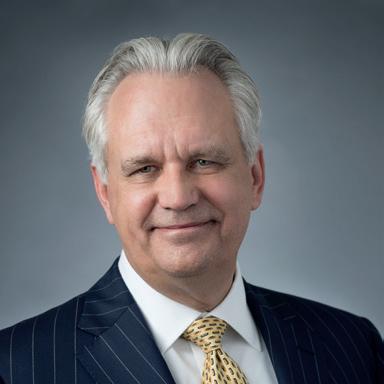
as long as the disclosure supports the broadened claims.”
Basically, the Court upheld the use of continuation applications to later broaden claims to catch a competitor. It isn’t material prejudice because the public is aware of everything that can be claimed in a patent application, since it is publicly available.
So, what does this courtroom drama mean for the rest of us?
First, delay alone won’t sink you. Continuation practice is alive and well. Just because you prosecute a patent application for many years doesn’t mean laches will apply. The key is whether your delay materially prejudiced someone else. Second, disclosure is your shield. Once your application publishes, competitors are on notice. If they invest anyway, it’s tough to argue surprise. The Federal Circuit leaned heavily on that in this case. Third, a non-publication request could be an issue. Sonos requested that its patent application not be published, so the first publication occurred six years later, in 2013, when that patent was issued. If Google had made investments before 2013, there may have been a different result. This suggests that non-publication practice should be carefully considered.
This case reminds us that patents are more than paperwork; they’re weapons, shields, and sometimes boomerangs. For now, continuation practice remains a safe and vital part of the patent strategist’s playbook and should be considered for all critical inventions.
-Bill Honaker
Bill Honaker has been an intellectual property attorney for more than 30 years, helping businesses—from Fortune 100 firms to individual entrepreneurs—protect their patents, trademarks and copyrights. A former Patent Office Examiner, he is a partner with Dickinson Wright, PLLC. He notes that he is especially good at keeping clients out of court. He can be contacted at whonaker@dickinson-wright.com, tel. 248-433-7381.
loaded with transverse wired by the transverse wire switch in the second position.
and equipment for installing a power cable in a deployment site
U.S. Patent No.: 12,355,219
Patent date: July 8, 2025 Filed: May 3, 2022
Assignee: Prysmian SpA, Italy
Inventors: Marco Bacchini, Simone Manfredi, Mario Genovesi
The present disclosure relates to a method for installing a single power cable span in a deployment site comprising a rail for supporting the single cable span by trolleys, the method comprising the steps of providing a conveyor belt outside of the deployment site, the conveyor belt having a plurality of locations set at a predetermined distance one from the other along a longitudinal movement direction of the conveyor belt and moving integrally with the latter; repeating the following steps until the single cable span reaches a predetermined position while the conveyor belt is moving, positioning a first part of a holder at one of the locations; while advancing the single cable span, laying a portion thereof on said first part of the holder positioned at the location moving with the conveyor belt; connecting a second part of the holder to the first one to lock the cable span portion in between; while the cable span portion locked by the holder is leaving the conveyor belt, removing the first part of the holder from the location moving with the conveyor belt. According to another aspect, the present disclosure relates to an equipment for the installation of a single power cable span in a deployment site.
U.S. Patent No.: 12,354,771
Patent date: July 8, 2025 Filed: Sept. 26, 2022
Assignee: Proterial, Ltd., Japan
Inventors: Hirotaka Eshima, et al.
A composite cable includes a plurality of internal cables and a covering member covering peripheries of the plurality of internal cables. At least one of the plurality of internal cables includes at least one electric wire having a conductor, a first sheath covering a periphery of the at least one electric wire, a shield covering a periphery of the first sheath, and a second sheath covering a periphery of the shield.
U.S. Patent No.: 12,354,770
Patent date: July 8, 2025 Filed: April 29, 2022
Assignee: Ying Hao Technology Co., Ltd., Taiwan
Inventor: Chih-Jung Chen
A flexible flat cable includes an upper bonding adhesive layer and a lower bonding adhesive layer bonded together, a plurality of bare wires being sandwiched, an upper metal shielding layer located on an upper side of the upper bonding adhesive layer and adhesively attached to the upper bonding adhesive layer, and a lower metal shielding layer located on a lower side of the lower bonding adhesive layer and adhesively attached to the lower side of the lower bonding adhesive layer.
U.S. Patent No.: 12,354,765
Patent date: July 8, 2025 Filed: June 22, 2021
Assignee: Komax Holding AG, China
Inventors: Cassian Straessle, Dominik Staubli, Jan Lochmatter
A method and a device twist single cables about a twisting axis. The single cables each run along a cable axis and have wires, which are twisted in a strand twisting direction to form a strand, and also each have a first cable end and a second cable end. The first cable ends are held separately by a single rotating unit in each case. The second cable ends are held by a twisting unit. The second cable ends


are rotated jointly about the twisting axis counter to the strand twisting direction to produce a twisted cable bundle. During the joint rotation, the first cable ends are rotated separately about a cable axis of the respective single cable, in the same rotation direction as the joint rotation. The single cables are each relieved of torsion thereby.
cable with SZ stranded routable fiber carrying subunits
U.S. Patent No.: 12,353,042
Patent date: July 8, 2025 Filed: March 30, 2023
Assignee: Corning Research & Development Corporation, USA
Inventor: Bradley Jerome Blazer
An optical fiber cable that includes subunits is provided. Optical fiber cables are used to transmit data over distance. The subunits are twisted and stranded within the cable to reduce degradation of stranding during use of the cable. The subunits of one or more optical fiber cables are arranged in complimentary configurations that counteract their varying asymmetrical forces to provide an improved handling performance for the optical fiber cable.
Fiber optic cassette with cable manager and system
U.S. Patent No.: 12,353,039
Patent date: July 8, 2025 Filed: Oct. 31, 2022
Assignee: Belden Canada ULC, Canada
Inventors: Moise Levy, Luc Milette, Christian Roa-Quispe, Dwayne Crawford
There is disclosed a fiber optic cassette comprising a cassette body comprising a plurality of optic fiber receptacles arranged along a front thereof and a multifiber receptacle along a back thereof opposite the first end, the front and back defining a cable assembly receiving region there between, and a plurality of optic fibers. Each of the optic fibers terminated at a first end by one of the receptacles and all of the plurality of optic fibers terminated at a second end the multifiber receptacle. In an embodiment a casing is molded over a middle portion of each of the plurality of optic fibers and received within the cable assembly receiving region. In a particular embodiment the cassette is reversible and comprises a reversible securing element which is secureable on either side of the cassette body.
Systems devices and methods
U.S. Patent No.: 12,352,827
Patent date: July 8, 2025 Filed: Oct.1, 2024
Assignee: Gistech Technologies 2023 Ltd., Israel
Inventors: Moshe Ben Basat, Eran Glikman, Zvi Biener
An electrical circuit board for testing at least one cable, which comprises one or more wires, the circuit board comprising: an input connector configured to be connected to one end of the one or more wires; an output connector configured to be connected to the other end of the one or more wires; at least one processor connected via a first signal driver to the output connector; an Analog-to-Digital Converter (ADC) and a second signal driver, an SPXT (single pole, X throw) switch configured to connect the input connector to the input circuit; an oscillator circuit coupled to the at least one processor, an energy source; and wherein the at least one processor comprises a plurality of signal generation modules, which are configured to: generate and transmit at least one test signal through the end of the one or more wires of the at least one cable; receive the at least one test signal transmitted through the other ends of the one or more wires of the at least one cable; and analyze the at least one test signal using one or more signal measurement logic methods to yield data comprising intermediate test results or final test results which relate to one or more faults in the at least one cable or characteristics of the at least one cable.
(Patent Report continued, see p. 64)

The Chemours Company (Chemours) has signed a strategic agreement with India’s SRF Limited (SRF) to expand its capacity and strengthen its presence in the region.
A press release said that the partnership will expand Chemours’ global supply chain, enhance operational flexibility and ensure greater reliability in the supply of fluoropolymers and fluoroelastomers, key materials for industries such as semiconductors, automotive, aerospace and chemical processing.

Per the website of SRF, the company’s involvement with wire and cable centers on aluminum wire, welding wires, technical textiles, and certain specialty connectors. Some listings include aluminum cables and black cable wire connectors, and SRF also manufactures a variety of specialty chemicals and fluoropolymers. U.S.-based Chemours provides several products for the wire and cable industry, most notably its Teflon™ fluoropolymer resins (including PTFE and Tefzel™), which are used for wire and cable insulation and jacketing, as well as Viton™ fluoroelastomers used for applications such as high-voltage cables and certain automotive wire coatings

While U.S.-China rivalry dominates headlines over Southeast Asia’s subsea cable infrastructure, a recent report issued earlier this year by ISEAS –Yusof Ishak Institute, spotlights a less-publicized reality: most of the region’s new undersea systems are actually supplied by Japanese companies, not Chinese or American ones.
The nuanced analysis, “The Struggle for Subsea Cable Supremacy in Southeast Asia: ASEAN Relying on Diverse Suppliers,” was authored by Research Officer Cha Hae Won and reflects the Singapore-based institute’s mission of providing policy-relevant research to support regional understanding and prudent policy choices.
Subsea cables transmit over 95% of global data traffic, underpinning everything from financial transactions and entertainment to social communication and government functions. The growing strategic value of these cables has brought them to the heart of great power competition, particularly between the U.S. and China. Tensions have escalated as both Washington and Beijing vie for influence over this critical infrastructure, each viewing it as a strategic frontier for control over digital traffic and data security.
The collaboration will enable SRF to draw on Chemours’ expertise in industrial chemicals and specialty intermediates to meet growing global demand without requiring upfront capital investment. “This ... exemplifies our Pathway to Thrive strategy as we continue to shift our product mix to higher value applications, enhancing our position as a trusted supplier paired with our commitment to responsible manufacturing practices,” said Chemours President and CEO Denise Dignam.
Prashant Yadav, president and CEO of SRF’s fluorochemicals and technical textiles businesses, said that the collaboration will benefit both companies. “We are proud to reinforce our position as a trusted manufacturer of advanced materials and believe this marks the beginning of a strong relationship with a global leader in performance chemicals and advanced fluoropolymers.”
Chemours employs approximately 6,000 people at 28 manufacturing sites worldwide, that includes 16 plants across India, Thailand, South Africa and Hungary. It exports to over 100 countries.
SRF has 16 manufacturing plants sites, including 13 in India and one each in Thailand, South Africa and Hungary, and exports to more than 100 countries worldwide.
China’s “Digital Silk Road” initiative—a component of the Belt and Road Initiative—has provided Chinese cable firms with unprecedented state support, including subsidies, technical development, and diplomatic muscle. This has allowed Chinese companies to aggressively compete on price and technology, winning key subsea projects, especially in Cambodia and Indonesia. Beijing’s assertive steps in the South China Sea, including blocking foreign cable projects, have raised alarm among competitors and regional states alike, who fear potential supply disruptions or security threats in periods of friction.
The U.S., meanwhile, has harnessed a mixture of diplomacy, sanctions, and new “minilateral” partnerships to exclude Chinese participation in high-profile cable projects and strengthen its own influence. The recent rerouting of the SeaMeWe-6 contract from China’s HMN Technologies to America’s SubCom, after diplomatic pressure and threats of sanctions, exemplifies this tug-of-war. These developments cast subsea cables not just as infrastructure assets but as highly strategic elements on the global geopolitical chessboard.
Yet, the ISEAS report strongly cautions against reducing Southeast Asia’s subsea cable landscape to a simple U.S.-China binary. Drawing from the TeleGeography Submarine Cable Map, it finds that Japanese suppliers— primarily NEC and Fujitsu—account for more than 40% of new cable projects across the region, compared to the US (20%), China (19%), and France (18%). This breakdown visually reinforces the region’s multipolar approach to critical infrastructure. France, represented by ASN, is a major player as well, especially in Indonesia and the broader area. American and Chinese suppliers trail Japan’s market share, and no single supplier or nation dominates.

This multipolar landscape is the result of deliberate strategizing by Southeast Asian countries, who are keen to avoid the risks of overreliance on any one nation. Regional governments have actively diversified their supply sources to include an array of suppliers from Europe, Japan, and beyond, often structuring contracts to encourage technology and supplier diversity within a single project. Japan’s preeminent status in subsea cables is rooted not just in market-driven competition, but in strong public-private cooperation. The Japanese government has provided direct financial support, loans, and investment incentives to bolster NEC’s regional expansion, viewing digital infrastructure as a national strategic asset.
The ISEAS report’s central message is that, while security concerns—especially regarding espionage and disruptions—should not be discounted, policymakers and industry leaders must resist being drawn into simplistic narratives to the detriment of practical supply diversity. As the U.S. and China step up efforts to nudge Southeast Asian states into mutually exclusive cable alliances, the risk of technological fragmentation and supply chain disruption grows.

Editor’s note. The report that provided the details comes from ISEAS Publishing, a unit of the ISEAS–Yusof Ishak Institute that notes that it has issued more than 2,000 books and journals, and that it is the largest scholarly publisher of research about Southeast Asia from within the region.
For more about ISEAS go to www.iseas.edu.sg.
South Korea’s Cable & Solution reports that it hit an all-time high in its order backlog, surpassing 3 trillion won. The company announced on Sept. 9 that its order backlog as of the end of last month reached a record high of 3.25 trillion won (approximately $2.34 billion).
A press release said that since its 2021 acquisition by South Korea’s Hoban Group, Taihan Cable & Solution has steadily increased its order backlog through synergy effects, more than tripling that amount, with a compound annual growth rate topping 30%.
The order backlog does not include the materials business that processes copper wire, the telecommunications cable business or sales volumes for domestic private sector clients. It primarily consists of high-profit, mid to long-term project orders, mostly ultra-high voltage power grids.

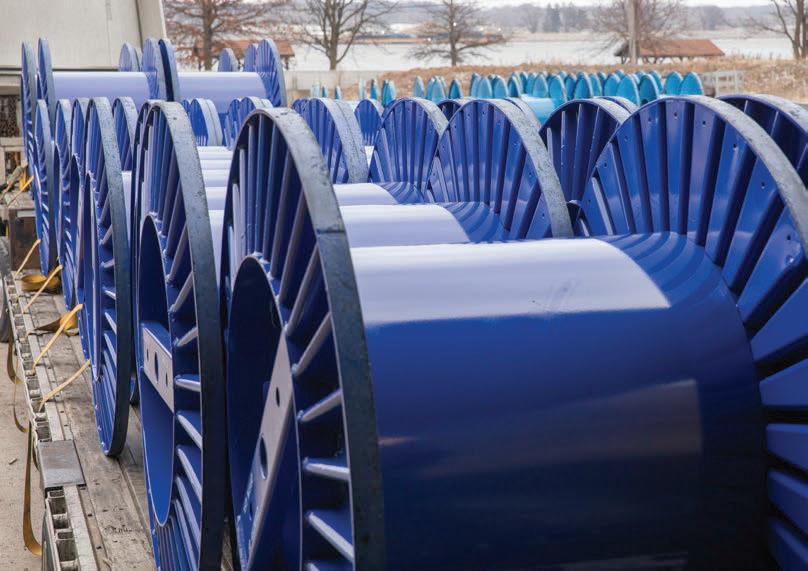







































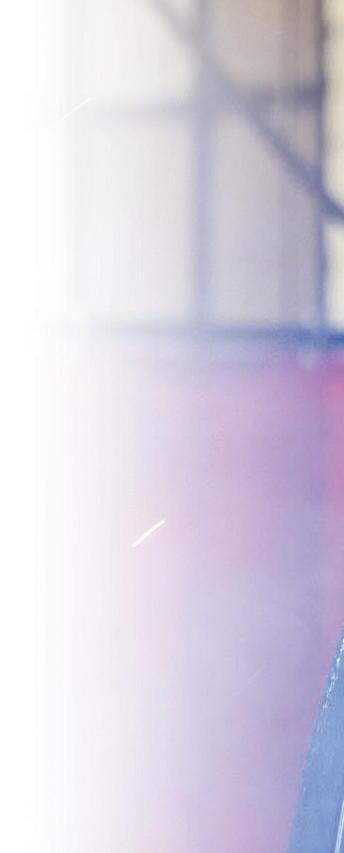












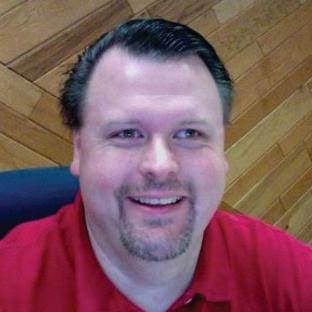
Molex has named Jim Foster as its director of operations at the company’s plant in South Grafton, Massachusetts. He has extensive experience in extrusion, braiding and custom cable manufacturing gained over more than 30 years. That includes working for nearly two decades at JSC Wire & Cable, where he served in roles such as project management, supply chain, plant operations and general management. Prior to that he also worked for Winchester Electronics, Lincoln Electric Products and Spiradrill. A global business based in Lisle, Illinois, with more than 70 plants, Molex manufactures electronic connectors, wire and cable solutions for automotive, medical, industrial and data applications.
Annelise Mackiewicz was named inside sales and marketing manager for Able Coil & Electronics. She most recently was the sales and marketing coordinator for ITEC. Prior to that, she served as marketing and sales coordinator for FENN, where she worked from 2021 to 2024. She holds a degree in communications from the University of Connecticut. Based in Bolton, Connecticut, Able Coil & Electronics supplies custom precision-wound coils, transformers, and integrated electromechanical assemblies for industrial applications.

tal projects. Earlier this year, the company also promoted Mike Spencer from vice president of sales to CEO. He previously served as vice president, construction east at WESCO Distribution from 2021 to 2024. Earlier, he spent over two decades at Anixter in multiple senior leadership roles across New England, Southern California, and New Hampshire. He began his career with Anixter in inside and outside sales. Based in Blaine, Minnesota, LindFast Solutions Group is a global distributor of fastener solutions.

Heinrich Weiss, a transformative force in the global steel and metals industry, died on Sept. 8, 2025, in Düsseldorf, Germany, at age 83.
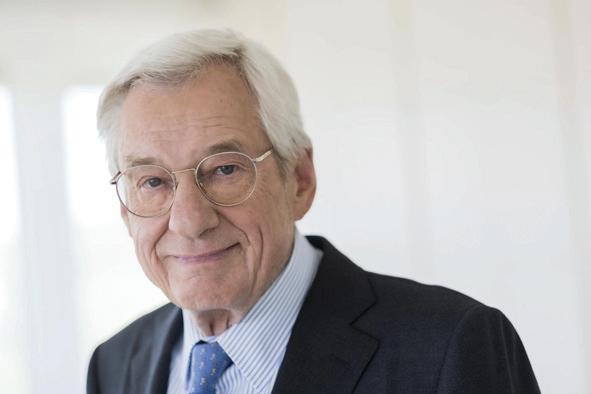

LindFast Solutions Group (LSG) has named Steven Dean as chief commercial officer (CCO), effective immediately. He has more than three decades of industry experience, with a strong focus on the wire, cable and fastener sectors. That includes more than 20 years at Wesco Anixter and Anixter, where he held numerous key roles, such as senior vice president & general manager, utility; executive vice president, utility power solutions; and senior vice president, global EPC and capi-
Per the company’s website, Weiss took the helm of the SMS Group in 1971 at age 28 and directed the OEM for more than five decades. He led the company from a regional enterprise into a world leader in metallurgical plant engineering, providing systems that include rolling mills, bar and wire rod mills, continuous casting lines, and annealing and galvanizing lines.
Weiss remained closely involved in the company’s development until recently. For more than five decades, he led the family business as its fourth-generation head. He was praised for his strategic vision and industry stewardship. “Heinrich Weiss was not only a significant entrepreneur but also a person of clarity, integrity and passion ... fostering SMS’s growth while remaining deeply engaged with employees and values, a legacy that endures,” said Johannes Frauendörfer, chairman of the Weiss Family Foundation Board. n
Fiber optic cables have long been central to global connectivity, powering the bandwidth of the modern internet. Building on decades of innovation, a University of Southampton team led by photonics researcher Francesco Poletti has reported a major advance—a hollow-core optical fiber cable that sets new standards for speed and efficiency. Per details published in Nature Photonics, the new cable design features an air-filled core, surrounded by ultra-fine glass structures engineered to guide light with unprecedented precision. Unlike conventional solid-core fibers, which transmit light through glass at a reduced speed and with measurable loss, the Southampton approach lets the signal travel primarily through air. This architecture sharply cuts optical attenuation, resulting in up to 1,000 times greater information-carrying capacity and a notable reduction in the energy lost as light travels along the cable.
Experimental results showed attenuation as low as 0.091 dB/km at a commonly used telecom wavelength of 1,550 nm—beating the previous minimum for conventional silica fibers and holding below 0.2 dB/km across a broad spectrum. The cable’s chromatic dispersion is seven times lower than traditional fiber, simplifying receiver design and increasing energy efficiency for large-scale networks.
Most notably, light pulses travel through the hollow core almost 45% faster than through glass alone, with speeds approaching the theoretical limit for fiber transmission.
The implications for industry are significant. Network designers will need fewer repeaters to maintain signal strength over transcontinental or undersea lines, reducing both infrastructure cost and power demand. This technology is expected to benefit not only telecommunications, but also cloud data centers, AI model training, advanced medical imaging, and quantum communications—thanks to the fiber’s exceptionally low loss, broad bandwidth, and minimized latency.
“We really think this could be transformative,” Poletti was quoted as saying in the Nature Photonics report.
Per wire reports, large technology firms, including Microsoft, are already piloting this new hollow-core fiber in data centers, positioning it as a cornerstone of next-generation global connectivity. Research is ongoing to further reduce attenuation in mass production and optimize fibers for diverse operational wavelengths. Southampton’s hollow-core fiber technology could offer a pathway to faster, more energy-efficient digital infrastructure and redefining the limits of optical information transmission.

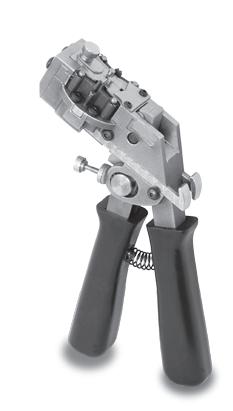




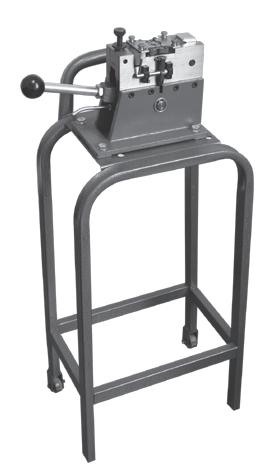


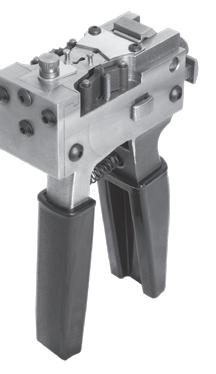









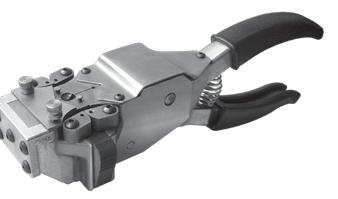
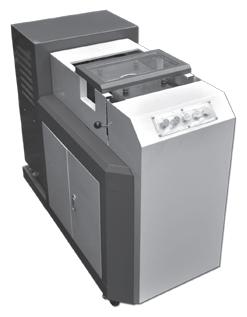

U.S.-based Triangle Fastener Corporation (TFC) has finalized the acquisition of DB Building Fasteners (DB), effective Aug. 8, 2025, a deal that advances its strategic expansion in the western United States.
A press release said that DB, headquartered in Ontario, California, is a supplier of fasteners and related products for the metal building and metal components construction market. The business, founded in 1997, operates two locations and employs approximately 25 people, generating $11.5 million in sales in 2024.
TFC officials said that the addition of the DB team will enhance its proprietary product lineup and broadens its service footprint. The deal follows up on TFC’s November 2024 acquisition of Pro Fastening Systems. With the addition of DB, Triangle Fastener now operates 32 U.S. locations, three distribution centers, and nine paint facilities for fastener finishing, further supporting jobsite needs and specialized finishing services across North America.
Company leaders noted that integrating DB’s experienced personnel and established sales channels will strengthen TFC’s ability to deliver value and technical support to customers nationwide. Since its founding in 1977 in Pittsburgh, TFC has evolved into a national

supplier serving roofing, metal building, drywall, and acoustical trades. It features proprietary brands such as Concealor®, Blazer®, and APS500®, along with a range of patented construction solutions.
TFC is a subsidiary of the SFS Group, a global fastening and precision component manufacturer headquartered in Heerbrugg, Switzerland, with operations spanning 140 sites in 35 countries and 13,500 employees worldwide.

The following list includes new WAI members, renewing members and those who became Premium members through their companies.
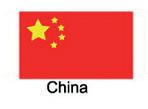



Lloyd Askew Consulting Lloyd Askew Consulting
David Bivins Controls Engineer Corning Optical Communications
William Black Sales Engineer Heidelberg Materials
Emmett Blalock Foundry Project Manager Wieland-Werke AG
Paul Bodnar Condat Corp
Victor Cabanes Brull 3P US General Manager 3P Performance Plastic Products
Doriana Cami Analyst TE Connectivity
Anthony Carignano Globall New Business Development Manager Elementis Global LLC
Christian Daniel Cervantes Engineering Manager Molex
Tyrone Cotton Marquis Process Engineer Southwire Company LLC
William Couse Vice President Balloffet Die Corp USA
Jack Craig President/CEO Craig Wire Products LLC
Leeza Day Human Resources Manager Summit Plating
Luke Dewberry Sales
Rainbow Rubber & Plastics Inc
Michael Dorfman Vice President American Wire Group
Mesut Erdin Production Manager Lamnifil NV
Joseph Falcon Senior Materials & Process Engineer Glenair Inc
Steven Gencarella Vice President Davidon Alloys Inc
Greg Gitto Vice President Sales Tosaf USA
Christine Graham Vice President Industrial Wire & Cable Corp
Joseph Granchi Engineering-Methods Lincoln Electric Co
Hayden Haas Mechanical Engineer Wieland-Werke AG
Lance Hampel CEO Hampel Corp
Dean Hardesty Product Planning Manager Haynes Wire Co
Jimmy Head Production Alan Wire
James Herman Director ESSEN Steel Industry LLC
Keith Hoover Vice President of Customer Experience Superior Essex Communications
Mark Hurt Operations Manager WCJ Pilgrim Wire
Erin Jackson Quality Assurance Manager WCJ Pilgrim Wire
Niels Johnson Sales Manager - IRW RoMan Manufacturing Inc
Nathan Jones Sales Director Web Industries Inc
Simon Jones
Operations Coordinator WCJ Pilgrim Wire
Michael Krueger Regional Sales Manager Traxit North America LLC
Nathan Labecki Sales Representative WCJ Pilgrim Wire
Karl Liu CEO Metalnext Group Ltd
Will Loeffler Regional Sales Manager ACS Group
Jovany Lopez Vice President - Sales Nylon Corporation of America
Harimohan Maurya Manufacturing Anchor Electricals Pvt Ltd
Chuck McLendon
Senior Operations Manager Southwire Co
Thomas McNeil Director of Engineering & Maintenance Wieland-Werke AG
Thanasis Molokotos Owner Hellenic Cables Americas Co
Jeremy Moore Environmental Health & Safety Professional Southwire Company
Jean-Francois Morizur Vice President of Technology GEON Performance Solutions
Matthew Nakroshis Project Manager/ Kaizen-OEM Lake Cable LLC
Peter Neville Sales Manager B & H Tool Company
Timothy Norris Project Engineer Southwire Co - Forte Power Systems Inc
Colin O’Donnell Vice President of Engineering Bedford Industries, Inc.
Teryn Outen Executive Support & Procurement Assistant Mar Mac Industries Inc
Nicola PILONE President Feinrohren PT
Chandrasekharan Renjith Director of Engineering Direct Wire & Cable
Bradley Russell Jr Vice President Gibbs Interwire
Tarang Sasani CEO Atlanta Pallet Rack Inc
Thomas Schelling Senior Technical Service Associate – Wire & Cable Teknor Apex Co
Grant Schwartz President K&S Wire Products Inc.
Harry Scoble President Summit Plating
Doug Sedgwick Ambassador Coordinator Skaltek Inc
Kris Shaw Sales Manager WCJ Pilgrim Wire
Vasuj Shrimanker Pelican Rotoflex Pvt Ltd
David Simpson Vice President Worldwide Superabrasives LLC
Mike Skorupa Director of Operations Rubadue Wire Co Inc
Brad Taylor
Technical Manager Onesteel Wire Pty Ltd
Marco Vazquez Process Engineer Champlain Cable Corp
Bradley Walther Regional Sales Manager LaserLinc Inc
Rodney Williams Vice President Bedra Inc
Tiffany Yates Supervisor Southwire Co
Samih Zamzam Consultant Midal Cables BSC
Founded in 1930, WAI is a worldwide technical society for wire and cable industry professionals. Based in Madison, Connecticut, USA, WAI collects and shares technical, manufacturing, and general business information to the ferrous, nonferrous, electrical, fiber optic, and fastener segments of the wire and cable industry. WAI organizes events such as Interwire and Wire Expo, technical conferences, and educational programs. It publishes the Wire Journal International (WJI), the annual WJI Reference Guide, the Official Show Program, the HardWIRED educational e-newsletter, and reference materials.
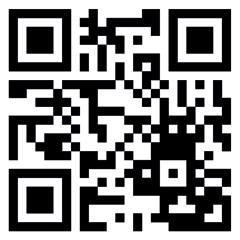
Wire Journal International is the official publication of the Wire Association International, Inc.
On Wednesday, Nov. 5 at 11 am EST, WAI will host a live extrusion webinar led by industry expert Rick Chamberlin of Hawkins Consulting, LLC. The fastpaced, 30-minute session will provide practical takeaways while offering a sneak peek of WAI’s four online extrusion training courses.
Participants will get a teaser of the key concepts and techniques covered in the full courses, enough to spark interest and provide immediate value without getting too deep. The webinar will also feature an interactive knowledge check and a live Q&A, giving attendees a chance to engage directly with the instructor.
Registration is available at the Association’s website at wirenet.org via the calendar of upcoming events. Don’t miss this opportunity to get a firsthand look at WAI’s extrusion training content.
The good news is that the vast majority of the August preview for Wire & Cable Kraków is still accurate. Below are some of the key elements of the international conference to be held Tuesday, Oct. 14, at the Holiday Inn Kraków City Centre in Kraków, Poland.
The 28 presentations will be presented in concurrent ferrous and nonferrous sessions. They will explore and cover topics such as production efficiency, product development and sustainability. A tabletop exhibition will accompany the conference. See p. 38 for the list of companies/organizations that have reserved a spot.
Scheduled speakers come from companies/universities that include Aeroel Marposs, AGH University, Astarte Stategies Srl, Bekaert, Caleotto SpA, Celanese, CRU, Czestochowa University of Technology, Eder Engineering, Hyperion, InnoVites, Łukasiewicz–GIT, Maschinenfabrik NIEHOFF GmbH & Co. KG, Metalube, the MFL Group, the Pittini Group, SAMP Group, Tata Steel, Taymer Europe, TKT Group, Tokai University, University of Milano-Bicocca, Windak Group and WiTechs.
Registration for all event elements can now be done at www.wirecable25.com. The four event organizers include WAI, ACIMAF, the AGH University of Kraków and the International Wire & Machinery Association
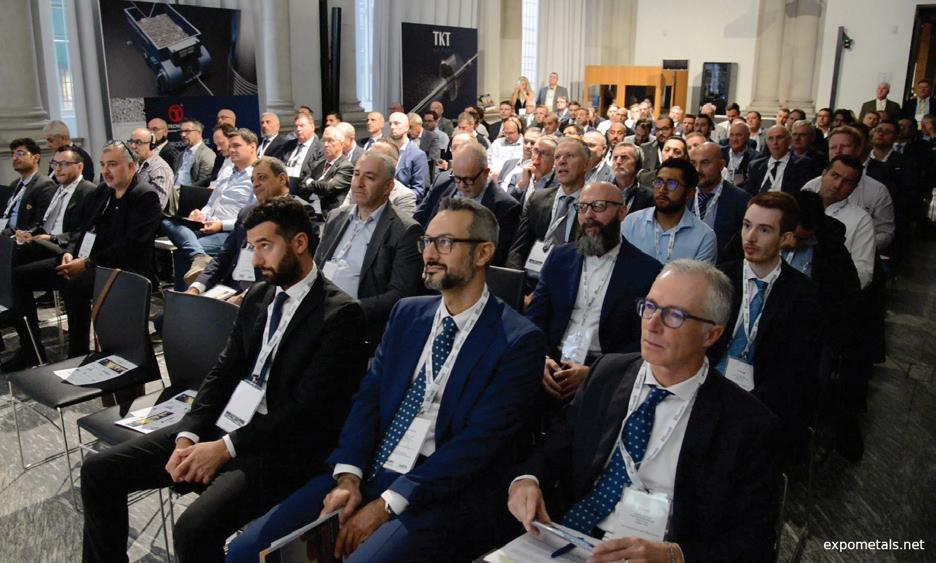
(IWMA). The International Wire and Cable Machine Exhibitors Association (IWCEA) is also an event sponsor. WAI’s Poland Chapter is graciously providing administrative services. The event is backed by media partner Expometals.net and supported by WJI. Other sponsorship opportunities are still available.
The experience includes a gala dinner on the day of the conference at the historic Stara Zajezdnia Kraków by DeSilva in the heart of Kazimierz.
The WAI Education Center’s recent two-part webinar on distinguishing high-quality wire dies from substandard ones featured expert insights from Hyperion Materials & Technologies.
The first session, “Differentiating High-Quality PCD Wire Dies,” explored carbide and PCD (polycrystalline diamond) fundamentals, highlighting issues like EDM cutting problems and cracks. See p. 50.
The second one, “Key Differentiators in Carbide Wire Dies,” focused on carbide materials with an interactive segment covering issues such as casing problems, breakage, cavities, and scratches.
The recorded webinars are now available on-demand through WAI’s learning platform. The educational resource is free to WAI members, a valuable member benefit. Registration for WAI webinars is $75 for non-members, making membership ($150/year) an attractive option for those interested in both sessions and seeking further discounts on training and events. n


Artificial Intelligence. Where human curiosity and technology meet.
If you are on a mission to learn how AI suits your manufacturing plans, turn to the Wire Association International’s educational resources for answers.
Meet experts at WAI conferences who will introduce you to AI and other advancements. Learn how to make faster, smarter decisions with AI to boost productivity. And see how companies use this new technology with proven results.
WAI’s programs embrace change...for the better. They are designed to help you meet your educational and manufacturing goals. That’s our mission and it has been for 95 years.
Connect with peers who are centered on AI. Use the QR code to reveal why members around the world rely on WAI. Not a member?
JOIN TODAY: www.wirenet.org

The New England Chapter returned to the Tunxis Country Club in Farmington, Connecticut, for its 31st annual golf outing on what proved to be an utterly gorgeous day for the 143 golfers.
Coming out on top was the Lloyd & Bouvier team (pictured with trophy) of Michael Tucker, Darren Tucker, Joe Yabba and Gibson Yabba that shot a very respectable score of 15 under par. In second place, at 12 under, was the Web Industries team of James Evans, Trevor Lucas, Dave Morgan and Jordan Pihl. Third place went to the Little Falls Alloys team of Jeff Lawrence, Mike Sarni, Jake Pelletier and Sean Donnelly, 11 under.
The day had begun with the tee-off breakfast sponsored by James Monroe Wire & Cable Corp., and during play players could stop at designated lunch shacks—



sponsored by Teknikor and Carris Reels—scattered throughout the course. Though golfers took their game seriously and the competition was fierce, players had a great time. Multiple golfers commented on how much they appreciated the brisk pace of play.
Following the tournament, players gathered at the pavilion for the dinner and awards ceremony, where the coveted New England Golf Tournament trophy was presented. The victorious team will keep it until the competition returns next year.
Event participants could also win an array of raffle prizes donated by a slew of generous sponsors. The winner of the grand prize—a set of TaylorMade Irons valued at $800—was Chris McCormick of Lightera, although the biggest winner was the chapter’s scholarship fund. Players dug deep for raffle tickets, adding
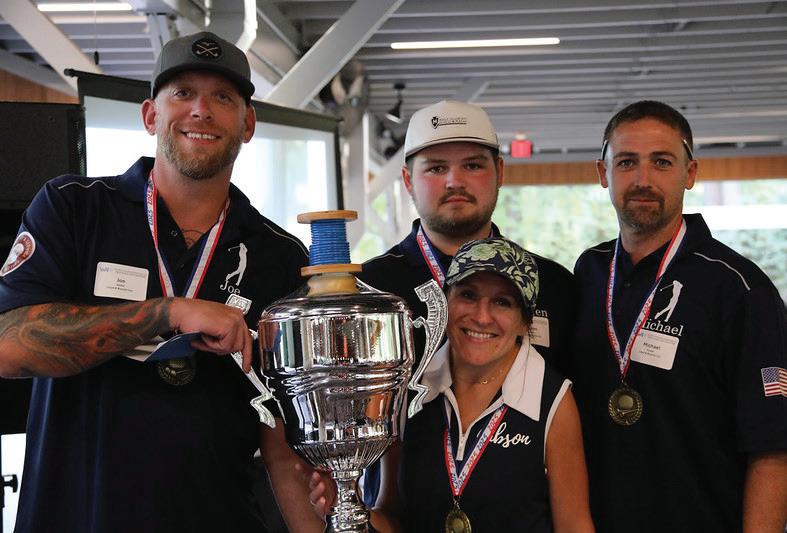
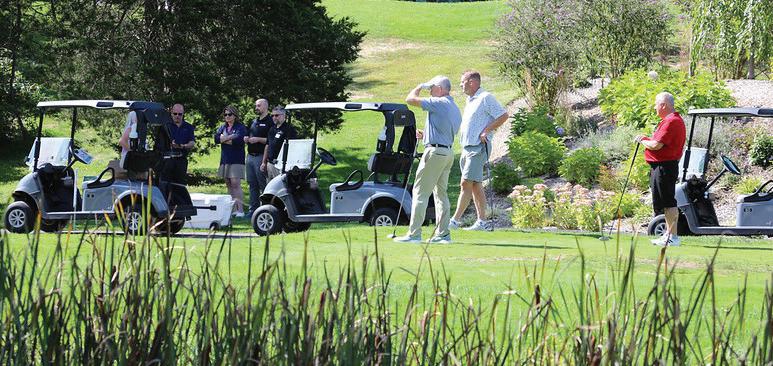
The WAI’s New England Chapter announced the six 2025 winners of its scholarship program, which includes one candidate who qualified as a sponsored intern. Each scholarship was for $2,500.
Jack Bienvenue is the stepson of Walter Parsell, facility engineering manager, Prysmian Group. He is attending the University of Connecticut, where he is seeking a degree in statistical data science.
John Hartline is the son of Christopher Hartline, vice presi dent of operations, RichardsApex. He is attending Pennsylvania State University, where he is seeking a degree in computer science.
Luke McComiskey is the son of Thomas McComiskey, vice presi dent, The MGS Group. He is attend ing the University of Rhode Island, where he is seeking a degree in nursing.

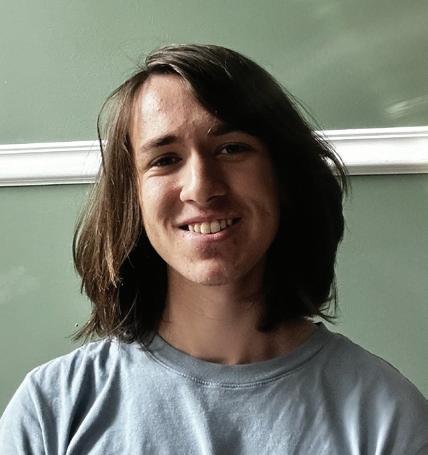
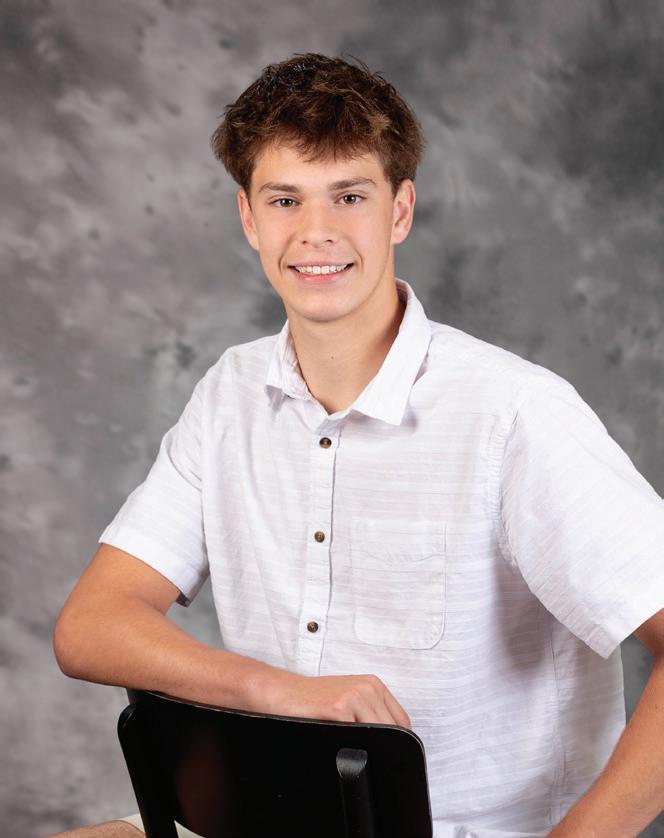
Erin Mulligan is the daughter of Alan Mulligan, sales representative, Vandor Corporation. She is attending at High Point University, where she is seeking a degree in business administration. She also won a scholarship from the Southeast Chapter.


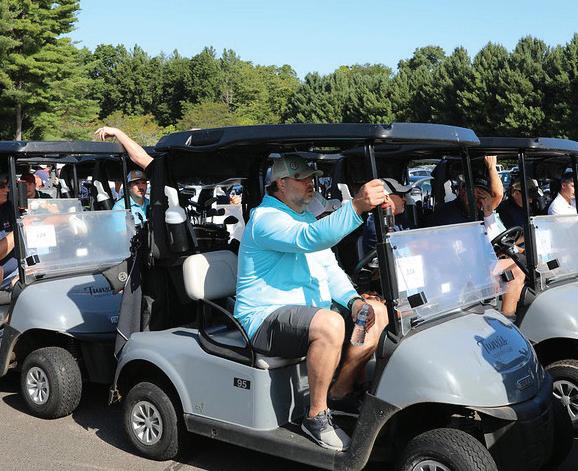
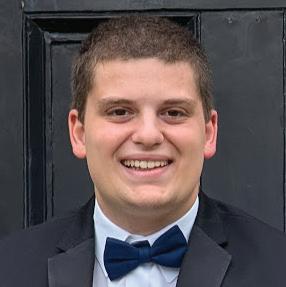

Michael Russo is the son of James Russo, electrical engineer, MGS Manufacturing. He is attending Salve Regina University, where he is seeking a degree in biochemistry.
Ryan Delage, the recipient of the Intern Scholarship, was sponsored by Gary Collette and Michael Renner of Sjogren Industries Inc.
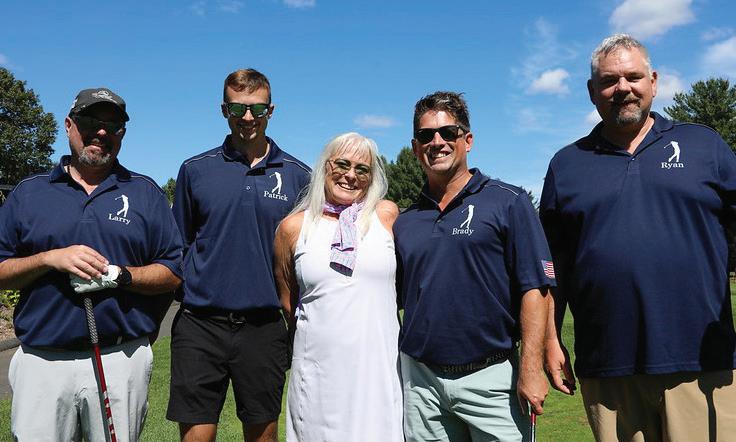
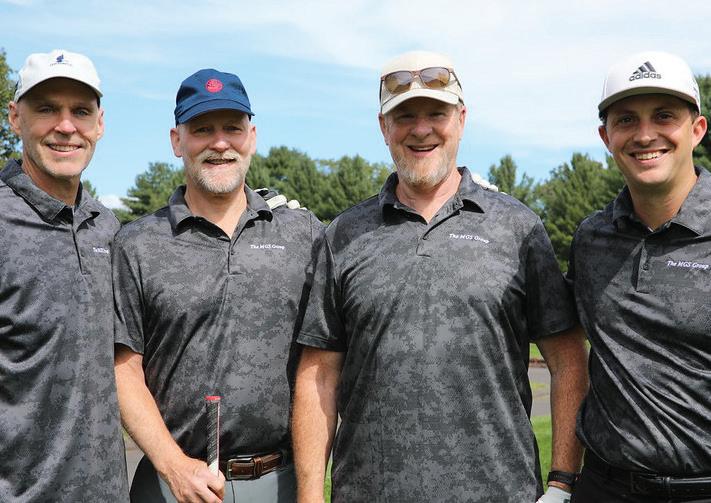
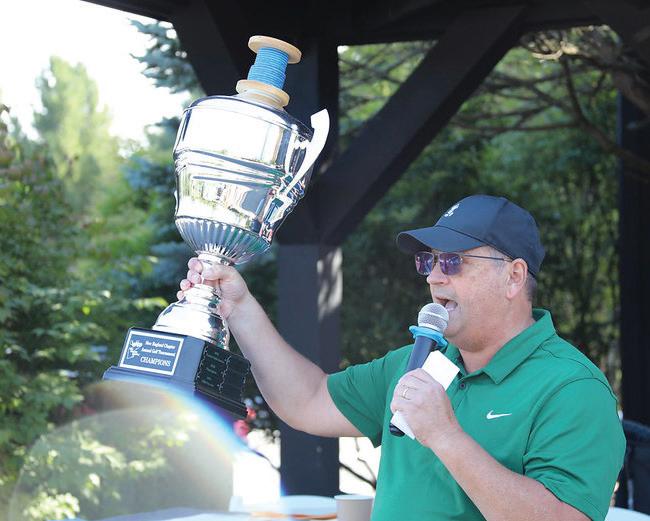
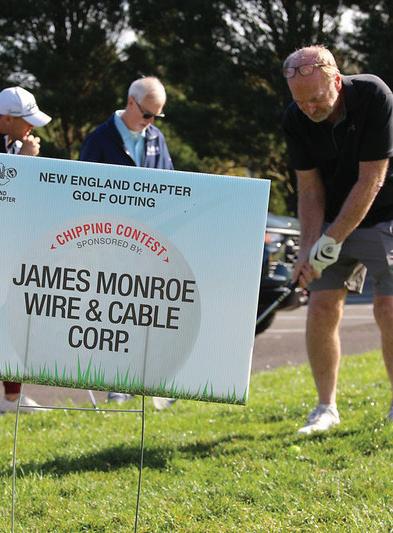

nearly $4,000 to the chapter’s scholarship fund. See the six winners who won scholarships.
Event sponsors included: Amaral Automation Associates, Carris Reels Inc.; Electronic Drives & Controls, Inc.; Fluorogistx; Gem Gravure; Gendon Polymer Services Inc.; GEON Performance Solutions; James Monroe Wire & Cable Corp.; Joe Snee Associates, Inc.; Lake Cable, Lake Copper; Lenze Americas; Little Falls Alloys; Lloyd & Bouvier; M.Holland; Mathiasen Machinery; Quabbin Wire & Cable Co. Inc.; REELEX Packaging Solutions; RichardsApex; SIKORA; Teknikor; The MGS Group; W. Gillies Technologies LLC; Web Industries; Wire & Cable Consulting, LLC; Wire & Cable Manufacturers’ Alliance, Inc. (WCMA); and Wire & Plastic Machinery Corp.
Jim Evans, who led the tournament organization, offered special thanks to all the dedicated committee volunteers who participated. “Without them, the event would be nowhere near as enjoyable.”


Tee time is rapidly approaching for the WAI Southeast Chapter’s 23rd annual golf tournament, to be held Oct. 16 at the Rock Barn Country Club and Spa in Conover, North Carolina.
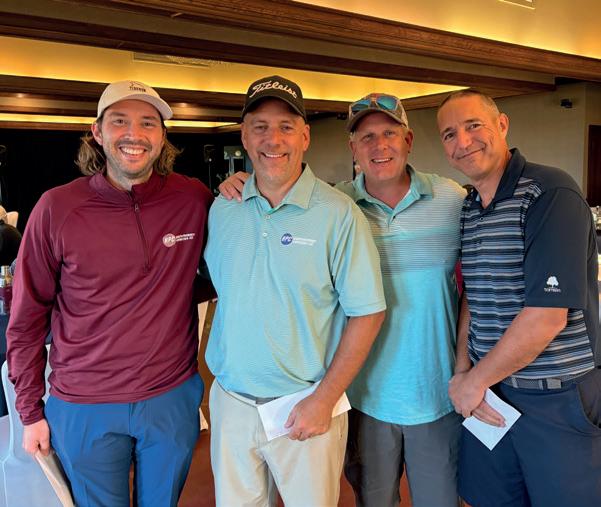
The
Last year, 96 golfers played at the site, which is host to the Tom Jackson course, recognized by Golf Digest on its list of “Best Places to Play.” That backdrop was matched by the performance of the winning team of Harrison Cummings and Mark Finch, IWG-HPC; Darin Nicol, Wayne Wire Die Company; and Kelly Grigg, I.T. Consultant (SRHS), who shot an unworldly 16-under-par to claim top honors in a very competitive field.
Both the second and third place teams shot a 13 under, which triggered the matching of cards to determine the official finishes. The official secondplace winners were Jay Sweetenburg, Austin Duncan, Taylor Lane, and Steve Malott, all of Sonoco. Third-place winners were Brooke Stonesifer of Sonoco, Tom Heberling, Dylan Shepard and Gerald Galazin of Southwire.

The 2024 golf event supporting cast include Southwire Co. volunteers Denise Siathone, Lauren Bozeman and Jasmine Monet.
WAI’s Steve Fetteroll and the Southeast Chapter Board cited outstanding support from three Southwire Company volunteers: Denise Siathone, Lauren Bozeman and Jasmine Monet.
The cost for playing and the awards dinner is $225 a player. Participants can register at the WAI Chapter’s page for either the tournament or dinneronly participation. n

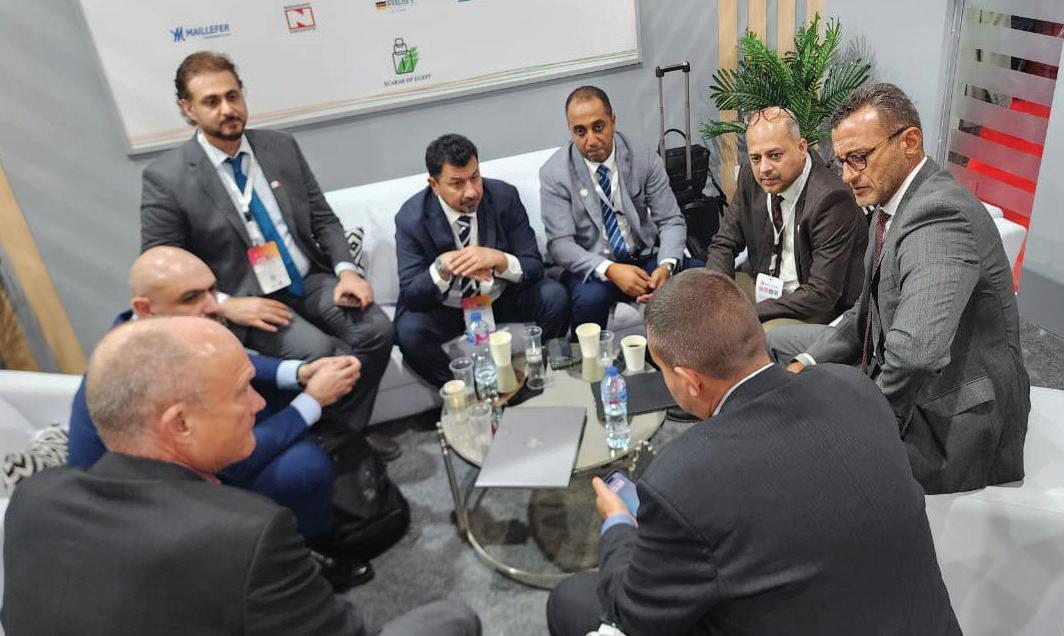
The official numbers were not available by press time, but three exhibitors at the second staging of wire Middle East Africa 2025 at the Egypt International Exhibition Centre in Cairo found the overall experience worthwhile.
“Day 3 is here, and we’re closing out what’s already been a successful show,” reported Innovites, which posted on LinkedIn that it had multiple good meetings with attendees. “Here’s to strategic partnerships that go beyond the event floor and into the future of digital transformation in wire and cable.”
“Through the event, (our) team conducted high-level meetings with clients, partners and industry experts, exploring technological advancements, strengthening relationships, and identifying new business opportunities within this dynamic market,” reported Midal Cables.
“Wire Middle East Africa was a valuable experience,” MFL reported. “We met customers and potential partners from Egypt, Saudi Arabia, Dubai, and beyond. While overall visitor numbers at the trade fair were below expectations, the meaningful discussions and connections we
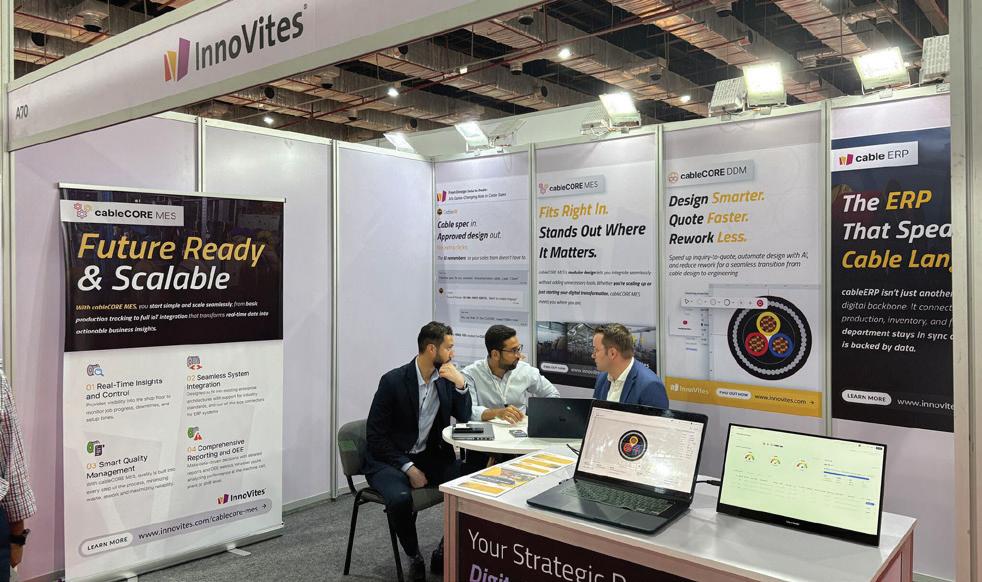

established made our participation rewarding, confirming the region’s importance.”
Following its successful premiere in 2023 at the Egypt International Exhibition Centre in Cairo, the Düsseldorf metal trade fair quartet—comprising wire Middle East Africa, Tube Middle East Africa, GIFA Middle East Africa, and METEC Middle East Africa—has established itself as a significant economic platform for industrial exchange in the Middle East and North Africa.
The event again was co-located with METAL & STEEL EGYPT, which is run by Arabian German Exhibitions & Publishing Ltd. (AGEX). That connection led to strategic synergies between Cairo and Düsseldorf that created value for participants and visitors alike.
At its 2023 launch, the quartet attracted 383 exhibitors from 19 countries, showcasing innovations in metals, steel, wire, cable, pipe, foundry, and smelting technology. Pavilions representing the U.K., France, Germany, the U.S., Turkey, Spain, and Morocco signaled strong and growing international interest in the region. n
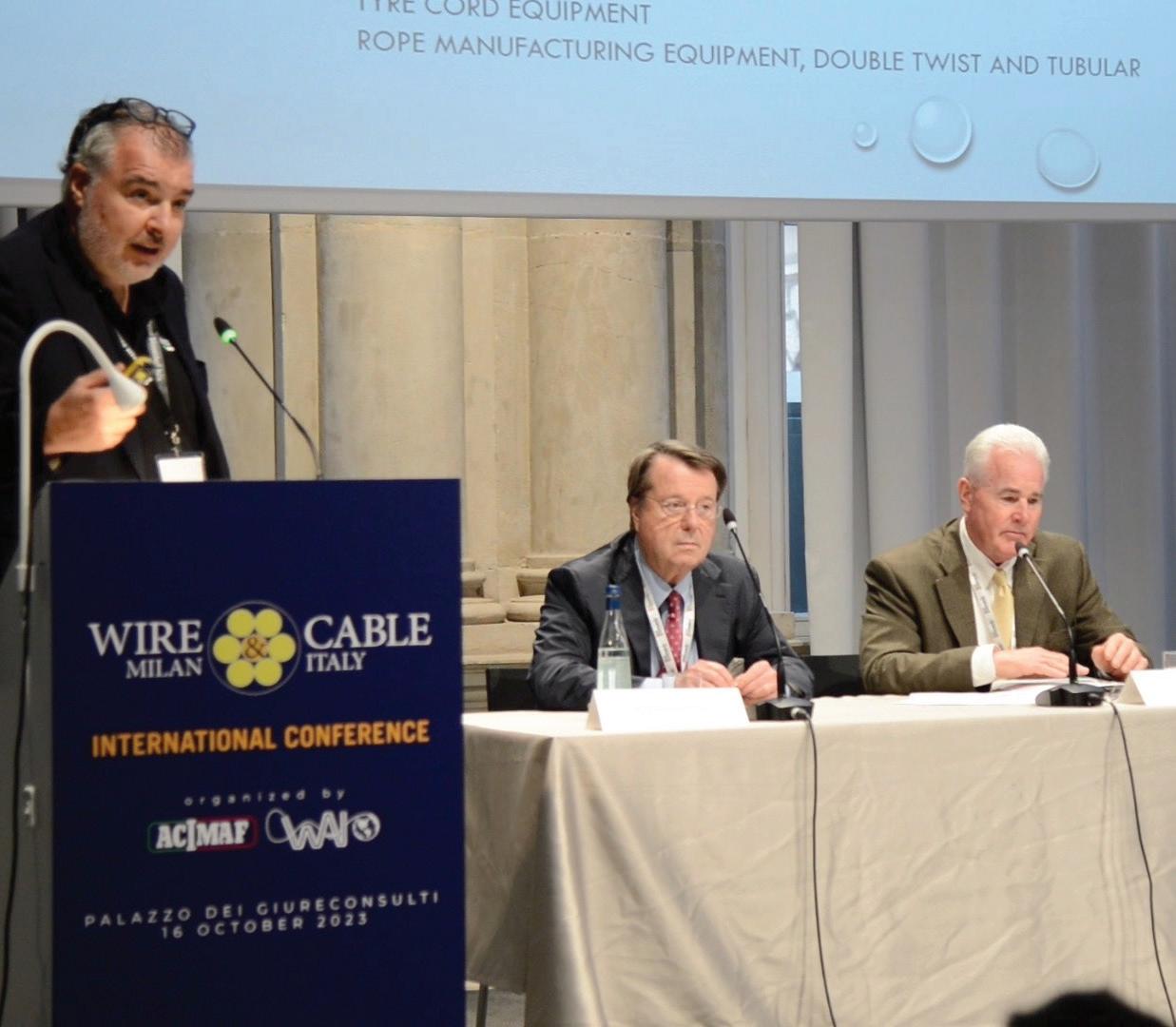
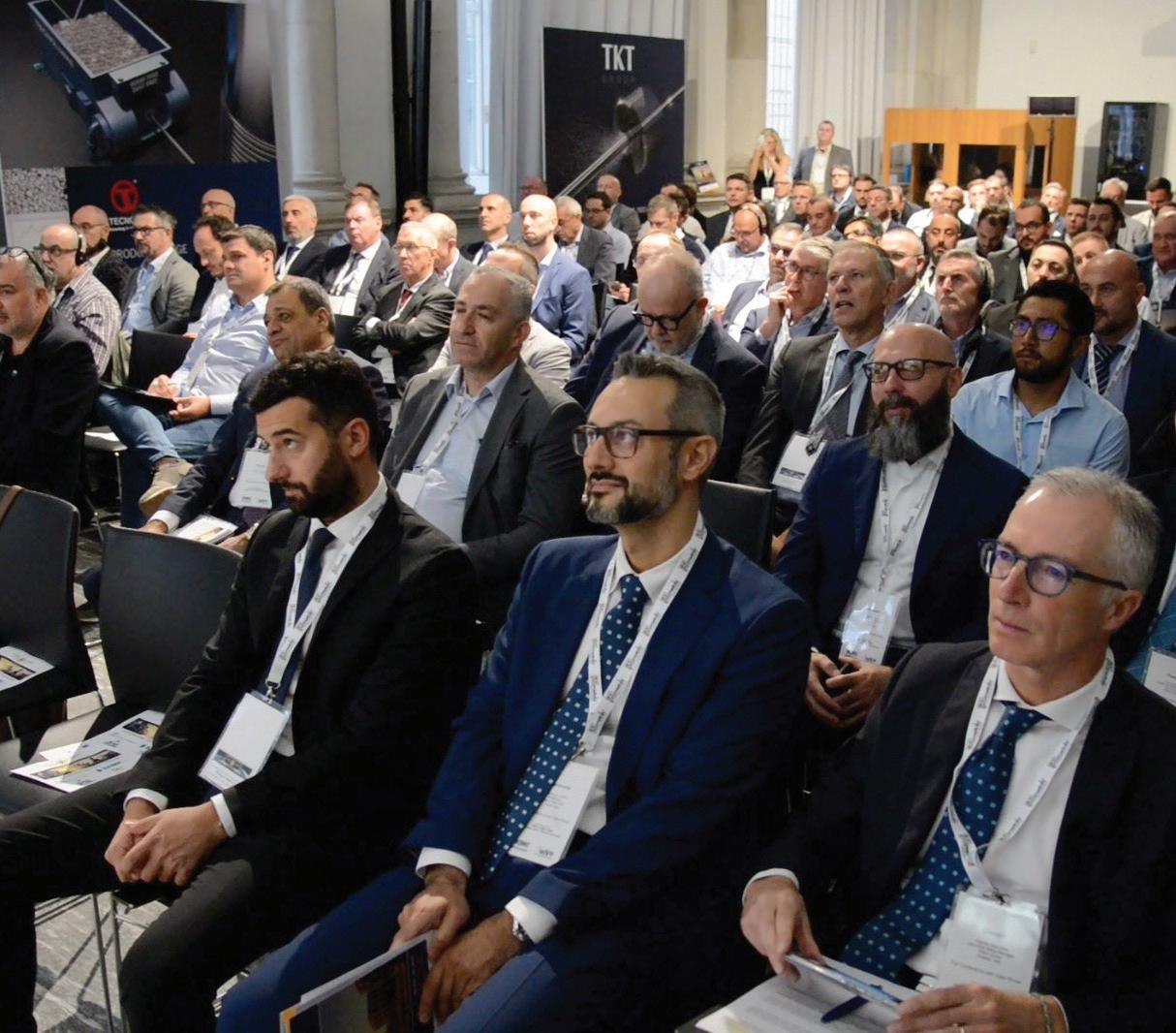
The city of Kraków will host the highly anticipated single day-technical conferences when Wire & Cable Kraków is held Oct. 14 at the Holiday Inn Kraków City Centre in Kraków, Poland.
The full technical program that ran in the preview in the August WJI issue is largely the same, and can be seen at the event website: www.wirecable25.com. The 28 presentations will be presented in ferrous and nonferrous sessions that will run concurrently. They will explore and cover topics such as production efficiency, product development and sustainability.
The event has been designed to be more than “just a conference,” and the experience will unfold both before and after. Below are updates of two tours and the tabletops.
On Wednesday, Oct. 15, there will be a tour of the Tele-Fonika Kraków-Wieliczka plant in the Podgórze Duchackie district of Kraków. The facility is one of Europe’s largest cable factories, specializing in power, signaling and specialized cables. As a global manufacturer of cables and cable systems, TFKable plays a key role in developing energy, industrial and telecommunications infrastructure around the world. The TFKable Group consists of three production plants in Poland, one in Serbia and two in the United Kingdom, as well as service units in the U.S. the United Kingdom and Brazil, and a cable waste recycling plant in Poland.
On Monday, Oct. 13, there will be an optional private tour of the famed Wieliczka Salt Mine, with all transportation arranged. Located near Kraków, the UNESCO World Heritage site is known for its vast underground labyrinth,
chapels carved from salt, and centuries-old mining history. Operated since the 13th century, it attracts tourists worldwide with stunning subterranean architecture and fascinating salt sculptures.
The conference includes a tabletop exhibition where participants can meet with representatives from industry suppliers. As of press time, the list of companies/organizations that had reserved a spot include: ACIMAF; Axjo Group; Caleotto SpA; CONDAT; Eurodraw Wire Equipment Srl; expometals; IWCEA; IWMA; Lamnea Bruk AB; Metalube Limited; PS Costruzioni Meccaniche Srl; Rautomead; SAMP; Taymer Europe GmbH.; TKT Group; Voge Composites; and the WAI.
Finally, a gala dinner will be held Tuesday night, Oct. 14th, at the historic Stara Zajezdnia Kraków by DeSilva in the heart of Kazimierz. The former tram depot in Kazimierz, Kraków—renowned for its unique wooden architecture—is now a vibrant venue hosting craft beer, events and dining.
Registration for all event elements can be made at www.wirecable25.com. The four event organizers are WAI, ACIMAF, the AGH University of Kraków and the International Wire & Machinery Association (IWMA). The International Wire and Cable Machine Exhibitors Association (IWCEA) is also an event sponsor while the expometals online trade show is a media partner. Other sponsorship opportunities are still available.
WAI’s Poland Chapter, which was founded in the U.S. in 1999 and recognized in Poland in 2002, is graciously providing administrative services. n

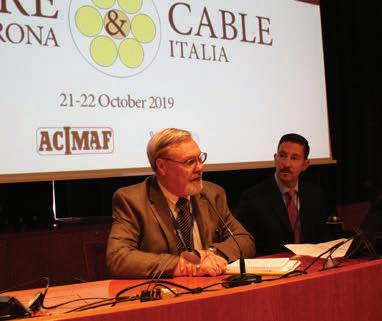


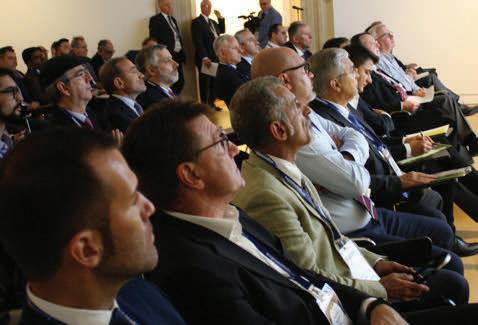


Join international delegates for this one-day technical conference to learn the latest manufacturing advances in wire and cable research and operations.
Presented by 32 field experts, topics include production efficiency, product development, and sustainability. Both ferrous and nonferrous tracks are planned. Visitors can also explore the tabletop displays of multiple exhibiting companies.
Pre-conference activities on 13 October include: a dinner reception at Stara Zajezdnia Kraków by DeSilva— an historic building in the center of Kraków’s Kazimierz,
ORGANIZED BY:


and an optional guided tour of the Wieliczka Salt Mine with private transportation to and from the hotel.
A post-conference tour of the Tele-Fonicka KrakówWielicka plant—a global manufacturer of cable and cable systems—is offered on 15 October.
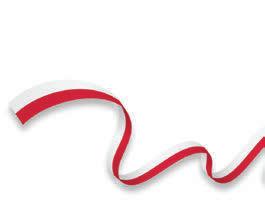
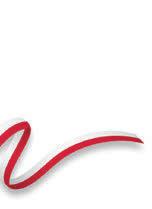
Holiday Inn Krakow City Centre Hotel
To book your stay contact reservations@hik.krakow.pl or call +48 12 619 00 51 and provide the password: THE WIRE KRAKOW
EVENT DETAILS & REGISTRATION:
WWW.WIRECABLE25.COM

This month, IWCS will present its 74th annual Cable and Connectivity Industry Forum, Oct. 27-30, 2025, at the David Lawrence Convention Center in Pittsburgh, Pennsylvania, USA, where it will offer both its traditional elements and a return of special trend sessions that debuted in 2024.
The keynote presentation at the Plenary Luncheon on Monday, Oct. 27, “Connect Once. Connect to Many!” by Donal Hanrahan, chief executive/director of strategy at X3T promises to be a highlight. Hanrahan will examine the critical role of wholesale broadband infrastructure in achieving universal connectivity, using Ireland’s National Broadband Ireland case study as a successful model for public-private partnership.
The cornerstone of the IWCS Cable and Connectivity Industry Forum remains the Technical Symposium, which includes presentations of novel, peer-reviewed papers related to technical innovations in cable design, manufacturing, materials, and applications. The Technical Symposium will feature multiple technical presentations in sessions including: codes and standards; fiber manufacturing; materials resilience and durability; cable sustainability and recycling; micro-cable design and installation; design and testing for copper Ethernet and PoE cables; special applications and installations; advances in optical fiber coatings and cable materials; fiber cable design, qualification, manufacturing and reliability; hyperscale and AI innovations for data centers; multicore optical fiber; and the Poster Session.
The three theme sessions are: “AI/ML for Communication Network Infrastructure” (Monday), where attendees will hear from utility providers, government personnel, cable manufacturers, and software and system developers that deploy AI and machine learn-
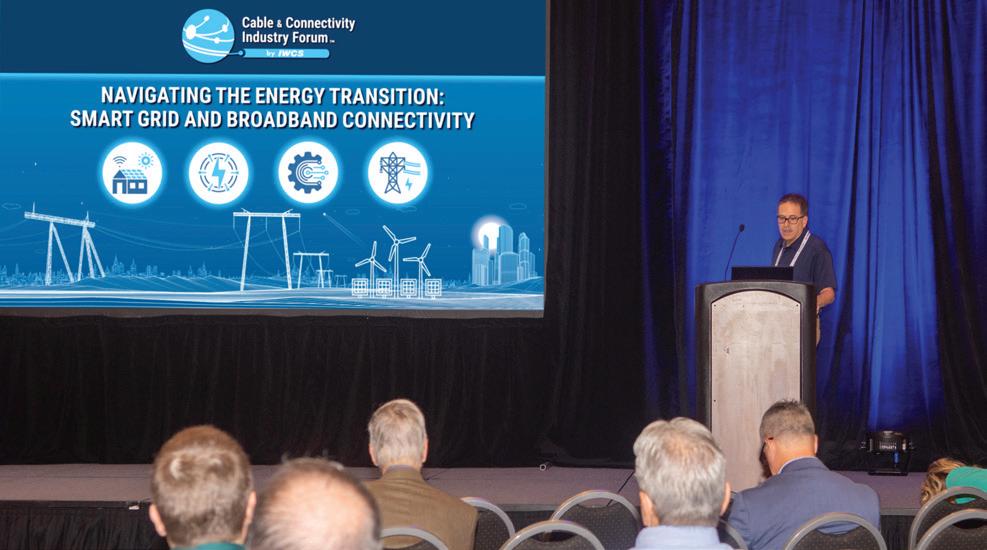
ing to enhance communication network infrastructure; “Sustainable Solutions for Power and Data Cables” (Wednesday), a full-day special session featuring panel discussions, invited talks, and multiple technical paper presentations; and “Powering the Grid of the Future” (Thursday), where industry leaders, technologists, and policymakers will explore the evolving landscape of grid modernization, focusing on the critical role of cabling, connectivity, and emerging technologies such as AI, digital twins, ORAN, and Quantum.
Popular returning IWCS elements include the Executive Session, Plenary Luncheon/Keynote speech, Welcome Reception and Professional Development Courses. The four core courses (Copper 101, Fiber 101, Materials 101, and Extrusion 101) will provide those new to the cable and connectivity industry with foundational technology information. Elective courses (Materials 211, Copper 207, Fiber 212, and Fiber 215) will address more advanced topics.
The Supplier Exhibition™ for industry suppliers to present their products and services will be held on Tuesday, Oct. 28, from 12:30 pm to 6 pm, and on Wednesday, Oct. 29, from 10 am to 2 pm. Attendees will be able to visit with premier suppliers from around the world. More than a dozen new exhibitors will be represented on the show floor, which will also host Supplier Spotlight presentations on Tuesday from 12:45 pm to 4 pm. This will be followed by presentation of Poster Papers from 4 pm to 6 pm. Attendees can view dozens of papers and speak directly with many of the paper authors. A new feature, the Cable Manufacturers Spotlight, will be held on Wednesday from 12:30 pm to 1:30 pm. Presentations will feature innovations from manufacturers including Corning and YOFC.
For the latest event information, including travel and housing, go to www.iwcs.org. n
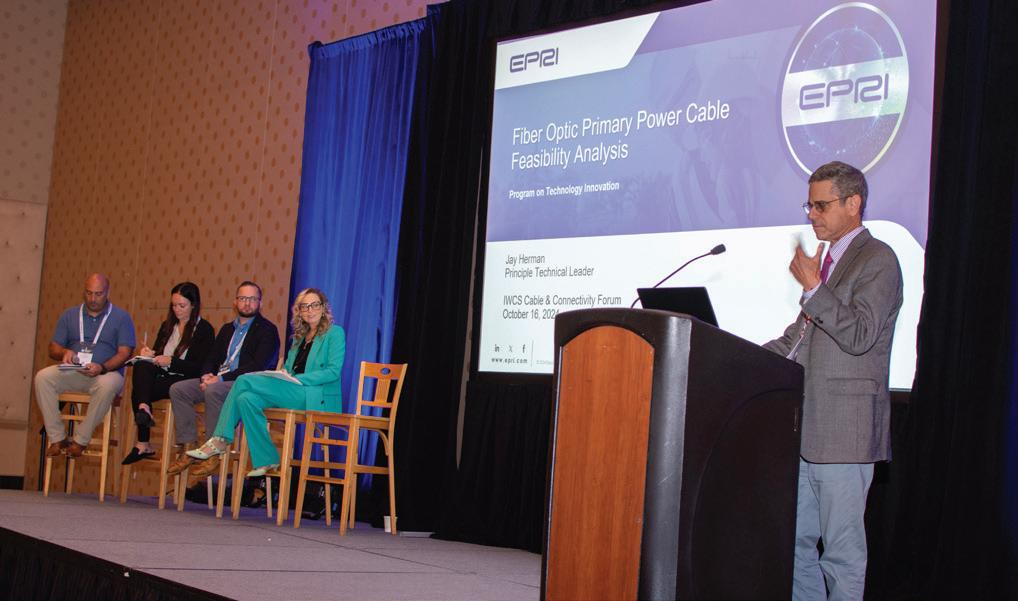
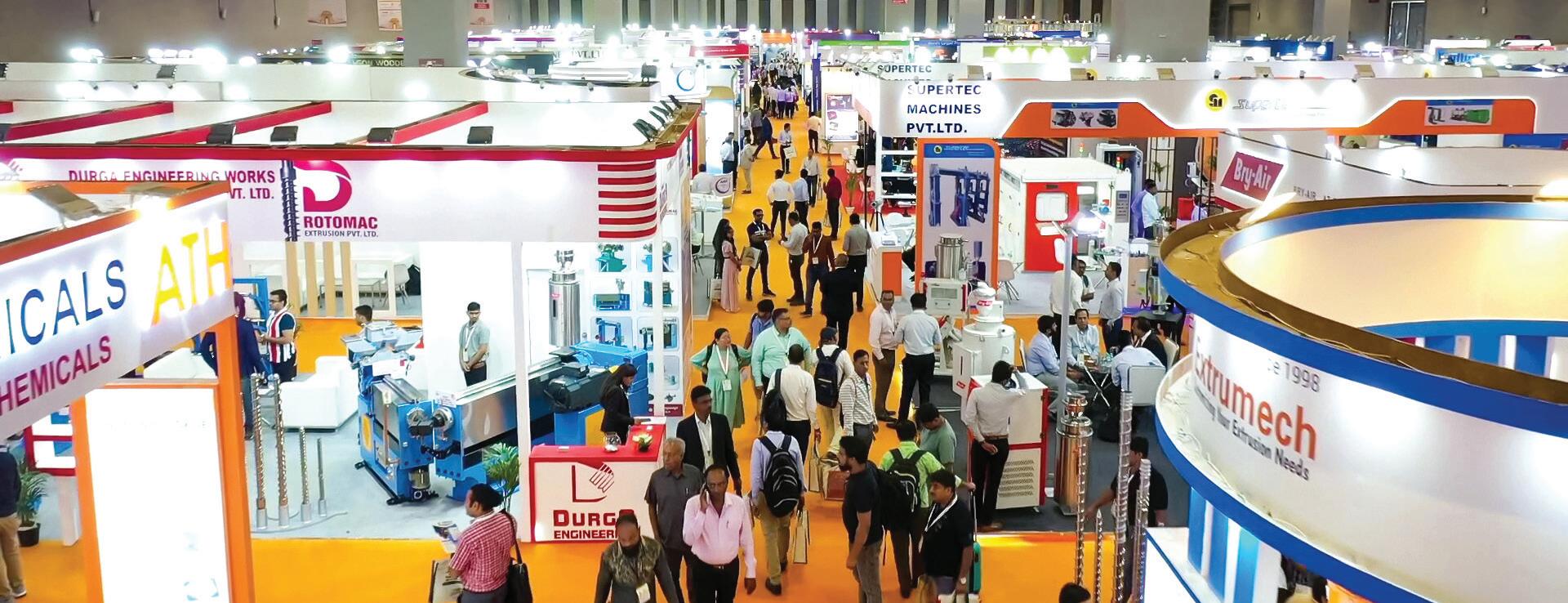
All systems are “go” for Cable & Wire Fair (CWF), organized by Tulip 3P Media Pvt. Ltd., which expects a very strong attendance for the event that has continued impressive growth since it was founded in 2015.
CEO Priyank Jain said that the sixth staging looks to be the event’s most ambitious yet, poised to welcome more than 15,000 visitors from over 50 countries when the doors open from Nov. 4–6, 2025, at Pragati Maidan, New Delhi. The scale of CWF this year will be unprecedented, occupying five expansive halls across 35,000 sq m and featuring over 500 exhibitors—numbers that reflect not only the Fair’s steady expansion but also the rising global stature of India’s wire and cable industry.
Since its debut a decade ago, CWF has evolved from less than 100 exhibitors in a modest 3,000-sq-m space to a flagship event now spanning five halls. Jain attributes this steady, rapid ascent to a focus on staying current—regularly surveying exhibitors and visitors to ensure that each edition meets technical needs and mirrors shifting market trends. Feedback has led to continual recalibration and innovation, making CWF the country’s fastest-growing showcase in the field.
At the 2025 staging, Jain said that visitors will see a show floor packed with machinery, including equipment for drawing, extrusion, cabling, coiling, stranding and more. Attendees can analyze process efficiency, output quality, and technical specs firsthand, engaging directly with experts ready to field questions and discuss implementation. There’s also a deep focus on materials: copper, aluminum, specialty compounds, advanced polymers, and all manner of control, measurement, and testing systems will be on display, along with finished product solutions such as specialty cables and fiber optics.
CWF’s international profile continues to expand. Nearly 20% of past exhibitors represented countries such as
Austria, France, Germany, Italy, Sweden, Switzerland, the UK, and the U.S., with 2025 promising even broader representation. For visiting professionals, this is a rare opportunity to benchmark competing global technologies, products, and solutions in one comprehensive venue. Also, domestic manufacturers get to meet prospective overseas suppliers and partners, often opening new export channels or supply chain connections.

Jain noted that the show consistently draws a cross-section of the entire sector: plant owners, executives, senior engineers, R&D and procurement heads, and decision-makers from major cable users like railways, telecom, power, and renewables. CWF provides a balance between a business marketplace and a center for technical insight.
Another key asset is CWF’s two-day technical conference and CEO Conclave, which run parallel to the main exhibition yet are carefully scheduled not to overlap with peak booth visitation hours. The conference agenda directly aligns with what’s happening on the show floor, with sessions focused on emerging themes such as fiber deployment, automation, sustainability, and advances in high-speed processing. These programs provide not only the latest knowledge but also a venue to network and brainstorm with industry leaders.
Jain said that what sets CWF apart is the balance of serious buyers and technical decision-makers—they can have detailed product discussions without filtering through multiple layers. The event draws both domestic and international visitors, and exhibitors often open new export channels. For more details, go to www.cablewirefair.com. n
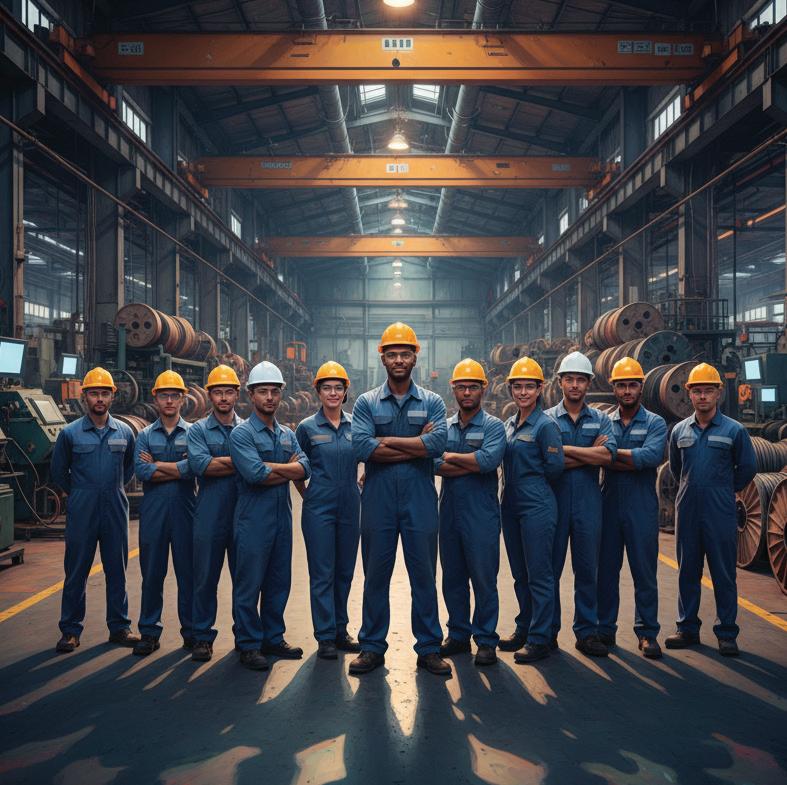
This feature on wire and cable industry employment focuses on perception. It’s ironic—and perhaps even a little maddening—that the people who could benefit most from reading this will never see it. The various elements in this report collectively make a good case for why manufacturing is not just a place where meaningful work is done, it is where a hard-working person with a good attitude will find incredible growth opportunities.
Staffing and workforce development are now center stage for manufacturing, as a persistent skills gap and the drive for digital transformation reshape hiring, retention and employee training. Multiple new studies in 2025 highlight technology, demographic shifts, and changing employee expectations. Below are recent takeaways reflecting the landscape for industrial staffing and training this year.
Automation and upskilling remain dual priorities, as 43% of manufacturers are reskilling employees for advanced manufacturing technology adoption and improved operational flexibility. (Robert Half Manufacturing Industry Survey, 2025)
AI-powered hiring tools are now widely used to increase speed and efficiency. Over 96% of manufacturing leaders say automation will be key to optimizing recruitment workflows and reducing hiring times in 2025. (Manufacturing Recruiting Trends, 2025)
Turnover is a growing challenge—27% of manufacturing firms expect it to increase or remain steady, with a top worry for 69% of managers being retirements of experienced baby boomers. (Manufacturing Workforce Trends Report, 2025)
Green manufacturing and sustainability initiatives are shaping hiring priorities, motivating firms to recruit employees with knowledge of eco-friendly practices and certifications in sustainable technologies. (Manufacturing Workforce Trends to Watch, 2025)
Hybrid and remote work models are now part of manufacturing workforce strategies, with flexibility valued as a retention tool for both technical staff and hourly workers amid shifting employee expectations. (Top Staffing Trends, 2025)
Digital workforce management software and predictive analytics are being adopted by more than 80% of manufacturers with large hourly workforces for better shift scheduling, engagement and worker sentiment tracking. (Deloitte Manufacturing Industry Outlook, 2025)
Blended workforce models—combining full-time, part-time, and contract staff—are helping manufacturers respond to fluctuating orders and peak seasons while controlling costs and maintaining operations. (Future Trends in Warehouse and Manufacturing Staffing, 2025)
Upskilling for data analytics, robotics, and AI now defines advanced manufacturing careers, as plant operators, maintenance techs, and team leads require new digital and technical competencies. (Expert Staffing Manufacturing Insights, 2025)
At Interwire 2025, a panel session saw executives from three manufacturers share their thoughts on personnel matters as well as the view from four college students who described what they seek in an employer. The result was a memorable discussion as to what young job seekers value most. Below is an edited summation.
Students from Illinois Institute of Technology (IIT) were most willing to share their thoughts about what they are looking for in a future employer at the Work Force Panel held at Interwire 2025.
Moderated by WAI President Eric Bieberich, the panelists included Fort Wayne Metals Chief Operating Officer Keith Albers, Prysmian HR Director Ruth Burdette and Lake Cable Chief Operating Officer Cooper Runzel. The session spotlighted how priorities for new talent have shifted well beyond traditional expectations.
The panelists were joined by four students who presented their thoughts, noting that for their generation, a steady paycheck and basic benefits are only a starting point. What they want are real opportunities for advancement, mentorship, and meaningful professional development— paths that allow them to envision a long-term future with an organization.
One student emphasized the importance of transparent feedback and regular checkins, viewing them as essential for continuous growth and confidence-building, while another highlighted that authenticity in leadership fostered their interest in staying committed to a company. While compensation remains essential, the students emphasized the allure of environments where employees can thrive through growing responsibilities, regular training, and clear markers of potential career progression.
role models, especially in leadership, is important,” said a student. Panelists encouraged companies to foster genuine diversity and provide visible career pathways for underrepresented groups, which not only helps recruitment but ensures that workers at all levels feel valued and seen.
Honesty, integrity, and trust were cited as essential ingredients for team culture, helping employees feel confident, heard, and empowered.
The discussion also turned to technology’s influence, as students expressed excitement about AI and automation but want these innovations introduced with care and responsibility. Robust training, thoughtful implementation, and a continued focus on the human side of work—creativity, teamwork and problem solving—are what make technology an opportunity, not a threat. “AI should make work better, not take away meaning,” summarized the general perspective, as students described a strong desire to work in environments that harness technology ethically to empower—not replace— talent.

“Opportunities for growth are what matter most to me,” said one IIT student, who contrasted this with the stagnation seen at companies where advancement is rare. Others spoke to the appeal of workplaces that are intentional about talent nurturing, citing mentorship programs and well-structured onboarding as distinguishing factors. Work-life balance surfaced as another crucial theme.
The students said they were looking for organizations that recognize employees have lives outside the plant, and who build flexibility, transparent communication and a genuinely positive atmosphere into the daily experience. “We don’t go just for money,” observed one panelist who said feeling respected, being part of a supportive community and having authentic connections with managers matter as much—or more—than salary alone.
Inclusivity and diversity were also repeatedly mentioned, especially by young women who are aware of entering a sector traditionally dominated by men. “Seeing female
Burdette described how Prysmian is shifting to meet these emerging expectations: revising shift patterns, conducting third-party workforce studies, and renewing partnerships with colleges and trade schools to ensure flexibility, advancement, and long-term career appeal even in round-the-clock operations. “We try to be really flexible with both our salaried and hourly groups,” she said, noting that listening and adapting is vital to staying competitive and retaining the next generation.
Runzel echoed the focus on culture and purpose, explaining Lake Cable’s philosophy of “hiring for attitude and training for aptitude.” For him, success stems from nurturing communication, accountability, and a sense of belonging. As automation accelerates, Runzel warned, companies must double down on building community and keeping creative collaboration central—ensuring workplaces remain more than just a place to clock in and out.
Notably, several of the students shared that their peers in broader industries often feel overlooked by corporate recruitment strategies, which tend to emphasize technical skills over cultural fit and growth potential. They expressed a desire to see companies actively promote inclusivity initiatives and be transparent about career development pathways, believing that these factors will be critical in closing the skills gap.
Southwire Company has bridged the gap between community needs and business capabilities with its 12 for Life® program. Launched in 2007, the partnership between Southwire and local school systems in Carrollton, Georgia, and Florence, Alabama, has led to success stories on multiple levels: preparing participants to contribute to their community and to Southwire’s shop floors.
Community education programs for at-risk students may seem distant from the wire and cable industry, but not to Crystal Smith, an industrial engineer at one of Southwire’s manufacturing facilities. She happens to be one of the many participants of the company’s 12 for Life® program, part of the 2015 graduating class.
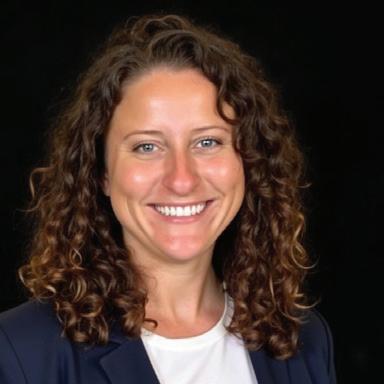
For Smith, 12 for Life helped to unveil the field she would pursue and laid a clear pathway forward. “I always knew I wanted to be in manufacturing, and getting the experience at 12 for Life helped me understand the industry and gain more knowledge about it,” she said. “This program laid the foundation that helped me build my life.”
Southwire Company’s 12 for Life program provides classroom instruction, on-the-job training, essential work and life skills, mentoring and employment opportunities for at-risk students within their communities. The students complete four hours of educational instruction daily, and then work up to 20 hours per week at our facilities. The program has been successful on multiple levels, with 95% of the students participating earning their high school degree, a considerable accomplishment as the graduation rate for students in the Carrollton/Carroll County when the program was started was 65%, and 57% for economically disadvantaged students.
“Empowering our students through education and meaningful work experience creates a ripple effect, not just for the participants, but for our entire company and the communities we serve,” said Veronica Braker, EVP, Operations, and a board member for 12 for Life. “The
skills, determination and fresh perspectives our graduates bring to Southwire are invaluable. It’s a partnership that truly benefits everyone involved as we progress as a generationally sustainable organization.”
The 12 for Life program was established in 2007 with a goal of improving the high school graduation rate in Carroll County, Georgia, the birthplace of Southwire and the home of its headquarters. In 2009, the 12 for Life footprint was expanded to Florence. The program continues to take a creative approach to helping students graduate by blending classroom instruction with real-world work experience. The overarching goal for all participants is to complete the program and graduate high school with a clear path towards employment, higher education or military enlistment. To date, more than 2,500 students have graduated from 12 for Life.
The program provides a variety of pathways and industry-recognized certifications through its mechatronic lab. Students have the opportunity to learn and develop these critical skills firsthand in a modified Southwire manufacturing environment while simultaneously receiving academic support as they progress toward a high school diploma.
The story of 12 for Life as a public-private partnership has been recognized beyond its local communities. Harvard Business School has conducted a case study on 12 for Life and its successes that is utilized to educate future business leaders on sustainable, community-focused initiatives that yield positive results for business operations.
“12 for Life was a blessing for me,” said Smith of the program. “I look back and wonder how my life would have been different had I not had the opportunity to be a part of it. The program can open so many doors for students.”

On May 6, 2025, students from Florence, Alabama, who took part in Southwire’s 12 for Life program,
graduation. Of note, 14 of the 32 students
At Interwire 2025, Cooper Runzel, chief operating officer at Lake Cable, presented his talk, “Leading the Next Generation.” It proved to be a most memorable speech—one that might have seemed almost improbable if not for Lake Cable’s remarkable success. Below is an edited summation of his speech.
Cooper Runzel’s approach to leadership is founded on the idea that employees are not simply part of the operation: they are its core, and if you treat your staff accordingly, they will take care of the customer.
Runzel contends that companies cannot afford to treat staff as replaceable or secondary if they aim to be sustainable and competitive, especially in an industry facing generational transition and growing technical complexity. Rather than recruiting solely to fill short-term needs, he advocates a long-term view: attracting young talent, mentoring them through the ranks, and building a culture in which employees see a future for themselves at Lake Cable that spans decades, not just years. “I measure my success not in profitability but in how many of my staff go on to do greater things,” he explained.
Such goals cannot be achieved by company slogans or mission statements. Lake Cable backs up its people-first talk with real-world actions—choices that have direct, sometimes immediate, impact on employees’ lives. The company’s profit-sharing structure ensures that. When Lake Cable meets and surpasses its profit targets, 95 cents of every dollar over that benchmark goes back to staff. This is not just an occasional bonus but as a built-in expectation. The partnership between the company and those who make its success possible is genuine and ongoing.
Day-to-day flexibility is also woven into the company’s operations. Supervisors are known to encourage employees to leave early to attend their children’s basketball games, school performances, or handle pressing family matters. “We don’t just tolerate people having a life outside of work—we support it, because that’s what builds real loyalty and real focus when they’re here,” Runzel said during the presentation. The company’s policies avoid stigma or penalty for employees who tend to life outside of work, sending a strong message about trust and respect.
Emergency support is another company pillar. Through internal programs, the company steps in to help employees facing unforeseen hardship, covering significant expenses such as mortgage payments when an illness or accident strikes a household. This is not positioned as charity, but as a shared safety net that recognizes employees as people with challenges and obligations beyond their work roles. Such help shows the company’s promises are sincere. These policies have made a difference not only in the stories told around the shop floor but also in meaningful statistics: low turnover, increasing staff retention, and an ability to recruit and keep skilled workers who might otherwise drift elsewhere. Employees have shared that the company’s flexibility—whether adjusting start and end times or reconfiguring schedules in response to family emergencies—has allowed them to be fully present both at
work and at home, alleviating the constant tug-of-war that many elsewhere feel between job and life obligations.
Lake Cable avoids tying educational reimbursement or advancement to restrictive contracts. Employees who pursue continued education with company support aren’t required to stay for a predetermined number of years. The premise is that if the workplace is truly supportive and rewarding, staff will want to stay regardless. This results in a workforce that feels both valued and autonomous, eager to advance but not shackled by fine print.
Throughout his presentation, Runzel illustrated that Lake Cable is not unique in facing the challenges that confront manufacturing today: aging workforces, rising costs, shifting regulations and materials. What sets the company apart, by his account, is a willingness to view these issues through the lens of shared responsibility rather than transactional labor relations. When the factory has faced tough times or needed extraordinary teamwork— requiring overtime, extra effort, or adaptation to new procedures—the company’s record of standing by staff has converted urgency into collective action, not resentment. As he put it, “You get through challenges by standing together, not by squeezing people for more.”

Lake Cable’s model suggests that good intentions must be demonstrated in policy and practice. Profit-sharing is a start, but not the end, of aligning interests between the company and workforce. Flexible schedules and robust crisis assistance go further, building reserves of trust and morale that can withstand the inevitable pressures of the industry. Benefits matter, but what many employees remember are the moments where leadership acted decisively and compassionately on their behalf.
Runzel’s talk at Interwire was not a call for heroics but for basic decency and sound business sense: treat people well, and the company will do well in turn. “Lead with care. If you do that, everything else—the performance, the loyalty, the innovation—will follow,” he concluded.
At Interwire 2025, Carolyn Lee, president of the Manufacturing Institute, delivered a compelling keynote at Interwire addressing the urgent skills gap in manufacturing and outlining how employer-led workforce strategies can help secure the sector’s future. Below are edited excerpts from her presentation.
Manufacturing Institute President Carolyn Lee outlined why the manufacturing labor shortage is more than a passing phase: it’s a profound structural crisis shaped by an aging workforce, shifting demographics, and global competition.
“We have a structural workforce challenge,” Lee told the crowd, pointing out the paradox that while U.S. manufacturing employment is at a multi-decade high, nearly two million jobs may go unfilled in the next decade—threatening both growth and vital reshoring efforts. “There is no policy solution, no magic bullet. The employer community needs to make changes—make investments—and develop the talent our nation needs.”
Lee urged employers not to wait for outside forces to solve challenges. “If we want our industry to thrive, it’s up to us to create and sustain the next generation of problem solvers, makers, and innovators. Industry must lead from the front.”
Lee stressed how employer leadership is more effective than waiting for government initiatives. “If you’re only focused on what your company needs, you’re constantly in trouble with the company down the road.” She noted that over 90% of manufacturers are now forming partnerships with technical colleges, universities and local organizations to develop effective talent pipelines.
In Kentucky, Lee said, manufacturers created a regional apprenticeship coalition that allows even small businesses to sponsor and rotate trainees for in-demand roles such as maintenance technicians or automation operators. Her guiding principle: “What should drive us all is collective action, locally and regionally, to make sure you’re developing the pool of talent, because then all of these people are right.”
Central to Lee’s vision is the Manufacturing Institute’s FAME (Federation for Advanced Manufacturing Education) program, which blends hands-on apprenticeships with focused instruction. FAME chapters operate in over a dozen states and partner with nearly 400 companies, offering real-world training in both technical and professional skills. “Every single employer I’ve talked to over the years has said, ‘I really need people who will show up on time, can follow directions, and communicate,’” she explained.
Real world results can and do happen. One FAME graduate began as a line worker and, through the program’s unique combination of skills-building and cross-department shadowing, rose to manage advanced digital infrastructure for her employer. Lee underscored that FAME graduates see higher job placement and retention rates than traditional pathways, making the program a proven
talent pipeline accessible even for resource-limited firms.

Modernizing public perceptions is another major focus. Too often, Lee observed, the public imagines “dirty warehouses and the same thing for 40 years” when thinking about manufacturing. Yet today’s shop floors are driven by automation, robotics, and digital technologies. The Institute’s outreach—such as Women MAKE America and Heroes MAKE America—highlights diverse and inspiring stories, from women leading additive manufacturing teams to military veterans retraining as plant supervisors. At MFG Day, the Manufacturing Institute opens thousands of plants to students and parents, letting them experience firsthand the breadth and scope of modern manufacturing careers.
Retention, Lee argued, is as critical as recruitment— especially in a competitive market where the average cost to replace a skilled worker can reach $40,000. “Culture really does matter,” she said. Companies that offer transparent career ladders, continuous skill training (such as digital upskilling through online modules), and adaptable work schedules report much lower turnover. In Texas, one manufacturer cut its attrition rate by 15% after rolling out flexible shift options and investing in on-site childcare, showing how creative benefits can directly boost retention.
Lee also highlighted innovative second-chance hiring programs, which bring formerly incarcerated individuals into stable manufacturing roles, yielding not just social impact but strong retention (approaching 89% over two years). Such strategies, coupled with digital learning resources and rapid-skill credentialing, keep both new and experienced workers engaged and advancing.
Lee recounted that, post-pandemic, open jobs became a rallying figure for the sector, but now, ongoing professional development is emerging as the real differentiator. “If you’ve learned something new in the last six months, you are 2.7 times more likely to stay,” she said, referencing national studies. Her call to action: manufacturers must innovate not only in products but also in talent strategy, recognizing that long-term economic success will belong to those who build, rather than merely borrow, their workforce.
The Manufacturing Institute, the workforce and education affiliate of the NAM, provides tools, programs and research that includes Creators Wanted and FAME. Learn more about them at www.themanufacturinginstitute.org.
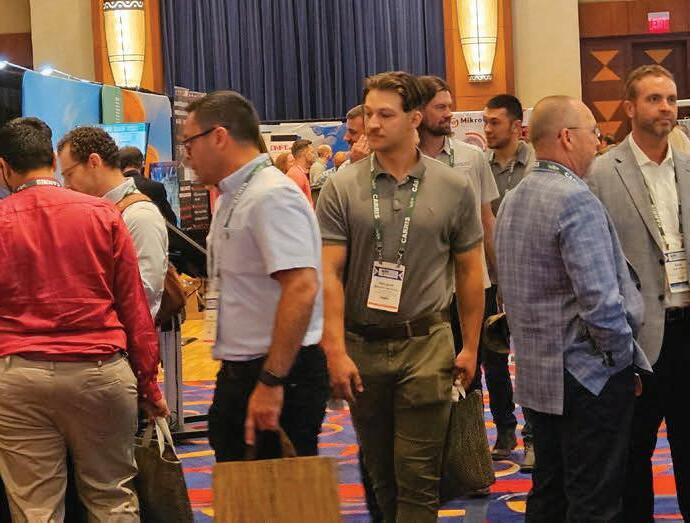

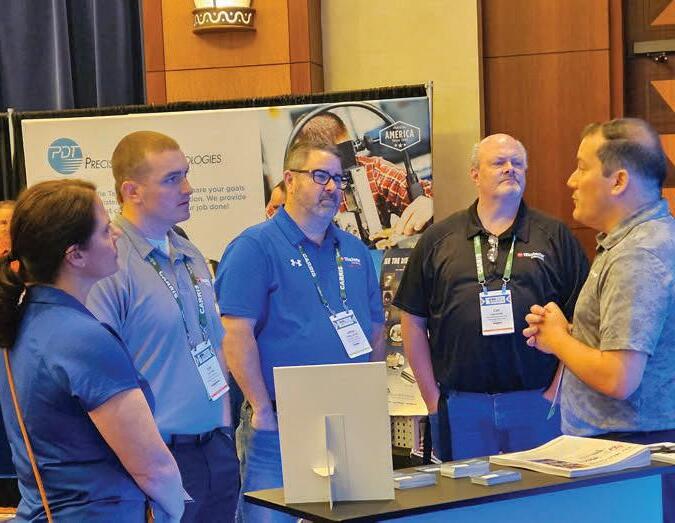

Exhibiting at Wire Expo 2026 is your chance to share your products, innovations, and marketing message with valuable customers and new prospects from the Greater Milwaukee region. Convenient travel and simple setup help you focus on what matters most. Discover shared interests. Build prized relationships. And be present when interaction leads to action.
Deloitte’s 2025 Manufacturing Industry Outlook could be seen as bleak, noting that almost 60% of surveyed U.S. manufacturers cite the inability to attract and retain talent as their number one business challenge, and up to 1.9 million manufacturing jobs are at risk of going unfilled in the coming decade. Yet other factors may bode more positive for wire and cable manufacturers.
It may have taken years, but what has long felt to be a generally negative view of manufacturing by job seekers seems to have changed some. Not a lot, perhaps, only the perception of manufacturing as a gritty blue-collar field has been softened as traditional career paths have been found to be far harder to find, let alone traverse. Below are excerpts from a range of sources.
Surprisingly, even STEM grads aren’t immune to the new hiring malaise. According to Randstad USA’s December 2024 report, only 61% of engineering and computer science graduates landed jobs tied directly to their degrees, down from 74% a decade earlier. Many end up in fields like finance, consulting, or tech-adjacent service jobs: roles that frequently demand long hours for less pay than expected, and which are far removed from the hands-on work they trained for. Meanwhile, just 41% of social science graduates found relevant positions, and entry-level business salaries have plateaued for three years, as noted by Great Jobs KC in an April 2025 analysis. Manufacturing, however, is not simply welcoming refugees from stalled sectors: it’s enjoying an influx of young talent. National survey data cited by Randstad USA (December 2024) notes a 34% increase in college graduates choosing manufacturing since 2018, driven by stable pay and rapid promotion opportunities. The average entrylevel wage for manufacturing sits at $54,800, according to Randstad’s research, almost $8,000 above nonprofit sector roles and $6,000 higher than retail positions in 2025. Which fields within manufacturing are cutting back? The answer is not monolithic. IBISWorld’s January 2025 review found that segments like traditional apparel and low-tech assembly have scaled down in response to automation and overseas competition, while high-growth areas include wire and cable, medical device, and advanced materials manufacturing. Wire and cable manufacturers, in particular, have managed to increase employment by 1.3% in the past year, contrasting the stagnant or shrinking headcounts in basic consumer goods. See next page.
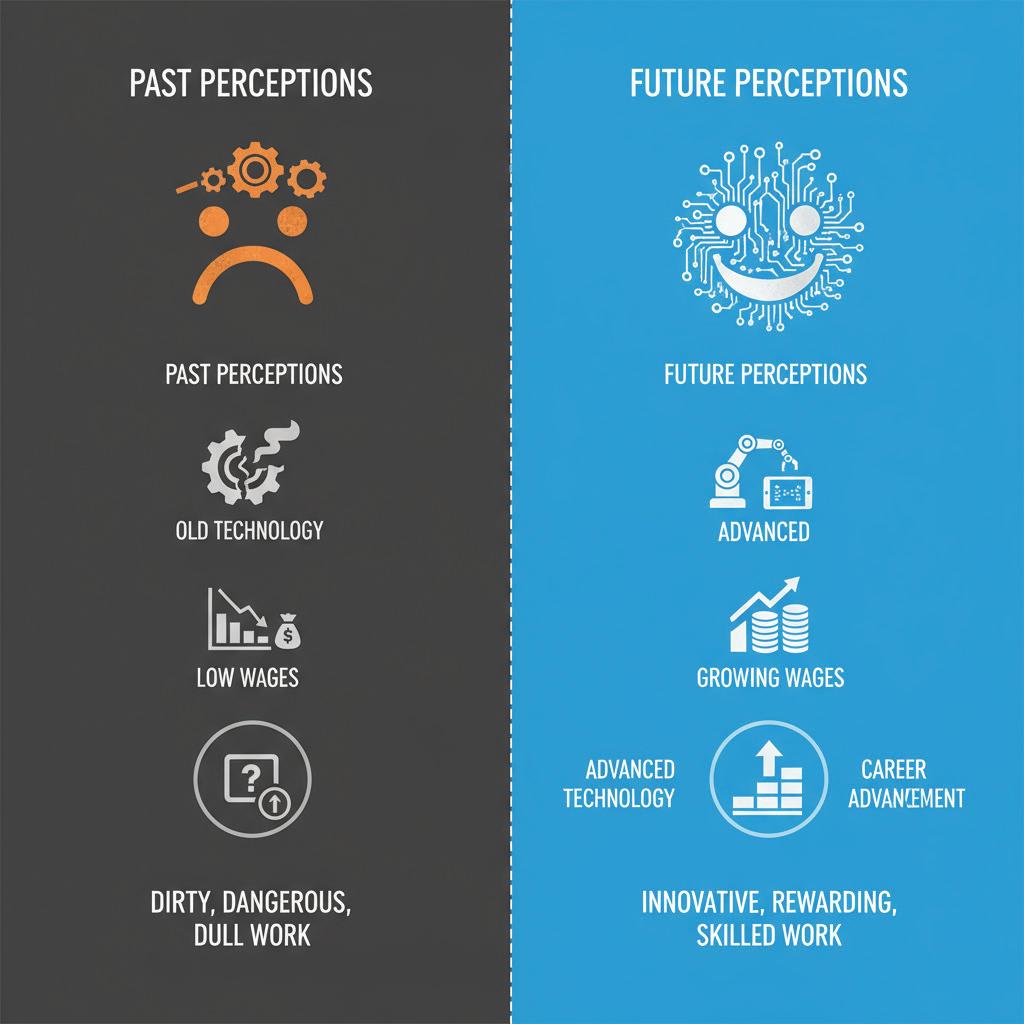
Also, manufacturers continue to modernize, with 76% of U.S. wire and cable companies now running automated production lines and digital quality systems, as noted in a July 2025 report by Advance CTE. The prevalence of technical positions like automation technician and production analyst belies the old stereotypes. The average age for new technical hires in manufacturing is now younger than 29, according to a December 2024 workplace report by ICAN. Also, perceptions do seem to be shifting. A June 2025 Harris Poll found that 45% of high schoolers would consider manufacturing as a first-choice career—dramatically up from 16% a decade earlier. Only 24% now see it as “purely unskilled labor” versus 61% in 2014. Some wire and cable manufacturers have reported that college-grad applicants arrive drawn not just by the pay or tech environment, but by a real shot at advancement, something newly elusive in other fields.
The above-cited Advance CTE report also observed that rather than suffering by comparison, manufacturing increasingly serves as the example of adaptation. It is seen by more potential employees as a place where advancement outpaces empty promises, and where the march of technology has raised the profile and the prospects of those willing to give it a try.
Yet the transition in how manufacturing is seen is not a quick process. A May 2025 State of Manufacturing survey by Hexagon found that 72% of U.S. manufacturing employers say outdated technology still hurts hiring, and just 8% believe their companies are doing enough to reskill the workforce. While 60% of executives claim the industry’s image is improving, fewer than 60% of entry-level workers agree, proof the “perception gap” is stubborn, even as real change accelerates.
For grads confronting a job market that is crowded with degree holders and limited openings—and for employees in fields where advancement and pay have stalled—manufacturing increasingly may be seen as the proverbial sharpest alternative left standing.
The below employment and company statistics are based on IBISWorld’s 2025 Wire & Cable Manufacturing Employment Report, which provided the accompanying charts. IBISWorld provides industry research and comprehensive market data for multiple sectors that include wire and cable. www.ibisworld.com
The wire and cable manufacturing industry is a small but vital player within the broader American manufacturing landscape. As of 2025, approximately 25,130 people are employed in U.S. wire and cable manufacturing, with most companies averaging just over 80 workers. A total of 305 businesses were cited.
The field has seen modest growth—a 2% increase in workforce since 2024—and the average business now employs more workers than five years ago. Companies still struggle to keep up with growth and fill key roles due to ongoing labor shortages, persistent skills gaps and an aging workforce that are industry-defining challenges. That backdrop comes as wire and cable manufacturers have experienced both headwinds and tailwinds in recent years, reacting to fluctuating market conditions and trade policies.
For more details on the 30 page report, contact Akhil Vaidya at akhil.vaidya@ibisworld.com.

























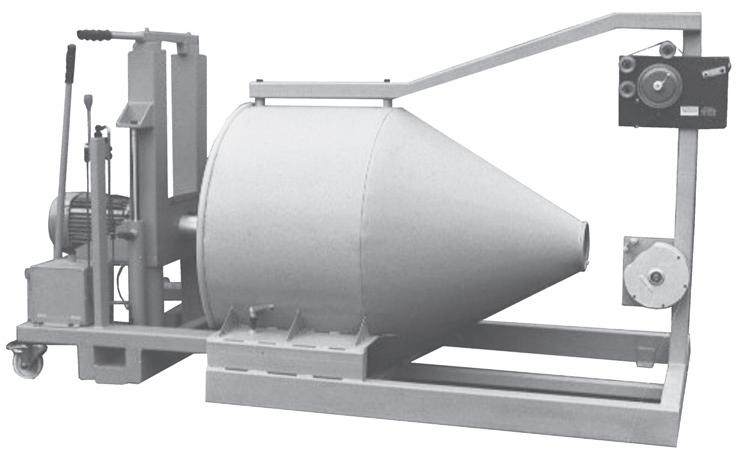
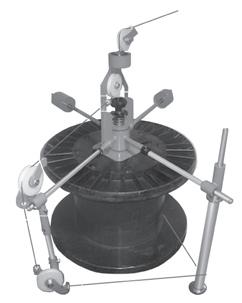


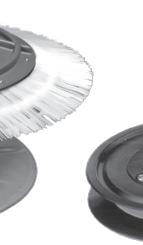
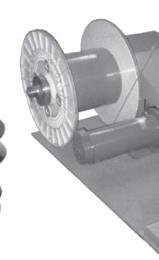

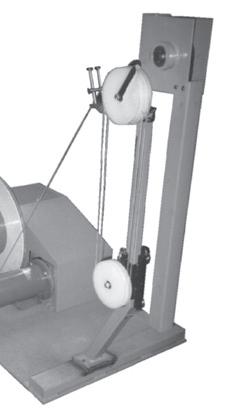
WAI’s mission was set in 1930, when it was founded to serve the steel wire industry. Over time its scope expanded to include electrical wire and cable, putting on conferences and the Interwire trade show. The educational element never waned, only in recent years it has changed in ways that would amaze the founding founders. Below is a look at what its Education Center can now do.
WAI’s Education Center isn’t just another training program: it’s an energy surge in an industry where routine can overtake innovation. Imagine a new hire, safety goggles still fresh out of the box, walking onto the shop floor and, with just a few hours on WAI’s video platform, able to identify an extrusion bottleneck that would normally take a veteran staffer’s experienced eyes to find. That’s not theory. It’s the reality that could follow as inexperienced employees learn more about the field from the shop-floor focused educational videos. The goal is to fasttrack employees into being more ready to contribute real productivity, cutting onboarding time and sidestepping costly errors.
The platform’s arrival at Interwire 2025 wasn’t a sleepy debut: it was showcased live in the exhibition hall, complete with a demo led by WAI Education Manager John Markowski. Think learning tech meets trade show spectacle. Attendees “quizzed” the system in real-time, watched 3D simulations come to life, and connected instantly with a network of peers and experts. To date, more than a hundred participants have signed up for one or more of the courses.
What’s the approach? You can forget passive lectures. WAI’s approach hinges on a tight feedback loop with the factory floor: course designers incorporate constant worker feedback and real challenge cases, making each video feel less like a classroom and more like an insider’s guide to wire manufacturing’s toughest puzzles.
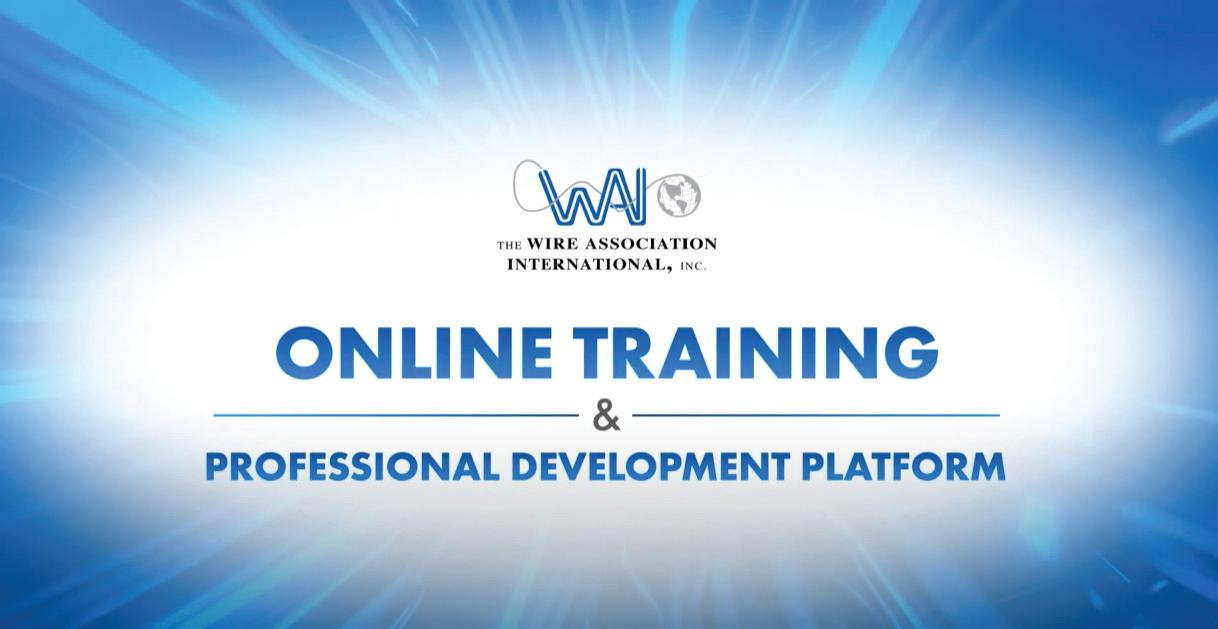
An assortment of video session covers that are part of WAI’s growing collection of basic information for new employees.
“It’s clear there’s a strong demand for flexible, high-quality educational resources in our industry,” Markowski explained. During and following the show, there was a modest wave of contacts from manufacturers that want to know more about the program. He said he expects that flow to increase as the video program continues to expand, with new topics being covered, and company leaders able to see how the series could be part of their core playbook.
Within weeks of Interwire’s official launch, some companies started weaving WAI courses—like Introduction to Ferrous Metallurgy and Single Layer Extrusion—into onboarding schedules. Even industry groups took notice. The Spring Manufacturers Institute is integrating WAI’s metallurgy content into its own curriculum, expanding the platform’s reach. At the association’s annual meeting, success stories made the rounds—one manufacturer’s maintenance team resolved a persistent wire break issue faster than any previous orientation cycle using WAI modules.
WAI is turning workforce education into an active, career-making advantage—and giving the industry the shot of adrenaline it needs to power through an era of accelerating change. In an industry where precision, safety, and technological expertise are critical, companies face an ongoing challenge: how to ensure their workforce is prepared to meet today’s demands while developing the skills needed for tomorrow. With the rapid adoption of automation, evolving safety standards, and increasingly complex processes, it’s more important than ever for employees at all levels to have access to structured, reliable training. The WAI has stepped into this space, offering educational resources that provide practical knowledge, support professional growth, and strengthen the overall industry workforce.
WAI’s structured and flexible approach was designed to meet the needs of a diverse workforce. The Association’s goal is to build courses that support every stage of an employee’s career. It begins with foundational courses, available now, that introduce newcomers to the basics of wire and cable manufacturing and will soon include advanced modules for specialized processes and technical skills. Industry experts craft these courses, blending technical know-how with practical insights to help learners understand not just the “how” but also the “why” behind key processes. This lets companies standardize training, improve onboarding and provide consistent professional development opportunities across their operation.
“The goal isn’t just to provide information,” says John Markowski, WAI’s Manager of Education. “It’s to create a structured learning experience that equips employees with the skills they need to succeed from day one, while giving companies a reliable framework for training and professional development.”
WAI’s Education Center stands out amid broader gaps in industry education. While some suppliers offer online training, these resources are often fragmented—too generic, too narrow, or hard to access. Many employees, especially those newer to the field, lack structured pathways to understand the industry comprehensively. WAI’s offerings fill this void with accessible, high-quality training that guides employees through concepts and connects them with peers and experienced professionals.
What sets WAI’s training apart from other online courses is that it doesn’t follow an old-school approach. WAI has revolutionized online learning by combining real footage from manufacturing plants with animations, including 3D visuals to clarify complex topics, all delivered in short, bite-sized videos of five minutes or less, with interactive knowledge checks between each segment to ensure learners fully understand the material before moving on. The training is hosted on a modern, user-friendly platform designed for easy navigation, so learners can focus on the content without interferences.
New hires completing WAI’s foundational courses can reduce onboarding time and ease the burden on experienced staff. WAI courses can also serve as a refresher tool to help improve consistency and reduce errors. “We’re still
in the early stages, but we’re seeing companies recognize the value of structured programs,” Markowski notes. “Over the next few years, our goal is to build a critical mass of educational resources that truly set the industry standard.”
One unique strength of WAI’s approach is its ability to capture the perspective of the workforce itself. By engaging professionals, the association sees the challenges faced by employees entering the industry today. These perspectives inform course development, ensuring that training meets real-world needs and reflect the skills that employees value most. In this way, WAI not only delivers knowledge but also helps create a workforce that is adaptable, engaged, and prepared to contribute to operational success from day one.
Looking ahead, WAI is committed to continuously expanding and refining its educational offerings. New courses are slated to address emerging technologies, automation, and evolving safety standards. Structured training remains the cornerstone of these efforts, helping companies ensure that employees are well-prepared for both current operations and future industry trends. By providing a combination of expert instruction, practical examples, and clearly defined learning pathways, WAI empowers employees to grow their expertise while supporting the long-term success of their organizations.
The WAI partnered with Hyperion Materials & Technologies to host a two-part technical webinar series via zoom in September focused on wire die quality designed for wire die tool makers and wire producers.
Part 1: Differentiating High-Quality PCD Wire Dies was presented at 11 am EST on Sept. 17. Presenters Hector Ferrer Ribas and Andrew Gledhill covered the fundamentals of carbide and PCD, explaining how to separate high-quality wire dies from substandard ones. An interactive segment included “red flags” such as EDM cutting problems and cracks.
Part 2: Key Differentiators in Carbide Wire Dies, presented at 11 am EST on Sept. 24, focused on identifying quality indicators in carbide wire dies. “These webinars are quite effective, and we plan to do more such partnering,” said WAI Education Manager John Markowski.
The completed webinars can be accessed online at www.wirenet.org. WAI webinars are free for WAI members and $75 per session for non-members. Non-members who plan to attend should consider joining WAI for $150 per year.


The Sept. 17th webinar was presented by Hyperion’s Miguel Angel Jiménez and Andrew Gledhill. It is available free to WAI members.
Case Recruiting recently took over Wire Resources, Inc., a specialized wire and cable recruiting firm founded in 1967 that was sold in 1982 to Peter Carino. See p. 18. The new owner, Ryan Case, has transitioned the business to Case Recruiting (www.caserecruiting.com). Below, he shares his background and his thoughts on the current hiring market.
WJI: How did you get into industry recruiting?
Case: I spent 20 years in the plastics industry with companies like General Electric and Bausch and Lomb, working in engineering, business development and sales. During that time, I had countless conversations with recruiters. I always found the role fascinating and enjoyed the discussions, but I also became increasingly frustrated. Many recruiters lacked the technical knowledge to truly understand the industries and roles they were recruiting for because they came from more traditional human resources backgrounds. I’ve always maintained a large network and kept the idea of recruiting in the back of my mind. After six years of consulting with small and mid-sized manufacturers—gaining insight into full organizational structures and a wide range of roles, particularly in manufacturing—I knew it was the right time to make the move.
WJI: What makes you an effective recruiter?
Case: I consider myself a consultative recruiter. Throughout my career in sales and consulting, I have been inside more than 500 manufacturing facilities and interacted with people at every level, from the shop floor to the executive suite. My consulting experience has given me exposure to a broad range of areas including ISO standards, enterprise resource planning systems, lean manufacturing, sales and marketing strategies, organizational health, e-commerce, cybersecurity, artificial intelligence, international trade and leadership development. I bring this understanding to my recruiting practice, helping clients better define their roles and allowing me to screen candidates more thoroughly. The result is a more efficient hiring process and stronger placements.
WJI: How did your focus on the wire industry develop?
Case: During my time in the plastics industry, I visited several wire plants and became familiar with their processes and products. One of my clients in plastics compounding, who serves wire manufacturers, encouraged me to work more directly in the wire industry. His customers needed support, and my background with extrusion equipment and related processes made it a natural fit.
WJI: How did you come to take over Wire Resources?
Case: I interviewed a candidate with significant experience in the wire industry who suggested I contact Peter Carino, a well-respected recruiter in the field who was nearing retirement. I did, and after I shared my background and recruiting process with
Peter, he felt confident that I was the right person to carry on his work. I was honored to earn his trust and begin working with his clients.
WJI: What’s the industry’s biggest personnel challenge?
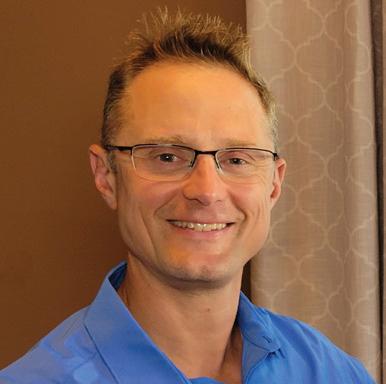
Case: The wire industry is facing the same demographic challenge seen across manufacturing. As older workers retire, there are fewer younger people entering the workforce. This generational gap is creating a talent shortage, and companies are competing for a limited number of experienced workers. While it is ideal to hire people with wire industry experience, companies should also consider candidates from adjacent industries. Broadening the talent pool can help meet demand and increase the chances of finding the right person for the job.
WJI: Can industry outsiders succeed in wire and cable?
Case: Yes, without question. It comes down to whether the candidate has the right skill set and the willingness to learn a new market. Different roles have different learning curves, and that is something I talk through with clients. With the right support, someone from outside the industry can absolutely succeed. For example, Stu Thorn, a former president and CEO of Southwire, came from the carpet industry. Success depends more on capabilities and mindset than on direct experience alone.
WJI: What should matter most to employee-seeking companies?
Case: There has been more job movement in recent years, especially during the pandemic. Some of that has calmed down, as both candidates and employers have seen the downsides of frequent job changes. However, today’s workforce is thinking differently. People view themselves as individual brands and ask, “How does this job help me grow or add value to my career?” One of my responsibilities is to communicate the potential of the company and role to candidates. If they see clear opportunities for development and growth, they are more likely to commit. To retain top talent, companies need to invest in their people. When employees feel supported and valued, they are much more likely to stay long term.
WJI: Are electronic postings, especially those on LinkedIn, effective?
Case: Seldom. Companies that post them tend to be overwhelmed by volume. With the help of artificial intelligence, people can apply for hundreds of jobs with just a few clicks. That means employers end up spending hours sorting through unqualified or irrelevant applications. It becomes a time-consuming and inefficient process with a lot of noise and very few truly viable candidates.
WJI: Has AI influenced wire industry hiring?
Case: Right now, it’s still limited. The wire and cable industry is not one that easily lends itself to AI, especially for key positions, which remains about selecting individuals who have demonstrated capabilities and skills that align well with the role. That’s where AI and its micro-second assessments are especially lacking, so we are far from seeing a dramatic shift for hiring. At the same time, the question is not whether or not to use AI. Rather, it’s how much and where. For example, if AI is used in design or engineering, what safeguards are in place to protect data integrity? Is sensitive information secure? This is especially important for companies serving military or government contracts where compliance with cybersecurity standards is essential. While AI will have an impact, the wire industry is unlikely to see the same disruption as the technology sector. The changes will be more gradual and process specific.
WJI: Why can a qualified candidate struggle to get hired?
Case: In many cases, the problem is the resume. Some candidates do not spend enough time thinking about how their resume reads to someone who does not know them. It needs to be clear, results-oriented, and easy to understand if passed from one person to another. A common mistake is listing job duties without showing accomplishments. Employers want to see what you achieved, not just what you were responsible for. A strong resume should clearly communicate the value you brought to your previous roles.
WJI: What should a company know before it posts a job?
Case: That hiring in this market is competitive and being focused on exactly what you need will save a lot of time and increase the likelihood of a successful hire. To be clear on the ideal end result you need to know answers to these questions: Who are you looking for culturally? What are the necessary skillsets? How will the hiring process work? What is their budget? Are you willing to look slightly above or below your target to increase the talent pool? Lastly, what value do they offer a perspective employee as candidates likely will have options ... so why is your company the best choice? Companies need to approach hiring like they do new customers: what value do you offer and why should someone want to sign up with you?

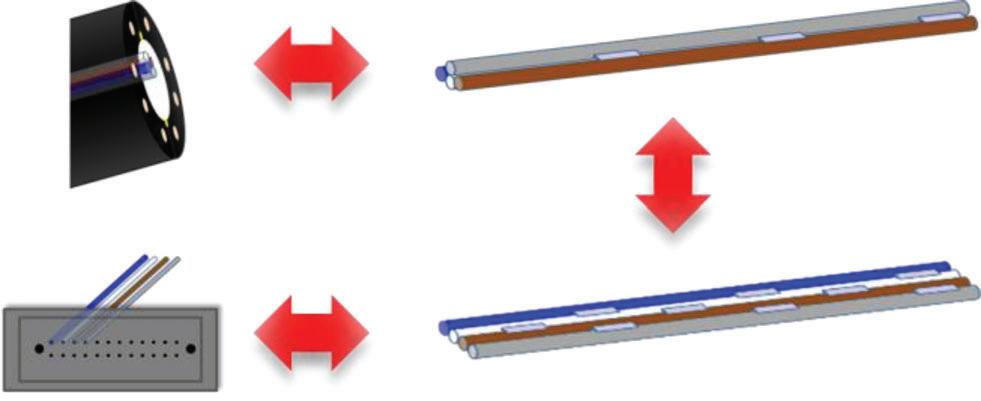
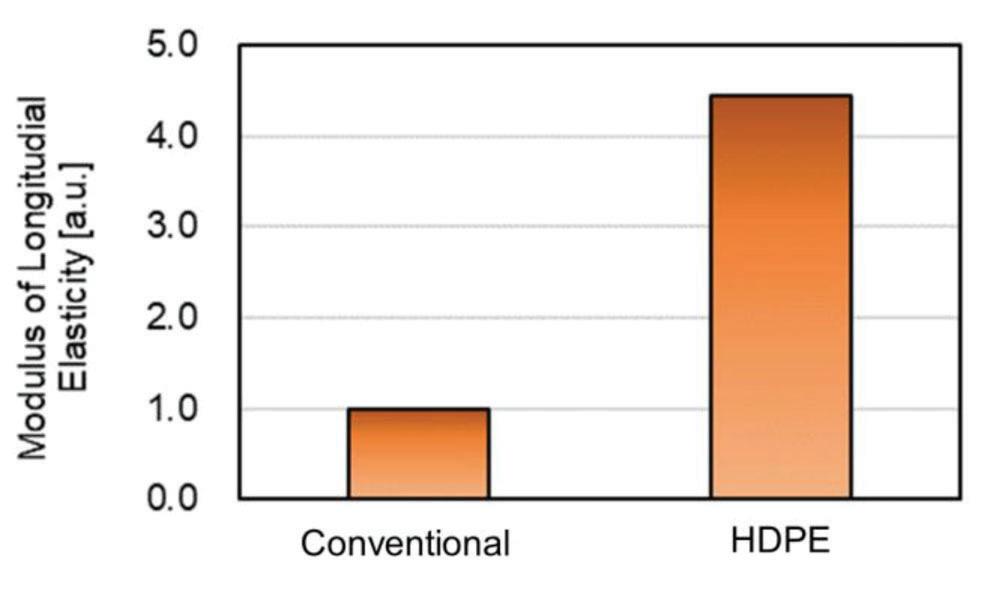
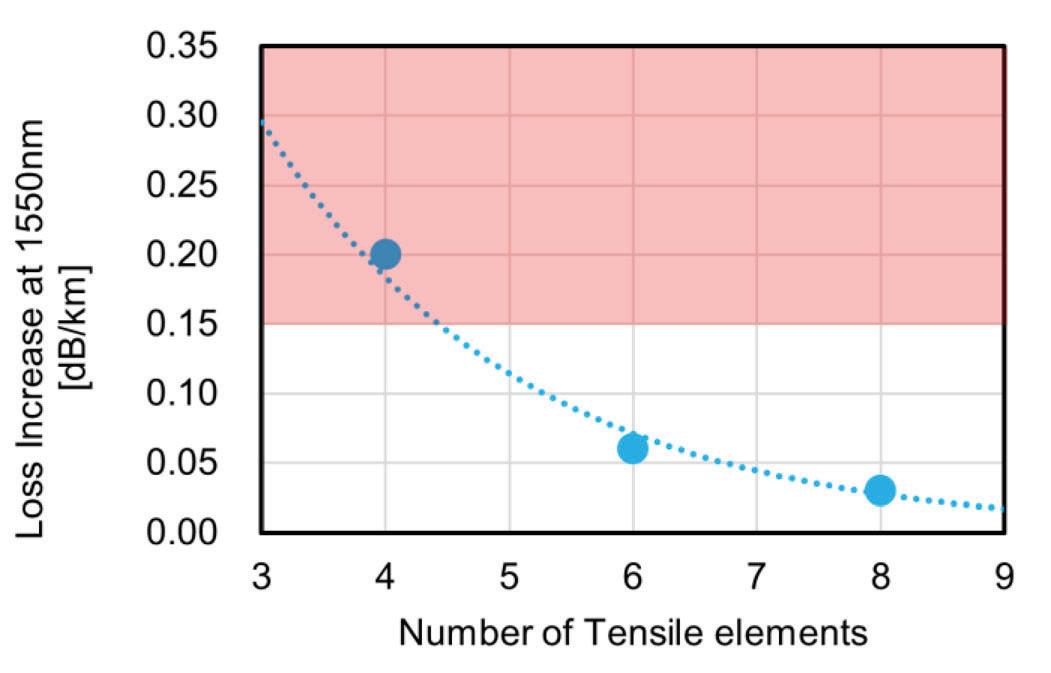





This paper was presented at the IWCS Cable & Connectivity Industry Forum.
IWCS was started in 1952 by key government and industry representatives devoted to the development of improved wires and cables for military applications. The first symposium was called “Symposium on Technical Progress and Communication Wire and Cables”.
The next IWCS event will be held October 27–30, 2025 in Pittsburgh, Pennsylvania, USA.
Presently, IWCS organizes the Cable & Connectivity Industry Forum, a technology event with thousands of international attendees. This event facilitates the exchange of information about product, material and process innovation for cabling and connectivity solutions. On average, IWCS publishes over 100 technical papers annually—all of which are archived to aid ongoing industry research and education. Committed to developing industry professionals and students, IWCS provides networking opportunities, awards annual scholarships, and hosts a professional development program and webinar series. Learn more at www.iwcs.org
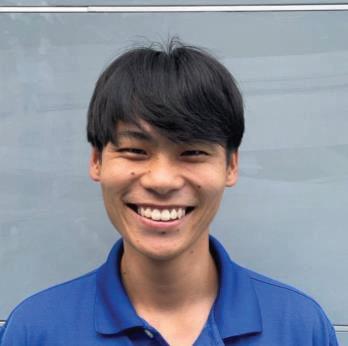
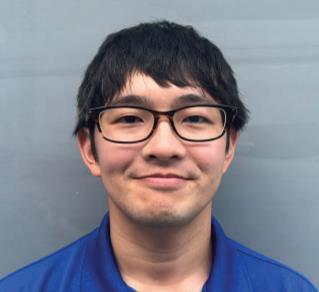

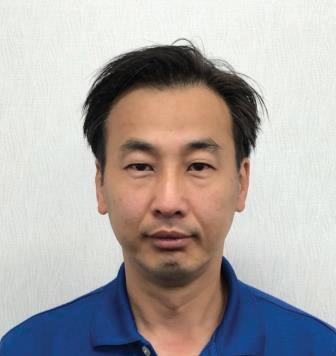
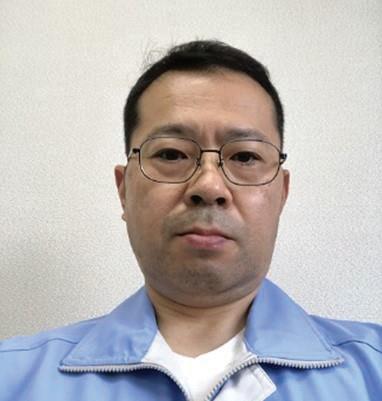
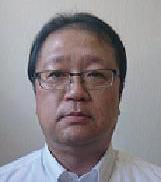

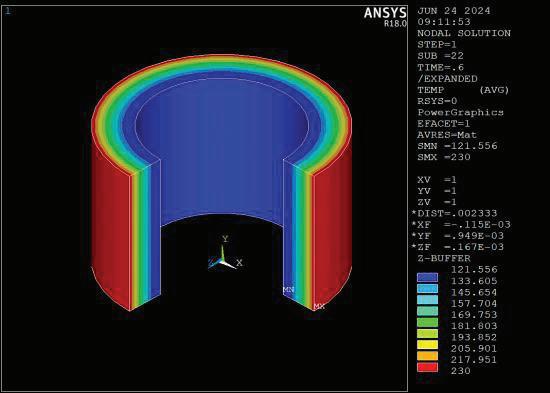

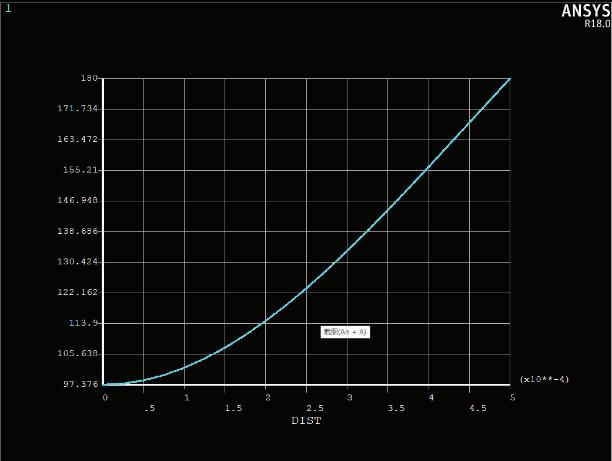
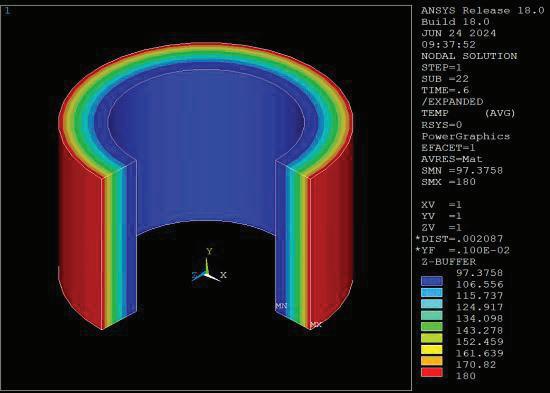

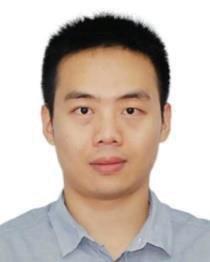



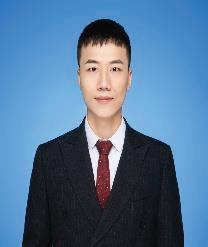



(Continued from p. 23)
FPGA chip-based system and method for detecting cable insulation state
U.S. Patent No.: 12,352,799
Patent date: July 8, 2025 Filed: Feb. 20, 2023
Assignee: Huizhou Power Supply Bureau of Guandong Power Grid Co., Ltd., China
Inventors: Daxing Zhang, et al.
An online monitoring method for insulation status of substation utility cables is provided. The method includes that two ends of a to-be-monitored cable are connected to a primary monitoring device and a secondary monitoring device by using a first coupler and a second coupler respectively; and the primary monitoring device and the secondary monitoring device each inject a high-frequency test signal into the to-be-monitored cable, collect a high-frequency reflected signal in the to-be-monitored cable, perform signal processing by using a frequency-domain peak iterative search algorithm, and extract reflection point parameter information, and the insulation aging status of the to-be-monitored cable is determined by integrated monitoring parameter information at two ends of the to-be-monitored cable.
Online monitoring method for insulation state of cable for transformer substation
U.S. Patent No.: 12,352,797
Patent date: July 8, 2025 Filed: Feb. 20, 2023
Assignee: Huizhou Power Supply Bureau of Guandong Power Grid Co., Ltd., China
Inventors: Daxing Zhang, et al.
An online monitoring method for insulation status of substation utility cables is provided. The method includes that two ends of a to-be-monitored cable are connected to a primary monitoring device and a secondary monitoring device by using a first coupler and a second coupler respectively; and the primary monitoring device and the secondary monitoring device each inject a high-frequency test signal into the to-be-monitored cable, collect a high-frequency reflected signal in the to-be-monitored cable, perform signal processing by using a frequency-domain peak iterative search algorithm, and extract reflection point parameter information, and the insulation aging status of the to-be-monitored cable is determined by integrated monitoring parameter information at two ends of the to-be-monitored cable.
Wire rod for graphitization heat treatment, graphite steel, and manufacturing method therefor
U.S. Patent No.: 12,351,424
Patent date: July 8, 2025 Filed: Jan. 22, 2020
Assignee: POSCO, South Korea
Inventors: Nam-SukLim, In-Gyu Parka, Se Hong Min, Seon-Gu Lee
A graphite steel available as a material for mechanical parts of industrial machines or automobiles, and more particularly, a steel wire for graphitization heat treatment and a graphite steel and methods of manufacturing the same. The graphite steel includes, in percent by weight (wt %), 0.6 to 0.9% of carbon (C), 2.0 to 2.5% of silicon (Si), 0.1 to 0.6% of manganese (Mn), 0.015% or less of phosphorus (P), 0.03% or less of sulfur (S), 0.01 to 0.05% of aluminum (Al), 0.01 to 0.02% of titanium (Ti), 0.0005 to 0.002% of boron (B), 0.003 to 0.015% of nitrogen (N), 0.005% or less of oxygen (O), and the remainder of iron (Fe) and inevitable impurities, and satisfying Equation (1) below: wherein graphite grains are distributed in a ferrite base as a microstructure and a graphitization rate is 100%, (1) −0.003<[N]−[Ti]/3.43−[B]/0.77<0.003, wherein in Equation (1), [Ti], [N], and [B] are wt % of titanium, nitrogen, and boron, respectively.
Cable feeding unit of cable management system
U.S. Patent No.: 12,351,885
Patent date: July 8, 2025 Filed: Sept. 9, 2022
Assignee: SCALEUP OÜ, Estonia
Inventors: Alar Jõg, Hendrik Aava
A cable feeding unit (108) of a cable management system (100) comprising one or more feeding sections (200A, 200B, 200C, 200D, 302), having a body (202), a first side structure (208) and a second side structure (210), an inlet opening (212, 314) and an outlet opening (214) of a cable (124, 230, 410); one or more pairs of sheave rollers (216, 218, 220) attached between the first side structure and the second side structure; a cable feeding passage (222) formed at least between a rim part of the first sheave roller and a rim part of the second sheave roller of the one or more pairs of sheave rollers; one or more drives (160, 226A, 226B) connected to at least one of the sheave rollers; and one or more transmission mechanisms (224A, 224B) connecting the one or more drives with at least the first or second sheave roller.
Method for electrically contacting at least one enameled copper wire with a component of an electric motor, generator, sensor or electromagnet by means of electrical contacts formed on the enameled copper wires and additional potting
U.S. Patent No.: 12,348,097
Patent date: July 1, 2025 Filed: April 20, 2022
Assignee: Nidec Motors & Actuators, (Germany) GmbH/USA
Inventors: Conrad Bickel, Jakob Schnitzer
A method of electrically contacting at least one enameled copper wire, which forms a winding carried by a first component, with a second component of an electric motor, generator, sensor or electromagnet. The method includes forming at least one wire end of the at least one enameled copper wire into an electrical contact, positioning the electrical contact in a molding process, a molding compound formed in the molding process at least partially surrounds the first component and the at least one wire end, and contacting the electrical contact with the second component.
Cable shielding with conductive resin
U.S. Patent No.: 12,347,976
Patent date: July 1, 2025 Filed: June 26, 2020
Assignee: Google LLC, USA
Inventors: Andrew Chen, Billy Liu, Hj Fong, Jay Lee.
A cable assembly includes a connector head electrically coupled to a plurality of conductors disposed in a cable, the connector head having a plug and a conductor interface; an outer shell including a first portion encasing the plug of the connector head, and a second portion encasing the conductor interface of the connector end; an inner shell including a connector end encasing the second portion of the outer shell, and a cable end encasing a portion of the cable and including an injection gate; and conductive resin including a first portion disposed inside the connector end of the inner shell, and a second portion disposed inside and outside the cable end of the inner shell; wherein inside and outside portions of the second portion of the conductive resin are connected through the injection gate.
Dead-end plugs for solar cables and related systems and methods
U.S. Patent No.: 12,347,961
Patent date: July 1, 2025 Filed: June 24, 2022
Assignee: TE Connectivity Solutions GmbH, China
Inventors: Daniel Ferreirav Ribeiro, et al.
A system for sealing a terminated solar cable, the system including: a solar cable; a connector terminating the solar cable, the connector including a locking feature; and a plug including a locking feature. When the locking feature of the plug engages the locking feature of the connector to lock the plug and the connector in a locked state, the solar cable is sealed to provide safety from voltage and protection from dust and liquid.
Dynamic cables with fibre reinforced thermoplastic composite sheath
U.S. Patent No.: 12,347,589
Patent date: July 1, 2025 Filed: April 29, 2023
Assignee: Nexans, France
Inventors: Karl Bengtsson, Audun Johanson, Anton Akulichev
The inventors ... solved a buckling problem for welded metallic sheath (LWS) by providing a dynamic power cable comprising at least one cable core comprising an electrical conductor and an electrically insulating layer that is arranged radially outside the electrical conductor, a water barrier sheath arranged radially outside the cable core, an extruded inner fibre reinforced thermoplastic composite core sheath arranged radially outside the water barrier sheath.
Cable and cable assembly
U.S. Patent No.: 12,347,588
Patent date: July 1, 2025 Filed: May 18, 2022
Assignee: Tyco Electronics (Shanghai) Co., Ltd., China
Inventors: Zhiwei (Jack) Guo, Hainan (Harlan) Lu
A cable includes a pair of insulation core wires extending longitudinally parallel to each other, each of the insulation


core wires has a central conductor and a core insulation layer circumferentially wrapped around the central conductor, an inner insulation layer wrapped on an outside of the core insulation layers of the insulation core wires to fix the insulation core wires, a metal shielding layer wrapped on an outside of the inner insulation layer, and an outer insulation layer wrapped on an outer circumferential surface of the metal shielding layer. The core insulation layers of the insulation core wires abut against each other on outer peripheries of first sides of the core insulation layers facing each other.
Fiber optic cable storage devices, systems and methods with mounted components and fiber loop management
U.S. Patent No.: 12,345,939
Patent date: July 1, 2025 Filed: May 28, 2020
Assignee: Commscope Technologies LLC, Japan
Inventor: Barry Wayne Allen
A telecommunications assembly where two cable management devices allow for storage of fiber slack loops having a length defined by a cable in a full loop having the radius of the minimum bend radius of the cable up to and including a length twice as long as the full loop having the radius of the minimum bend radius of the cable; wherein no linear segments are defined by the full loop having the radius of the minimum bend radius of the cable; and wherein linear segments are provided in loops greater in length than a full loop having the radius of the minimum bend radius of the cable. The fiber optic cable slack is connected to other fibers or devices on both ends, and the slack is managed in loop shapes without having unmanaged segments that can interfere with other cables, get damaged, or create organization and use problems for the technician.
U.S. Patent No.: 12,345,937
Patent date: July 1, 2025 Filed: Dec. 21, 2020
Assignee: Neubrex Co., Ltd., Japan
Inventor: Kinzo Kishidai
An armored DSS cable includes: an inner layer part including a first rope helically wound; and a surface layer part including an optical fiber module and a plurality of third ropes, the optical fiber module having an optical fiber and a plurality of second ropes helically surrounding the optical fiber and having a smaller outer diameter than the first rope, the third ropes having a larger outer diameter than the first rope, such that the optical fiber module and the third ropes are arranged on an identical circle and helically wound, wherein the inner layer part and the surface layer part are formed concentrically.
U.S. Patent No.: 12,344,173
Patent date: July 1, 2025 Filed: Sept. 1, 2023
Assignee: Yazaki Corporation, Japan
Inventors: Kosuke Tomosada, Akira Tsubaki
A sheath assembly applied to a wire harness includes: a protector that includes a base member to which a wiring material is inserted, and a cover member; and a movable sheathing material which is attached to the base member in a movable manner and to which the end part of the wiring material housed in a housing space part can be inserted. The cover member includes a positioning part that is formed to protrude toward the housing space part side in a state where the cover member is assembled to the base member and that maintains a connection state between the base member and the movable sheathing material by abutting against a connection part of the movable sheathing material to the base member.

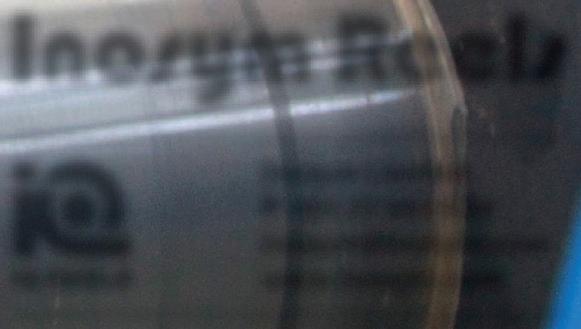
Wire feeder with adjustable lift
U.S. Patent No.: 12,343,827
Patent date: July 1, 2025 Filed: March 1, 2022
Assignee: Illinois Tool Works Inc., USA
Inventors: Brian Ott, Adam Schmitz
A welding system has a wire feeder having an adjustable lift point. The wire feeder includes a wire supply source configured to supply welding wire, a wire drive assembly configured to feed wire to a welding gun from the spool, and a support base. The wire supply source and the wire drive assembly are supported by the base. A lift member is connected to the support base and is selectively movable in at least one direction with respect to the support base to enable adjustment of the lift point of the wire feeder.
Wire feed device and method for feeding wire
U.S. Patent No.: 12,343,826
Patent date: July 1, 2025 Filed: Feb. 4, 2020
Assignee: Alexander Binzel Schweisstechnik GmbH & Co. KG, Germany
Inventors: Sascha Rose, Udo-Ralf Kessler, Matthias Bender, Ralf Hellmig
The invention relates to a wire-feed device for conveying a wire and to a method for feeding wire using a wire-feed device, in particular for a thermal joining apparatus, having at least one a drive element which can be operated by a feed drive and can be placed against a wire guided through the wire-feed device, exerting a contact pressure, in order to transfer drive movement by friction.
Wire coil stabilizer and saw guide
U.S. Patent No.: 12,343,810
Patent date: July 1, 2025 Filed: Sept. 9, 2024
Assignee: none listed
Inventor: Chris Capkovic Sr.
A wire coil stabilizer and saw guide for cutting jump rings from a coil of wire including a block with a half circle groove having a bottom slot for holding a coil of wire threaded on a jeweler’s saw blade. A tracking plate with a slit aligned with the bottom slot for compressing the coil of wire in the groove and aligning a jeweler’s saw blade with the coil of wire.
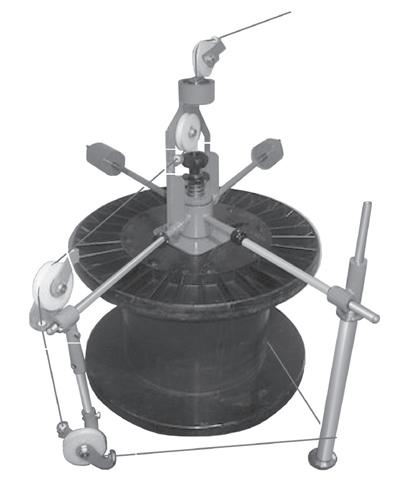
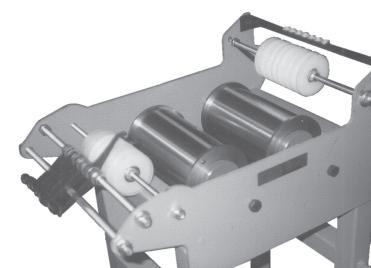





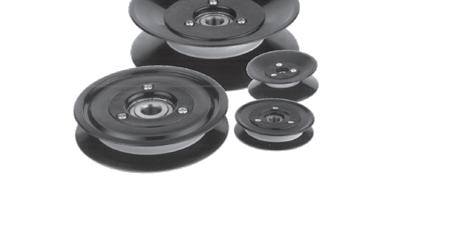
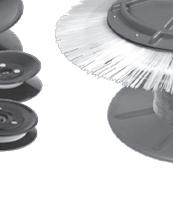

U.S.-based Teknor Apex has launched an extensive line of non-DEHP Apex® and Flexalloy® PVC compounds to provide a global-compliant solution for medical device producers.
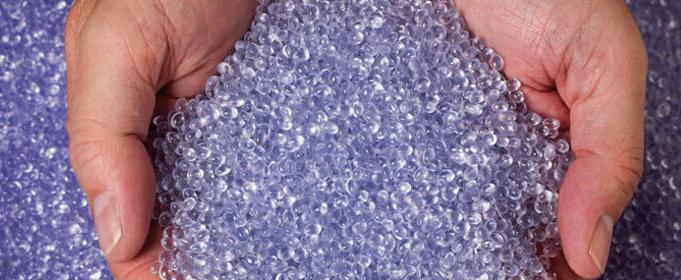
Per the company, these compounds are available in ten series with Shore A hardness from 50–90 for Apex and 40–80 for Flexalloy. All grades are ADM-, BPA-, and latex-free, supporting demanding sterilization procedures such as ETO, gamma, and E-beam with strong color hold. Standard blue formulations are offered, and custom color, opacity and functional features are available.
The portfolio is engineered for medical device tubing, catheter sets, cable jacketing, oxygen masks, mouthpieces, connectors, caps, and resuscitation products. The product line offers advanced alternatives to traditional plasticizers: TOTM, ATBC, and DOTP blends, each delivering a balance of low extractability, bio-compatibility, cost-efficiency, and compatibility with sensitive plastics like PC and ABS.
Apex and Flexalloy compounds are compliant with global regulations, including EU REACH-SVHC, EU-MDR, ISO 10993-5, RoHS, and California Proposition 65. Most ingredients are FDA-listed and all grades are supported with USP Class VI data when needed. Teknor Apex provides worldwide support with full documentation for device OEMs and contract manufacturers navigating global submission and compliance requirements. The launch aims to assist the market’s shift away from phthalate-based chemistries while supporting rapid development cycles, regulatory mandates and global distribution.
Contact: Teknor Apex, tel. 401-725-8000, info@teknorapex.com, www.teknorapex.com.
U.S.-based Chroma Color Corporation has introduced ChromaXLPEUltra, a next-generation line of high-intensity color concentrates engineered for advanced crosslinked polyethylene (XLPE) applications in wire and cable manufacturing.
Per the company, the new line was developed for use in demanding environments, including construction, mining, refineries, aerospace, nuclear and hydrogen plants, transcontinental power transmission, and electric vehicle/ transportation sectors. ChromaXLPEUltra products use a proprietary blend of pigments, carrier resins, and additives to provide vibrant and consistent color at reduced loadings—just 1–2%—while upholding critical mechanical properties even with VW-1 vertical flame ratings.
Each concentrate is suitable for a full range of fire-resistant XLPE constructions, from 80/20 to 50/50 FR blends, and can be used with low-smoke, zero-halogen XLPE compounds. The line meets ROHS, REACH, and HMF regulated substance requirements, and includes UV-stable grades for evolving automotive, EV, and hydrogen applications. ChromaXLPEUltra further complies with key UL 746C and ASTM standards for vertical flame resistance (VW-1), supporting both safety and reliability in finished cable products.

By enabling high-performance pigment systems with lower concentrate requirements, the XLPEUltra line helps boost processing efficiency, enable cost savings in material use, and achieve sustainable outcomes. The series is positioned to support the ongoing evolution of wire and cable insulation in sectors where durability, compliance, and color identification are essential.
Contact: Chroma Color Corporation, tel. 815-385-8100, www.chromacolors.com.
U.K.-based Metalube has launched Lubricool™ 955, a next-generation water-based emulsion lubricant engineered specifically for copper wire drawing, aiming to extend production uptime, combat copper soap formation, and advance industry moves toward cleaner operations.
Per the company, Lubricool™ 955’s formulation offers up to 90% less copper soap build-up compared to traditional lubricants—a breakthrough for wire plants grappling with frequent sump cleaning, wire breaks, and emulsion destabilization due to copper contamination. Field trials at a leading European wire producer showed over 14 months of uninterrupted operation with no required emulsion change, and laboratory tests demonstrated sustained lubricity and stability over a 266-day copper intake study.
Thermal stability and bacterial resistance are also improved, supporting reliable high-speed production with minimal service interruptions. The result is longer lubricant life, reduced downtime, more consistent wire surface quality and lower overall maintenance costs.
In addition to its technical and environmental advantages, Lubricool 955 is designed for compatibility with existing wire drawing systems, requiring no major process changes for adoption. This ease of integration helps manufacturers
quickly realize productivity gains while ensuring operational stability across both legacy production lines and modern high-speed facilities.
Metalube’s commitment to sustainability is embedded in its business: the company uses recycled packaging mate-
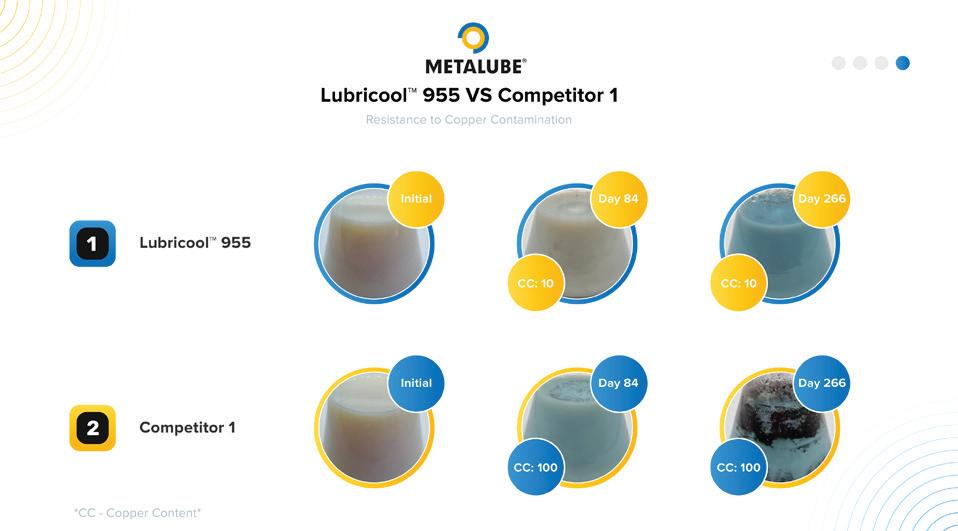
rials, alternative bio-based and biodegradable base oils where possible, and ensures all suppliers are ISO certified. Metalube has achieved the Gold EcoVadis rating for environmental and social performance, and it has invested in solar energy, energy-efficient production, and local green
The TR45 air/hydraulic cold welder. Powerful, mobile, energy-efficient. For nonferrous trapezoidal material up to 45mm2 (0.0697sq. in.) cross-sectional area.

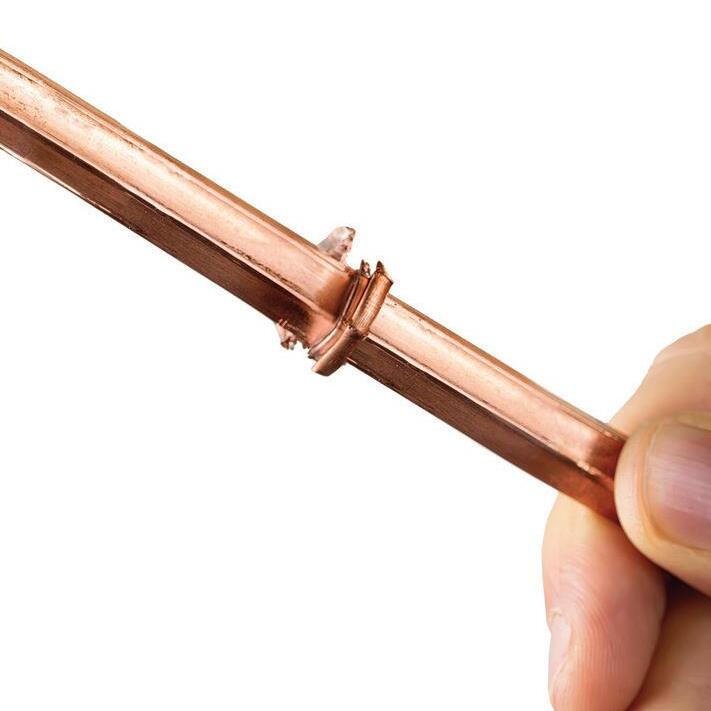
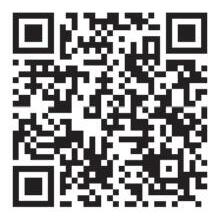
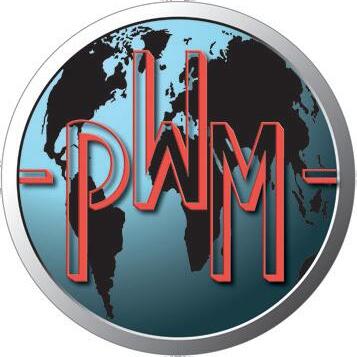
initiatives such as tree planting in the U.K. and with the World Land Trust globally.
The company views Lubricool™ 955 and its broader lubricant range—including products for aluminum and ferrous wire, as well as chain and rod lubrication—as a step toward a greener, more reliable, and efficient wire industry.
Contact: Metalube, tel. +44-161-777-9970, info@metalube.co.uk, www.metalube.co.uk.
U.S.-based Insulated Wire Inc. has expanded its product line with the RE-FLEX™ hand-formable coaxial cables, addressing the needs of RF installers who require durable, easily shaped performance without the drawbacks of semirigid formats.
Per the company, RE-FLEX cables are offered in 0.085”, 0.141”, 0.235”, and 0.325” diameters (RF085, RF141, RF250, RF325) and use a unique lamination process with a double shield and a solder-free tin/alloy plated braid. This construction resists micro-fractures during repeated hand-bending, unlike many traditional conformable and semi-rigid RG cable types. RE-FLEX cables maintain their formed shape, reduce physical stress on connectors, and enable quick custom routing—especially valuable in high-density or field retrofit work.
RF085 and RF141 deliver low-loss signal transmission up to 60 GHz while supporting a broad array of standard and advanced connectors such as SMA, TNC, N, SMP, SMPM, 2.92mm/K™, 2.4mm, and 1.85mm/V™. For high-power or rugged environments, RF250 and RF325 options offer compatibility with SMA, TNC, N, SC, and HN connectors. A standard FEP™ jacket can be specified for additional environmental and chemical protection, expanding suitability for aerospace, military, test, and industrial applications. IW offers RE-FLEX™ starter kits for prototyping and bundled assembly lengths for agile system design.

repeatable bendability allows engineers to optimize layouts quickly, making them ideal for rapid deployment and precision system integration.
The company’s broader portfolio includes extremely low-loss and microwave cables rated up to 110 GHz, high-performance 75Ω broadcast coax, and comprehensive custom solution support, ensuring that RE-FLEX integrates seamlessly into modern high-reliability RF and data acquisition systems worldwide.
Contact: Insulated Wire Inc., tel. +1-631-847-8880, sales@insulatedwire.com, www.insulatedwire.com.
Loose-tube fiber cable remains dependable solution for last-mile/campus backbones
The ALTOS® loose tube gel-free fiber optic cable from U.S.-based Corning Optical Communications continues to be widely installed in last-mile distribution and campus backbone networks for more than a decade.


Per the company, ALTOS cables utilize a flexible buffer tube design that houses up to 288 optical fibers—most commonly single-mode, but also available in multi-mode configurations. The reduced outer diameter and lightweight construction simplify handling and installation, while abrasion-resistant markings on the jacket permit fast field identification. FastAccess® technology enables safer, quicker jacket removal for efficient splicing, reducing risk to both fiber and installer. The innovative S-Z stranded design further isolates fibers from external stresses, and provides excellent mid-span access critical for complex routing or network expansion projects.
A central strength member with water-resistant, gel-free filling offers mechanical robustness, protecting fibers from moisture, temperature swings, and crush loads. The cable’s UV-resistant black polyethylene jacket withstands direct burial, aerial lashing, and tray mounting. Dry water-blocking technology further simplifies end preparation and splicing by eliminating messy gels. The loose tube architecture supports long-distance installations with minimal bending loss for, and permits either ribbon or single-fiber splicing strategies.
Beyond durability and standards compliance, ALTOS® cables are valued for their scalability, supporting smooth network growth without costly overhauls. Their installer-friendly design reduces deployment time and opera-
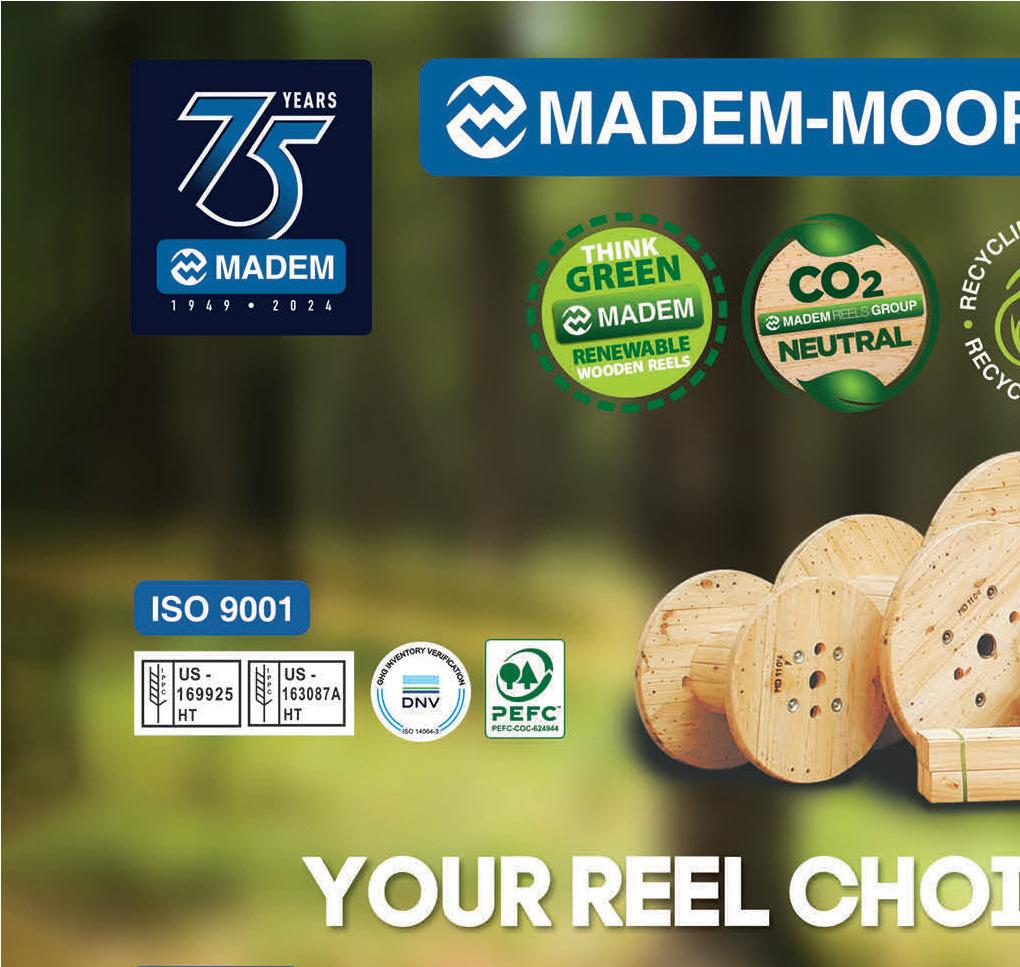
tional expense, making them a preferred choice for carriers and enterprises seeking to balance long-term performance, adaptability, and total cost of ownership
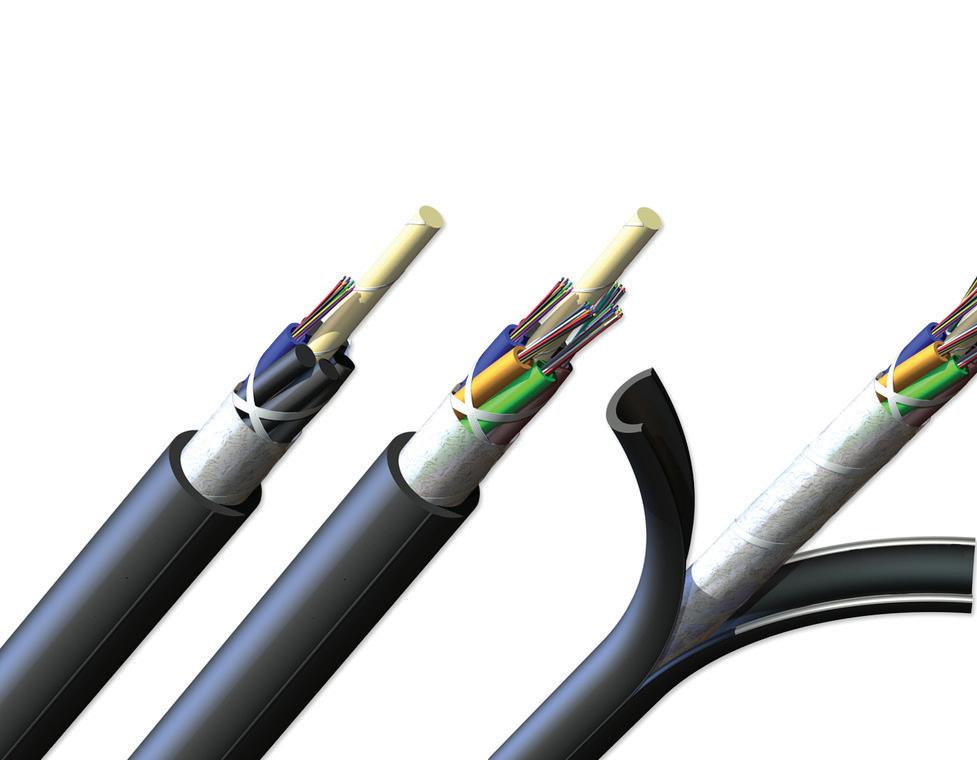
ALTOS cables comply with Telcordia GR-20, RUS PE-90 and major global standards. They are backward compatible with legacy connectors and termination points, serving as a backbone “workhorse” for metro, telco, power utility, school campus, and other infrastructure builds. The line is also available with armored and all-dielectric options to address varied installation hazards.
For large-scale fiber rollouts, Corning provides technical guidance and a network of certified installers.
Contact: Corning Optical Communications, tel. 828-901-5000, www.corning.com.


This section is part of an information agreement between Wire & Cable India (WCI), www.wirecable.in, and U.S.-based Wire Journal International.
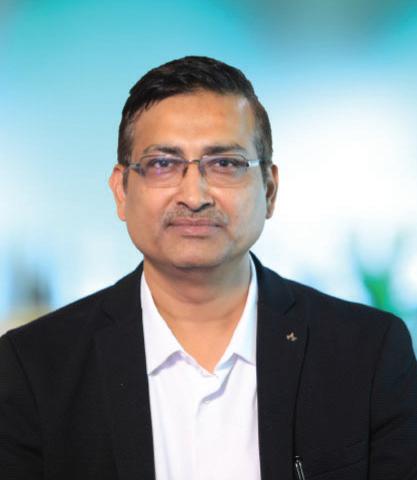
Mr. Anurag
Agarwal, CEO, Global Exports & New Businesses, Polycab India
In 2024, India witnessed a sharp rise in fire-related emergencies, with the Delhi Fire Service reporting 37% increase in fire-related calls as compared to previous years. A series of tragic incidents, including fires at a gaming zone in Rajkot, a firecracker factory in Harda, and a newborn baby care hospital in New Delhi, showcased the glaring inadequacies in the fire safety framework. These incidents have not only shaken public confidence but also revealed the critical need to address electrical fire hazards, which remain a leading cause of such disasters.
In Mumbai, nearly 70% of fire outbreaks are attributed to faulty electrical systems in buildings. The problem stems from the widespread use of substandard electrical materials, poorly maintained infrastructure, and outdated systems. Issues like subpar wiring, overloaded circuits, and inadequate insulation lead to short circuits and devastating fires.
With this alarming backdrop, it is crucial to examine India’s existing fire safety regulations and explore how they can be strengthened to prevent such tragedies.
India’s fire safety regulations are primarily guided by the National Building Code (NBC), which provides comprehensive guidelines for fire prevention, life safety, and fire protection measures in buildings. It mandates the installation of fire detection systems, alarm systems, sprinkler systems, and fire extinguishers in all high-rise buildings, commercial complexes, and public spaces. Local building bylaws, formulated by states, are
often expected to incorporate these provisions to address region-specific needs.
In addition to the NBC, the Electricity Act, 2003, and the Central Electricity Authority (Measures Relating to Safety and Electric Supply) Regulations, 2010, emphasize electrical safety to minimize the risk of fires caused by faulty wiring or electrical systems. The Maharashtra government recently introduced a fire safety bill that requires high-rise buildings with 22 floors or more to appoint dedicated fire safety officers
and supervisors. Furthermore, residential and industrial establishments involved in hazardous activities are now mandated to adopt Internet of Things (IoT)-enabled fire safety mechanisms for enhanced protection.
While India has a robust framework for fire safety, significant gaps in policy enforcement and implementation undermine its effectiveness. Fire audits, meant to ensure compliance, are often conducted irregularly or superficially, leaving many buildings vulnerable to potential hazards. The lack of a standardized mechanism to monitor and upgrade aging electrical infrastructure further exacerbates the risk of electrical fires. Additionally, the use of substandard materials, inadequate maintenance, and insufficient training for fire safety personnel are common issues that compromise safety standards.
To address these gaps, India needs a comprehensive overhaul of its fire safety framework with a stronger emphasis on electrical safety. Mandatory periodic electrical inspections by certified professionals should be enforced across all residential, commercial, and industrial properties. Building codes must mandate the use of fire-resistant wiring, advanced circuit breakers, and modern electrical systems that minimize the risk of overload and short circuits. Training programs for electricians and facility managers on fire safety best practices can significantly improve compliance
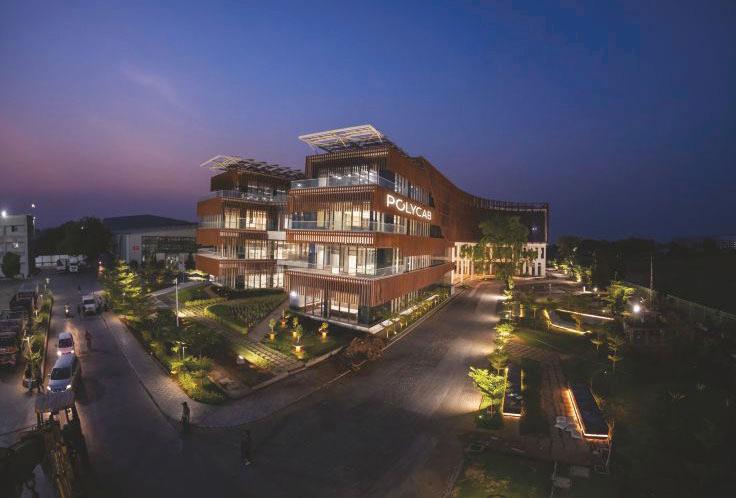
at the ground level. Moreover, state fire departments must be equipped with advanced firefighting equipment and trained personnel to handle electrical fires, which require specialized techniques.
Public awareness campaigns also play a pivotal role in fostering a culture of safety. People must be educated about the dangers of substandard electrical materials, benefits of quality wires and cables and the importance of adhering to safety protocols. Incentivizing property owners to adopt fire safety measures through insurance benefits or tax rebates can further encourage compliance. Additionally, leveraging technology, such as IoT-enabled sensors that detect electrical faults and potential fire hazards, can offer
real-time monitoring and prevent disasters before they occur.
Building a Safer Future
Looking ahead, India’s rapid urbanization and industrial growth make it imperative to prioritize fire safety as an important component of sustainable development. Stricter regulations, better enforcement, and a collective commitment to safety can help prevent tragedies. By addressing the root causes of fire accidents, particularly electrical safety lapses, India can protect lives, safeguard property, and build public trust in its fire safety systems. The time to act is now— because the cost of inaction is measured in lives lost and communities devastated.



Wire & Cable India: As infrastructure projects like metro rails and smart cities expand with stricter fire safety protocols, which of your current compounds are specifically engineered to meet cable manufacturers’ fire performance requirements, and what cable types or sectors are they most suited for?
Arun Kumar Sahu: Shakun Polymers offers a range of compounds tailored to meet the stringent fire performance demands of infrastructure projects like metro rails and smart cities. Our HalogenFree Flame Retardant (HFFR) compounds, such as Shakun’s ECOTEK series grades, are engineered for excellent fire safety, low smoke emission, and reduced toxicity—critical for high-risk environments. These compounds are ideal for power cables, telecommunication cables, and fibre optic cables, serving sectors like transportation, urban infrastructure, and energy distribution. These products align with international fire safety standards, ensuring reliability and performance in demanding applications.
In an exclusive interview with Wire & Cable India, Mr. Arun Kumar Sahu, General Manager at Shakun Polymers, highlights the company’s ECOTEK series of HFFR compounds– designed for critical infrastructure such as metro rails, smart cities, power, telecom, and fibre-optic cables. These formulations employ ATH/MDH mineral fillers to achieve ~35 % limiting oxygen index (LOI) and a 300 °C thermal index, while supporting extrusion in tropical climates. Their silane-crosslinkable HFFR grades enable high-speed extrusion and compatibility with e-beam processes, ensuring mechanical integrity and efficiency.
WCI: The transition toward halogen-free solutions continues in the cable industry despite processing challenges in tropical manufacturing environments. How are you leveraging halogen-free flame retardants, mineral fillers like ATH or MDH, or phosphorus-based systems in your fire-safe formulations to align with cable manufacturers’ processing capabilities and fire safety needs?
AKS: The cable industry’s shift toward halogen-free solutions is driven by safety and environmental concerns, but processing challenges in tropical climates, such as high humidity, require robust formulations. Shakun Polymers leverages halogen-free flame retardants and mineral fillers like Aluminium Trihydrate (ATH) and Magnesium Di hydroxide (MDH) to create fire-safe compounds. For example, ECOTEK series – Thermoplastic/Thermosetting products incorporates high loadings of flame-retardant mineral fillers, achieving a Limiting Oxygen Index (LOI) of about >35% and a temperature index of 300°C. These fillers release water vapor at high temperatures, cooling the material and suppressing flammable gases.
While phosphorus-based systems are not explicitly mentioned, our formulations likely include special additives to enhance fire performance while maintaining processability, which further makes our compounds user-friendly.
WCI: Cable manufacturers report varying levels of success with newer fire-resistant compounds in highspeed production environments. How do your fire-retardant compounds perform in high-speed extrusion or when used with crosslinking processes like e-beam or silane grafting?
AKS: Our fire-retardant compounds are optimized for highspeed extrusion and compatibility
Cable manufacturers praise our compounds for meeting international fire safety standards and their processability in high-speed extrusion, ensuring reliable performance in real-world applications.


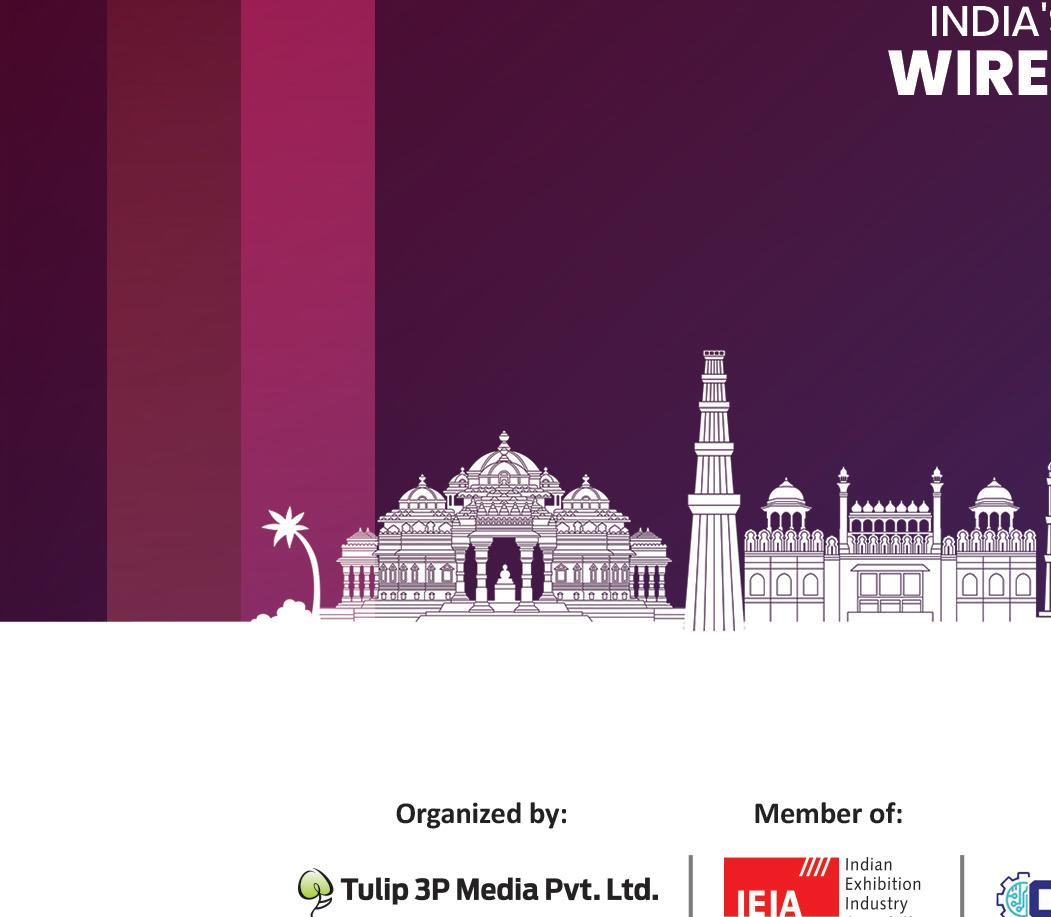


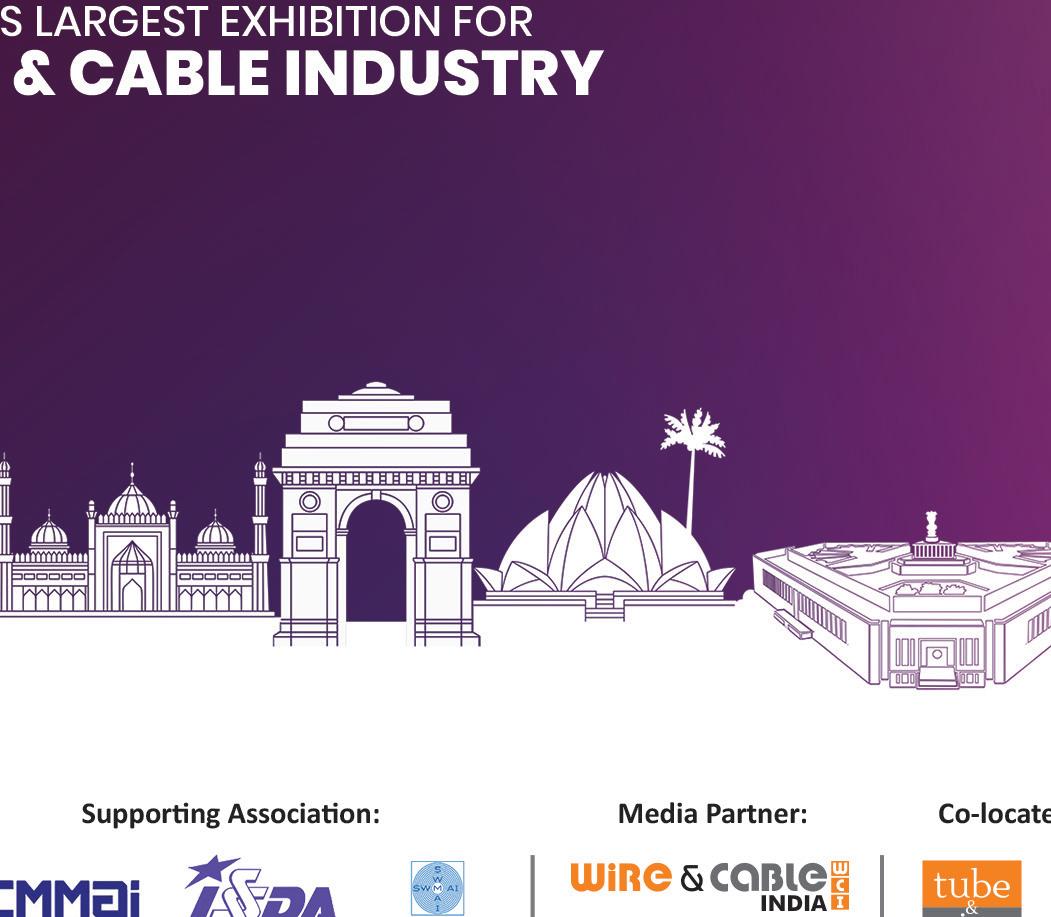



Our investments are focused on semicon compounds, specialty XLPE compounds, EPR, EPDM and rubber-based Silicon compounds. This investment plan will further help us increase our presence in domestic and international markets.
with crosslinking processes such as e-beam and silane grafting. We have range of silane cross-linkable HFFR compounds, excelling in high-speed production, maintaining dimensional stability, and minimizing defects like drooling. By leveraging reactive extrusion technology, our compounds integrate seamlessly with crosslinking methods, enhancing mechanical and thermal properties. This ensures cable manufacturers achieve both efficiency and uncompromised flame retardancy, meeting the demands of modern production lines.
WCI: Metro rail projects increasingly specify low smoke and toxicity requirements alongside mechanical durability standards. What breakthroughs have you made to help cable manufacturers in reducing smoke density and toxicity without compromising mechanical integrity in LSZH compounds?
AKS: Shakun Polymers has pioneered advancements in Low Smoke Zero Halogen (LSZH) compounds that can be applicable for metro rail specifications. Our ECOTEK series – Thermoplastic/ Thermosetting products compound, formulated with thermoplastic polymers and inorganic fillers, significantly reduces smoke density and toxicity during combustion. Cables manufactured using these compounds, tested to various flammability standards IEC 603321, 2 and 3 etc, ensures low smoke generation while retaining flexibility, tensile strength, and durability. Our R&D efforts focus on optimizing the balance between flame retardancy and mechanical integrity, enabling cable manufacturers to meet both safety and performance requirements in demanding applications.
WCI: The tender specification process for infrastructure projects often requires collaborative material development. Can you share a recent example where you developed or customized a fire-retardant compound for a cable manufacturer’s specific project or tender requirement?
AKS: Shakun Polymers excels in collaborative material development for infrastructure project tenders. A notable example is the development of type ST-12 compound as per IEC 60840, which required meeting stringent performance criteria. This project involved close collaboration with a cable manufacturer to ensure the compound met tender specifications, demonstrating our ability to deliver tailored solutions for specific project needs.
WCI: Circular economy principles are reshaping material selection processes throughout the value chain. How are you addressing environmental concerns in fireretardant compounds—whether through halogen-free formulations, recyclable blends, or bio-based additives?
AKS: Shakun Polymers will align itself with circular economy principles as the industry evolves by offering halogen-free formulations that eliminate toxic halogen gas emissions during combustion. Our compounds are RoHS compliant and meet REACH regulations, ensuring environmental responsibility. While recyclable blends and bio-based additives are not currently the industry standard nor we witness demands as of today. However, our R&D team is well equipped to serve such requirements in exploring sustainable alternatives to further
reduce environmental impact, supporting the cable industry’s shift toward greener materials in coming future.
WCI: The gap between laboratory certification and field performance remains a discussion point in industry forums. What kind of feedback do you typically receive from cable manufacturers regarding fire performance in terms of what works well, and what still needs improvement?
AKS: Cable manufacturers praise our compounds for meeting international fire safety standards and their processability in highspeed extrusion, ensuring reliable performance in real-world applications. Our compounds are designed to withstand harsh conditions like elevated temperatures, higher humidity, and mechanical stress. We are addressing this by refining formulations to enhance long-term stability, bridging the gap between lab certification and field performance.
WCI: Material science innovation continues driving performance advances while addressing processing challenges. From a compounder’s perspective, what’s the next big leap needed in fire-safety material science to meet the cable industry’s evolving needs?
AKS: The next leap in firesafety material science lies in multifunctional compounds that combine superior flame
We have a high-performance, oil-resistant SHF2 compound designed for offshore, marine, and oil & gas cable applications.
retardancy with enhanced thermal stability, mechanical strength, and sustainability. At Shakun Polymers, we are committed to driving these advancements, ensuring our compounds meet the cable industry’s future safety and environmental challenges.
WCI: What kind of growth are you expecting for your company?
AKS: In addition to our existing production capacity of about 50,000 MT per annum, we have done investments to bring our capacities to 1,00,000 MT per annum. Our investments are focussed on Semicon compounds, specialty XLPE compounds, EPR, EPDM and rubber-based Silicon compounds. This investment plan will further help us increase our presence in domestic and international markets. Currently, our capacities are equally divided for local and export business and we anticipate to continue this perfect balance as we are witnessing
huge demands from India and other regions, both.
WCI: Are there any speciality solutions offered by Shakun Polymers?
AKS: We have a highperformance, oil-resistant SHF2 compound designed for offshore, marine, and oil & gas cable applications. As a silane-grafted, moisture-curable, halogen-free, and flame-retardant material, it meets IEC 60092-360 standards for inner sheathing and jacketing in power, control, and instrumentation cables. Key features include Oil Resistance, Zero Halogen & Low Smoke compliant with IEC 60754-1, 2, Flame Retardancy, High Thermal Stability and Non-Corrosivity. Our portfolio also includes specialized grade for Photo Voltaic Insulation and Sheathing application. It is a high-performance, zero halogen, flame-retardant compound designed for solar photovoltaic (PV) cables,
supporting the global push for sustainable energy. Developed through R&D starting in 2017 and launched in 2020, this compound, paired with the high-performance catalyst, meets stringent TUV standard when conducted on cable. It offers durability, excellent Processability, and global acceptance from territories like Brazil, Turkey, the Middle East, Europe, and South Africa.
WCI: What is your perspective on India’s power sector growth?
AKS: India’s power demand is projected to double from 2023 to 2030, with the Central Electricity Authority forecasting a peak demand of 366 GW by 2030, up from 243 GW currently, showing an increase of 50%. This is alongside plans to increase power generation capacity to 900 GW. The cable industry is poised for significant growth, and we have planned substantial investments to capitalize on this opportunity.
Geba Cables has launched a 40,000 sq. ft state-of-the-art manufacturing facility in Bengaluru.
Geba Cables has announced the launch of its state-of-theart manufacturing facility in Bengaluru. The new 40,000 sq. ft facility is aimed at addressing the increasing demand for high-quality cables and wires in the rapidly expanding market.
The inauguration ceremony was attended by industry stalwarts like Patrick Pilz, Partner at Lafayette Mittelstand Capital, Mr. Rajesh Nath, Managing Director of VDMA India, Mr. Dharmendra G C, Senior General Manager at Schneider Electric, and Mr. Manimaran D, Deputy General Manager-Supply chain, APAC Electrical & Electronics at OTIS Elevator.
Commenting on the launch, Dr. Girish Rao, Managing Director-Asia, Geba Cables said, “ This new facility is a symbol of our growth, ambition and our belief in the future. As we cut the ribbon today, we are not just opening a plantwe are opening doors to new opportunities, to over 100 new job creations and to technological excellence.”
Geba Cables, formerly a part of Gebauer & Griller’s Elevator business unit, has become part of the German PE
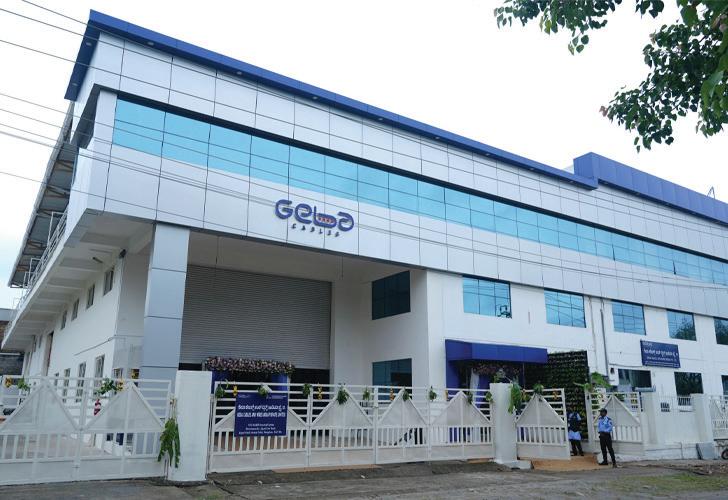
company Lafayette Mittelstand Capital. Headquartered in Vienna, the company has a footprint in Vienna, Slovakia, and India. The company deals in the cable and harness business, along with PVC ribbons and busbar. n

WAI MEMBERS seeking positions are entitled to free “Position Wanted” classified ads.
CLASSIFIED AD RATES: • $1.30 per word for WJI and on-line classifieds at wirenet.org (20-word minimum). • Blind box numbers, add $25. • Boldface headlines, add $6 per line (up to 18 characters per line). Specify category.
WANTED: Manufacturer’s Representative for Europe
United Wire, a U.S.-based manufacturer of precision cold-rolled flat & shaped wire for medical, industrial, and specialty applications, is seeking an experienced manufacturer’s representative based in Europe. We specialize in custom-made flat, square, and shaped wire for demanding markets including medical devices, aerospace, cable assemblies, spring making and more. United Wire offers competitive advantages including small-batch flexibility, state of the art equipment, & exceptional customer service.
We’re looking to expand our international presence and are seeking a rep with:
• Strong connections in the medical device or industrial manufacturing sectors
• Technical sales experience
• Ability to communicate customer needs clearly and professionally Interested? Please contact us at bob@unitedwirecompany.com to learn more.
AA ENTERPRISE. México.
Proveedores e soldadoras eléctricas y manuales; impresoras y discos; cilindros, bandas y anillos para recocedores, bobinas/ carretes de plástico y acero; carretes p/ enmalladoras; bandas para caterpillar; tapes; conos y anillos de cerámica y tungsteno p/estiradoras; maquinaria p/ producción; cabezas de extrusión, etc.ayala1953@gmail.com.
BLIND BOX INFO: Address Blind Box responses to: WJI, Box number (as it appears in print or on-line), 71 Bradley Road, Suite 9, Madison, CT 06443-2662 USA.
PAYMENT POLICY: All ads must be pre-paid.
DEADLINES: Copy is due a full month in advance. Contact: classified@wirenet.org for more details.
FERROUS WIRE HANDBOOK.
This 1,168 page, hard-cover, indexed publication is a definitive industry resource for ferrous wire, a reference tool for those in the steel wire or manufacturing, engineering or operations sectors. 36 chapters cover many of the equipment types, processes, and specialty applications of steel wire manufacturing. The book begins with a history of the steel industry and its evolution, followed by details on: continuous casting; controlled rod cooling; rod defects; pickling and coating; mechanical descaling; deformation in cold drawing; wiredrawing theory, machinery and finishing equipment; lubrication; heat treatment; stress relief; annealing; oil tempering; patenting; corrosion; galvanizing; statistical process control; bridge rope and strand; nails, barbed wire, mechanical springs. The price is $235, $195 for WAI members. Go to wirenet.org and click on The WAI Store.
WAI’S ELECTRICAL WIRE HANDBOOK, PART 3. The revised Electrical Wire Handbook has been divided into 3 handbooks: Part 1: Wire and Cable Production Materials, Part 2: Wire and Cable Production Processes, and Part 3: Types of Cables. The goal of the books is to provide basic but meaningful information to those people working in the wire and cable industry-especially those who are new to the field. The price is $45, $25 for WAI members. Buy at wirenet.org and click on The WAI Store.
THE SMALL SHOP. This book, 327 pages, by Gary Conner, the author of Lean Manufacturing for the Small Shop, describes Six Sigma and its use by smaller companies. Published by the Society of Manufacturing Engineers, it shows the relationship between continuous improvement, lean, and quality, and focuses on implementation for operators, managers, and owners. It includes a supplementary CD-ROM. Price, $95, $75 for WAI members, plus shipping. Buy at wirenet.org and click on The WAI Store. n

•
•
Shannon Timme ext. 126 | stimme@wirenet.org
Anna Bzowski ext. 119 | abzowski@wirenet.org North America
Europe
U.K., France, Italy, Spain, Holland, Belgium, Denmark, & Scandinavia
Anna Bzowski ext. 119 abzowski@wirenet.org
Wire Journal International
71 Bradley Road, Suite 9 Madison, CT 06443-2662 USA Tel: 203-453-2777 www.wirenet.org sales@wirenet.org
Germany, Austria, & Switzerland
Detlev Melcher
Media Service Int.
Tel: 49-8801-914682
Fax: 49-8801-914683 dmelcher@t-online.de
